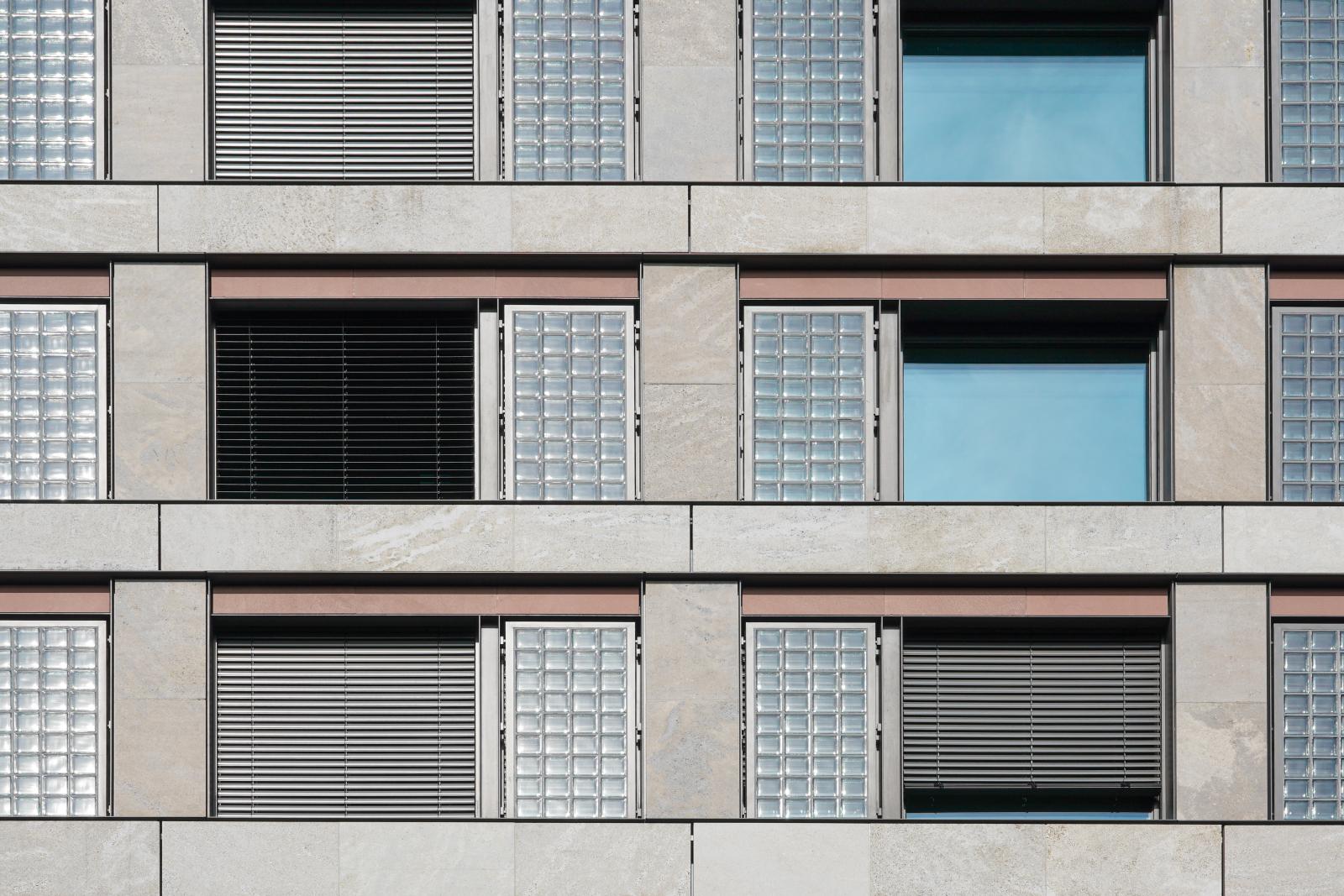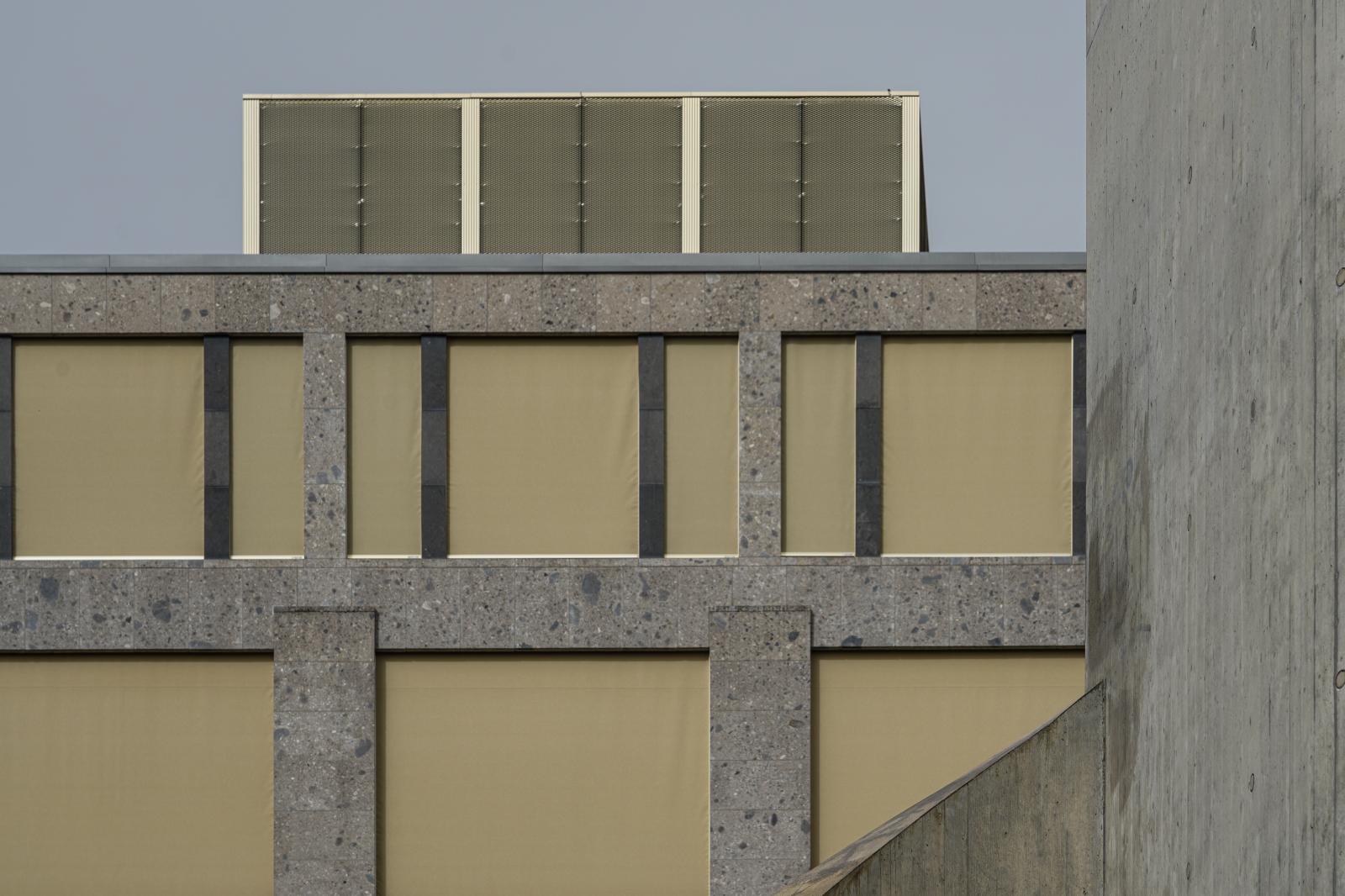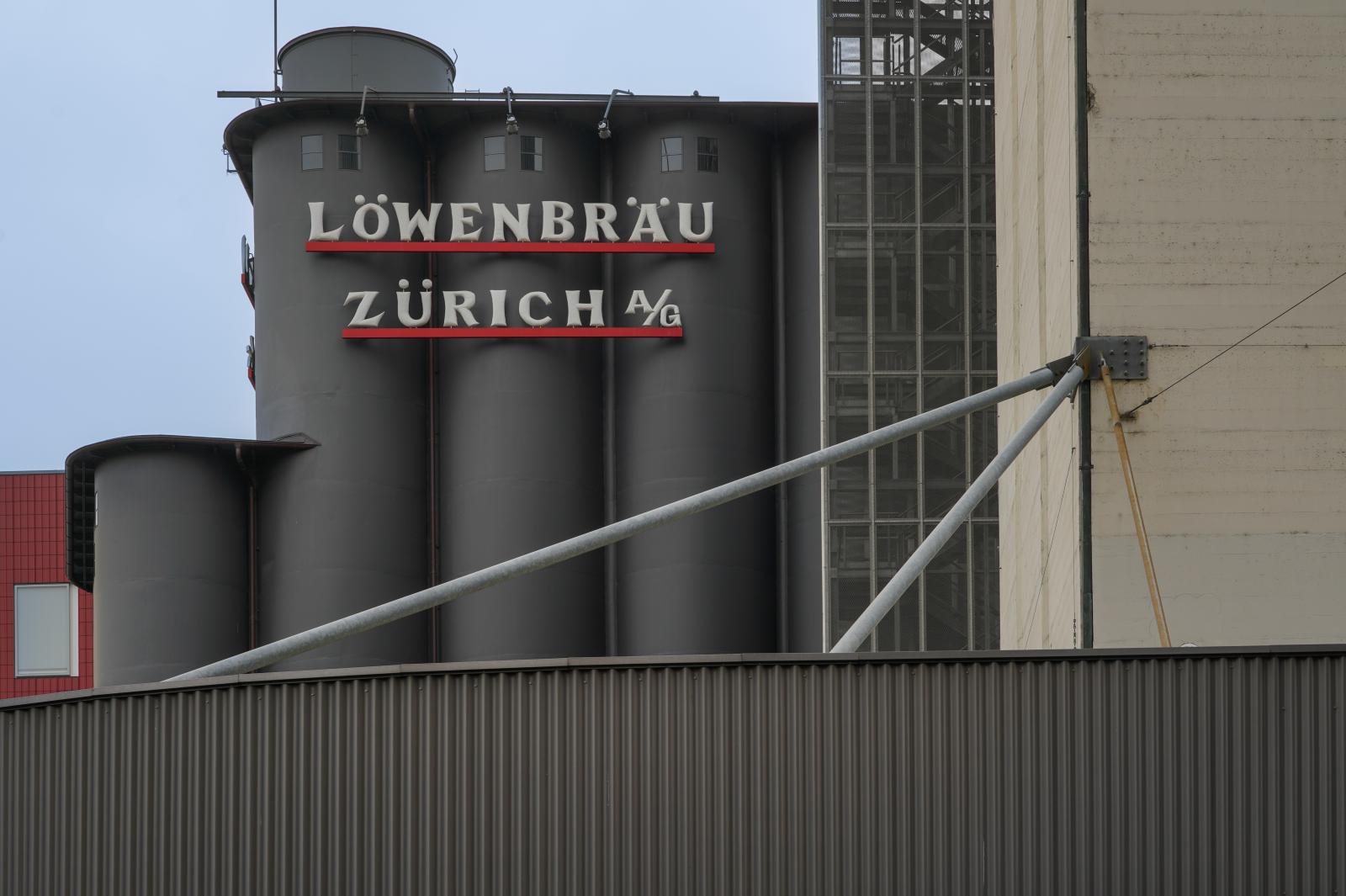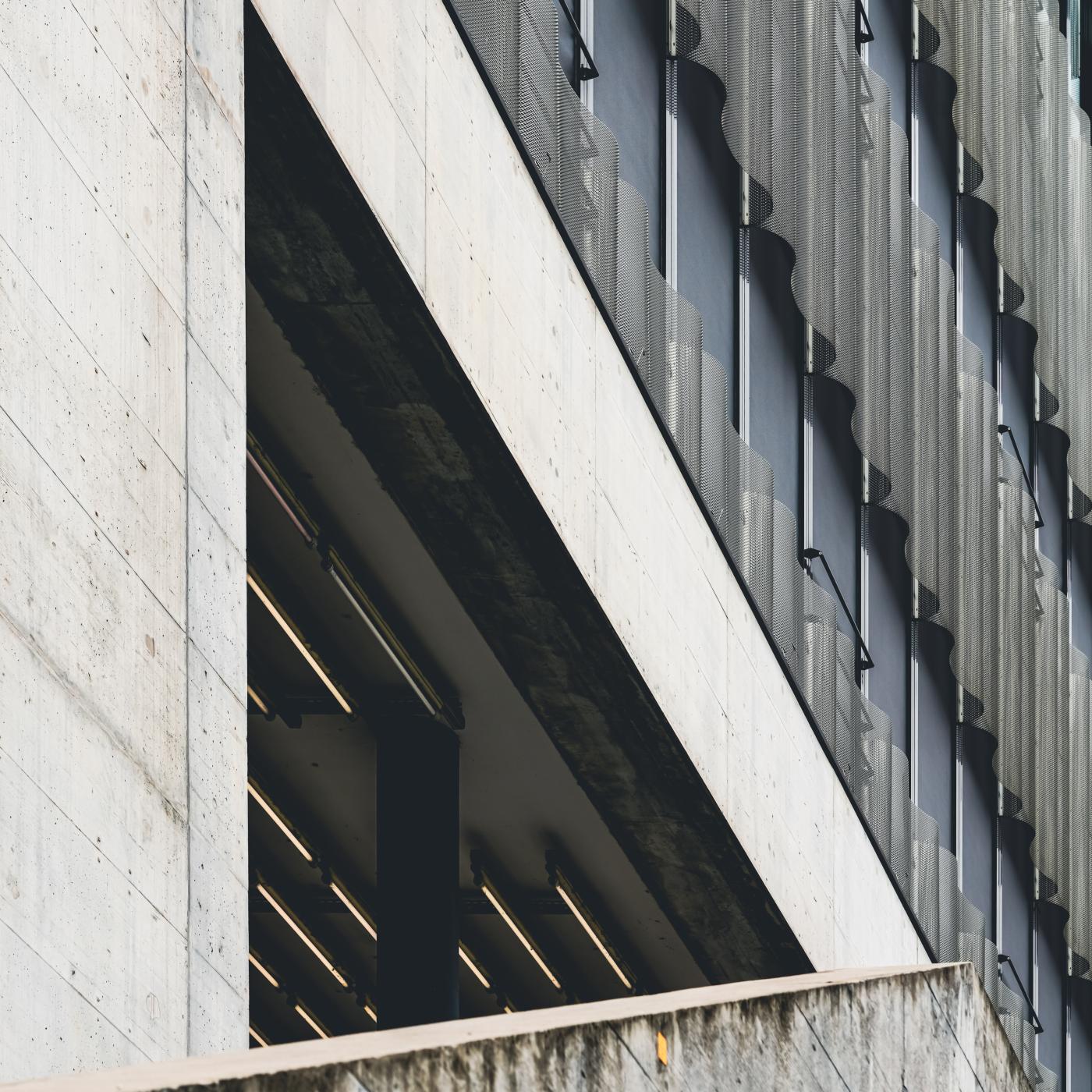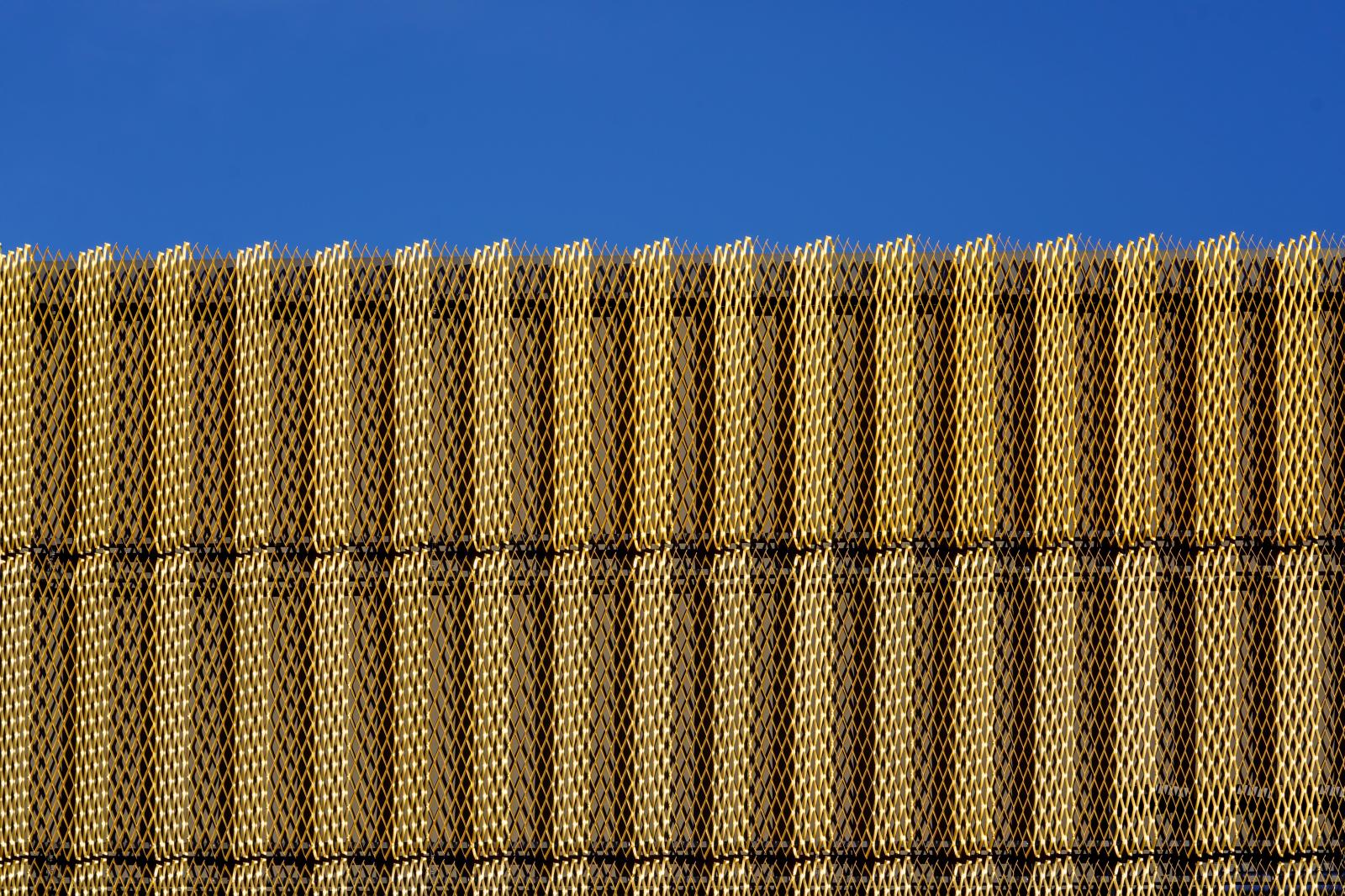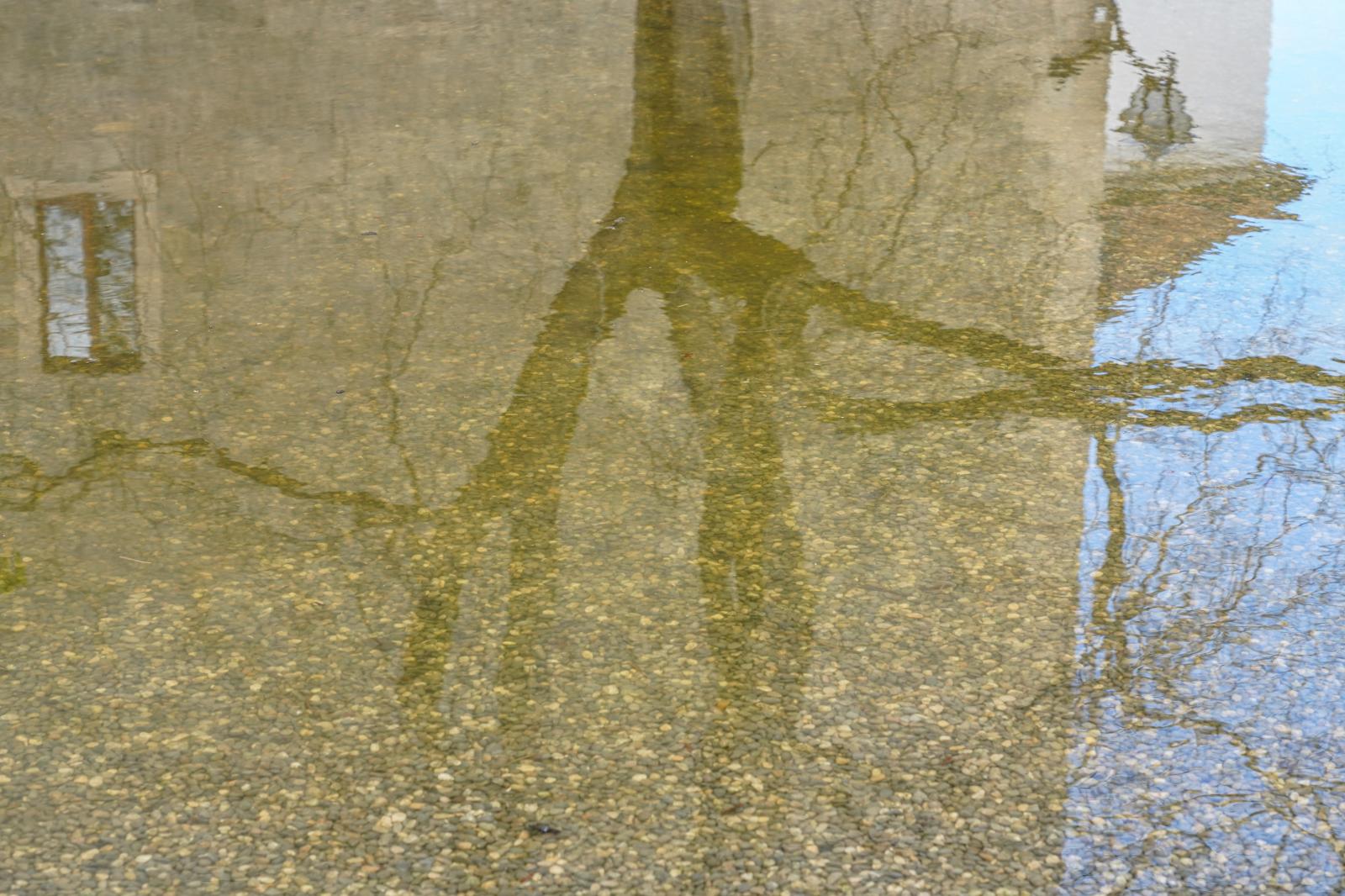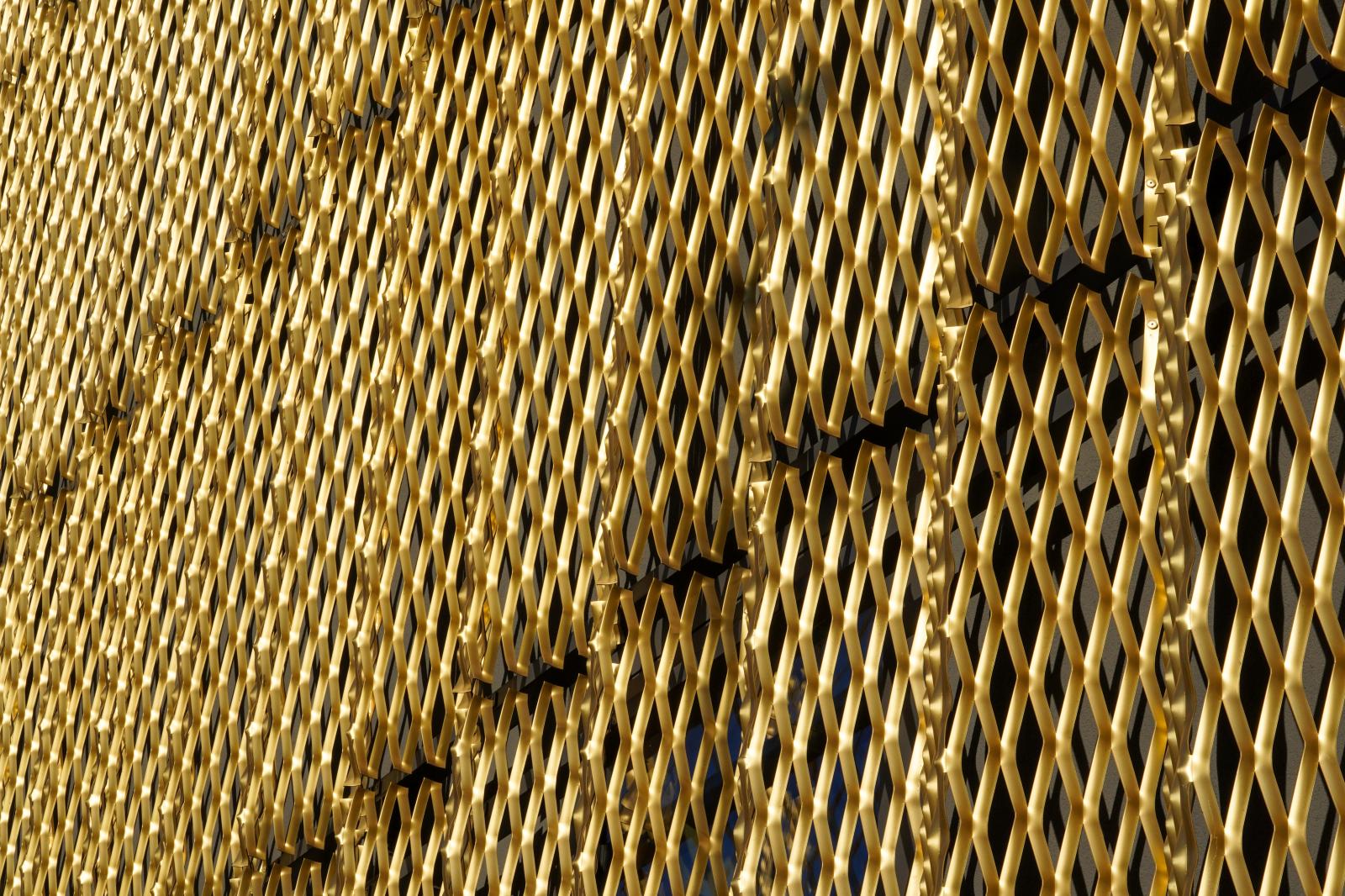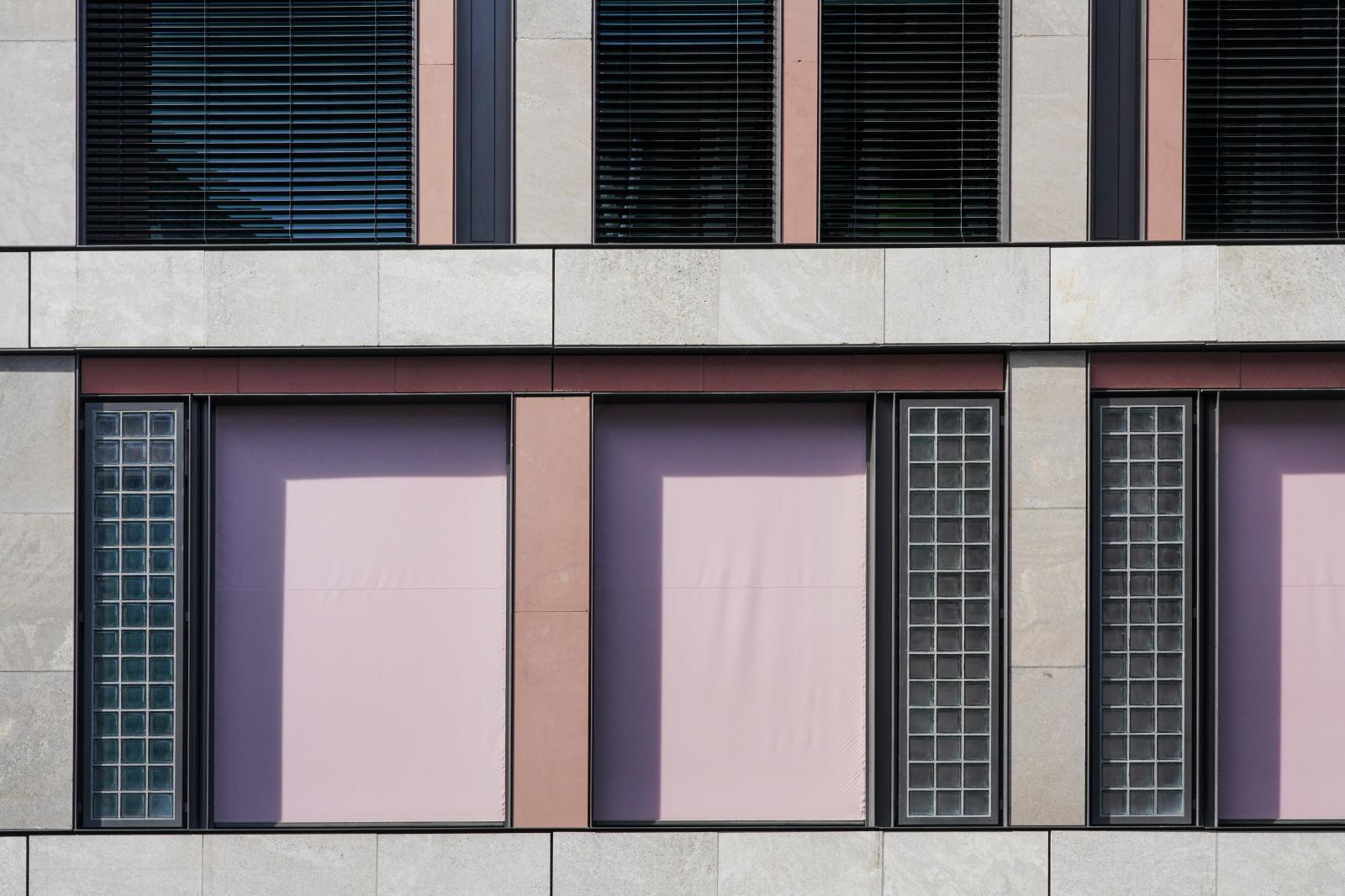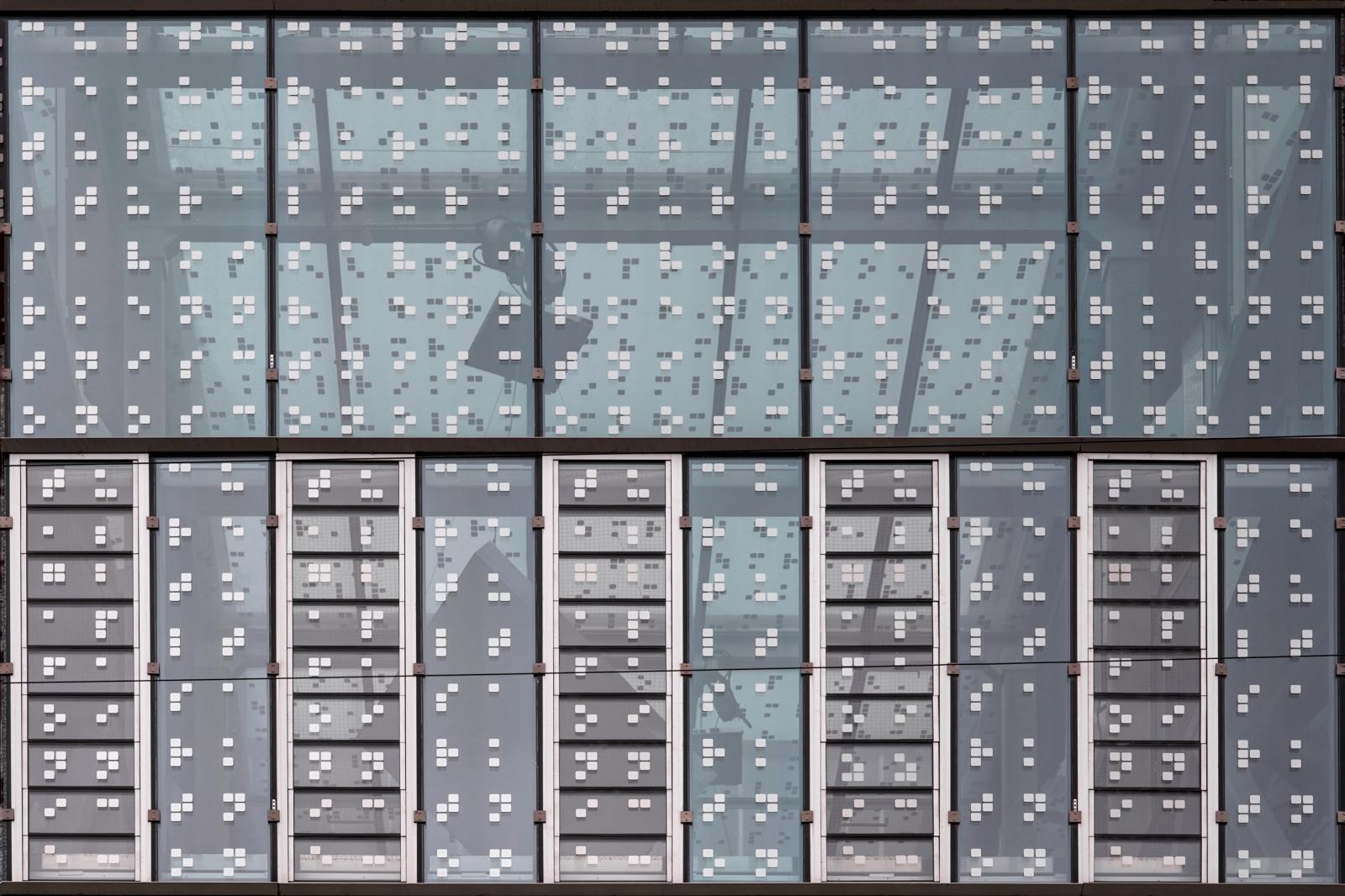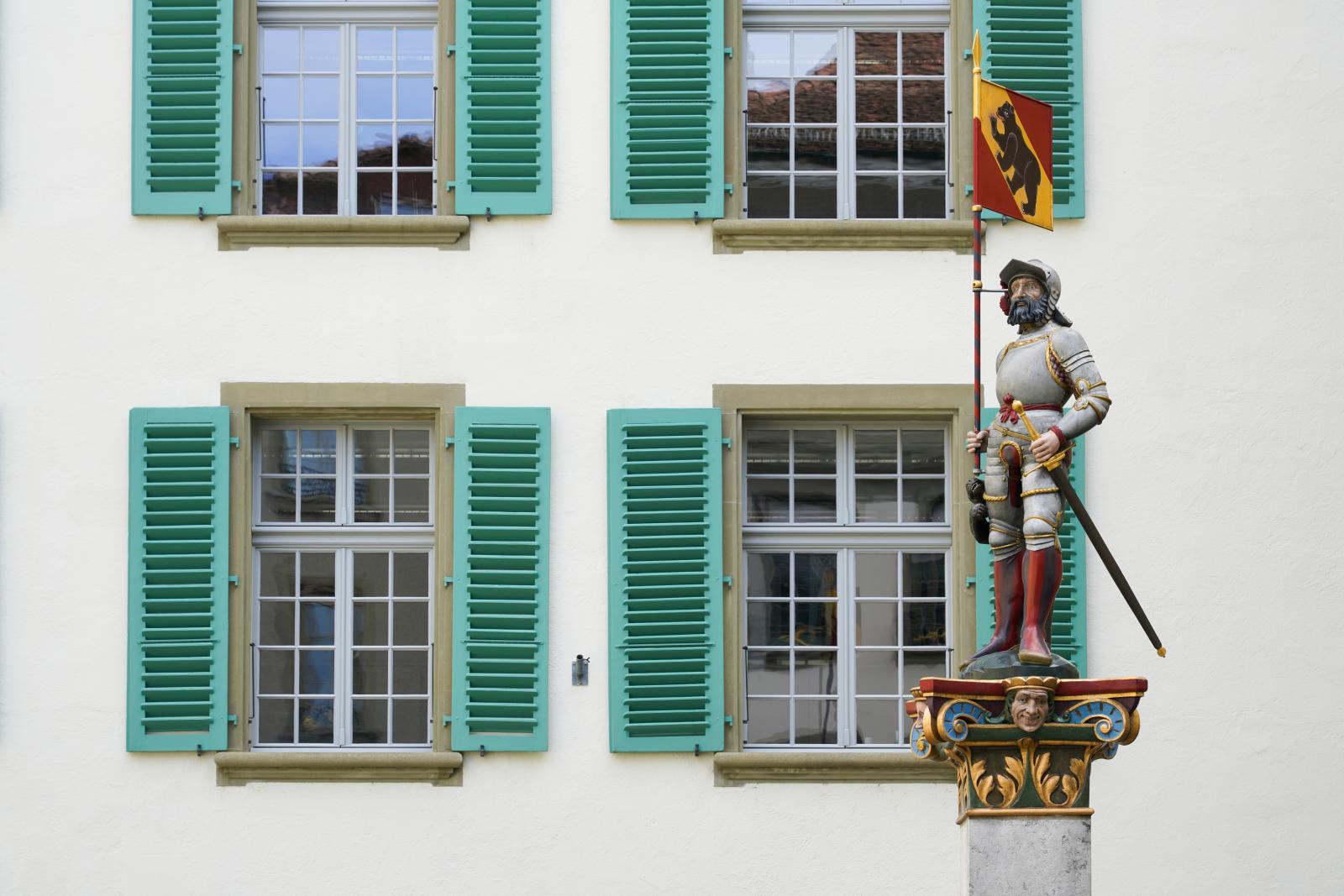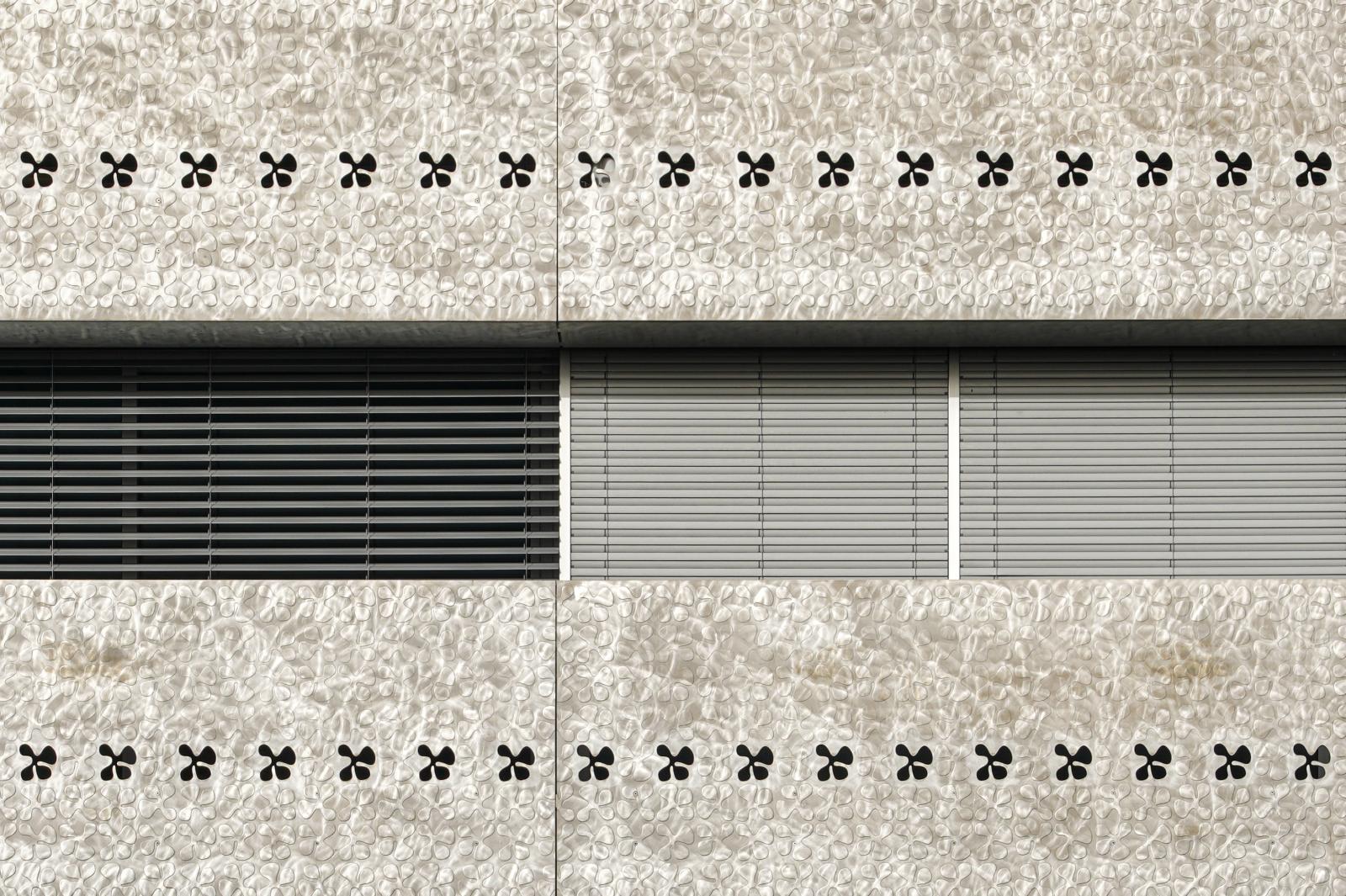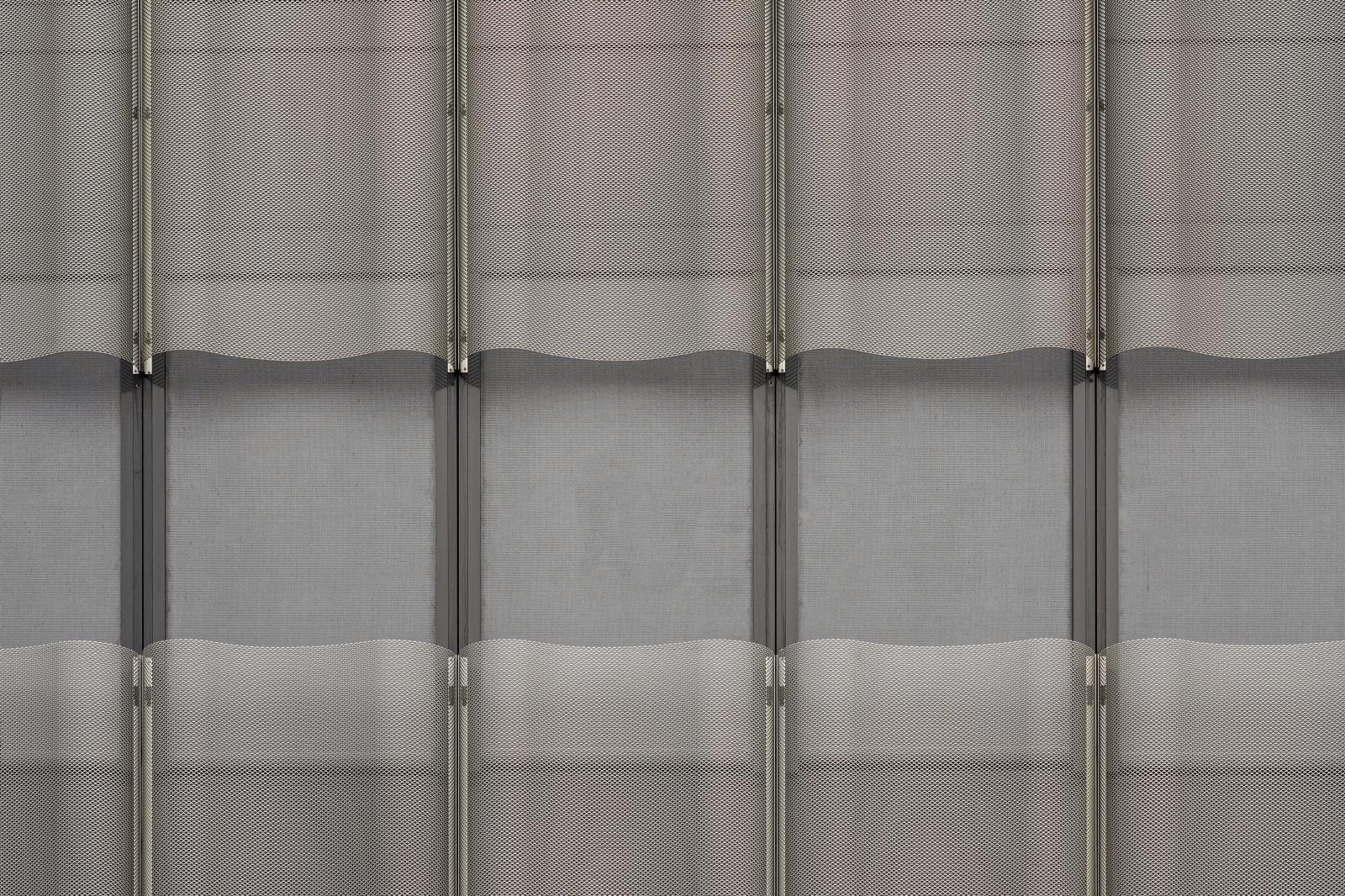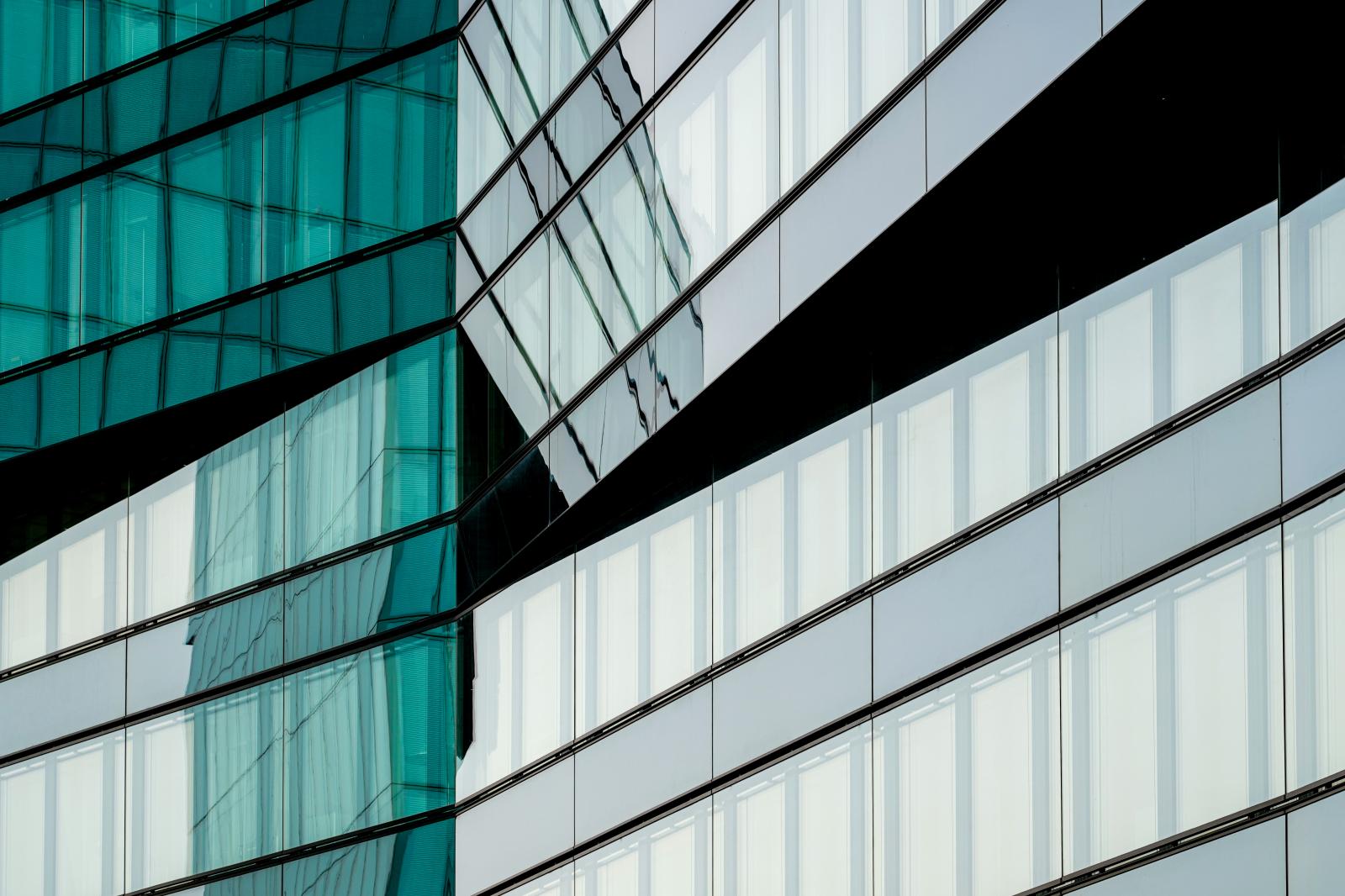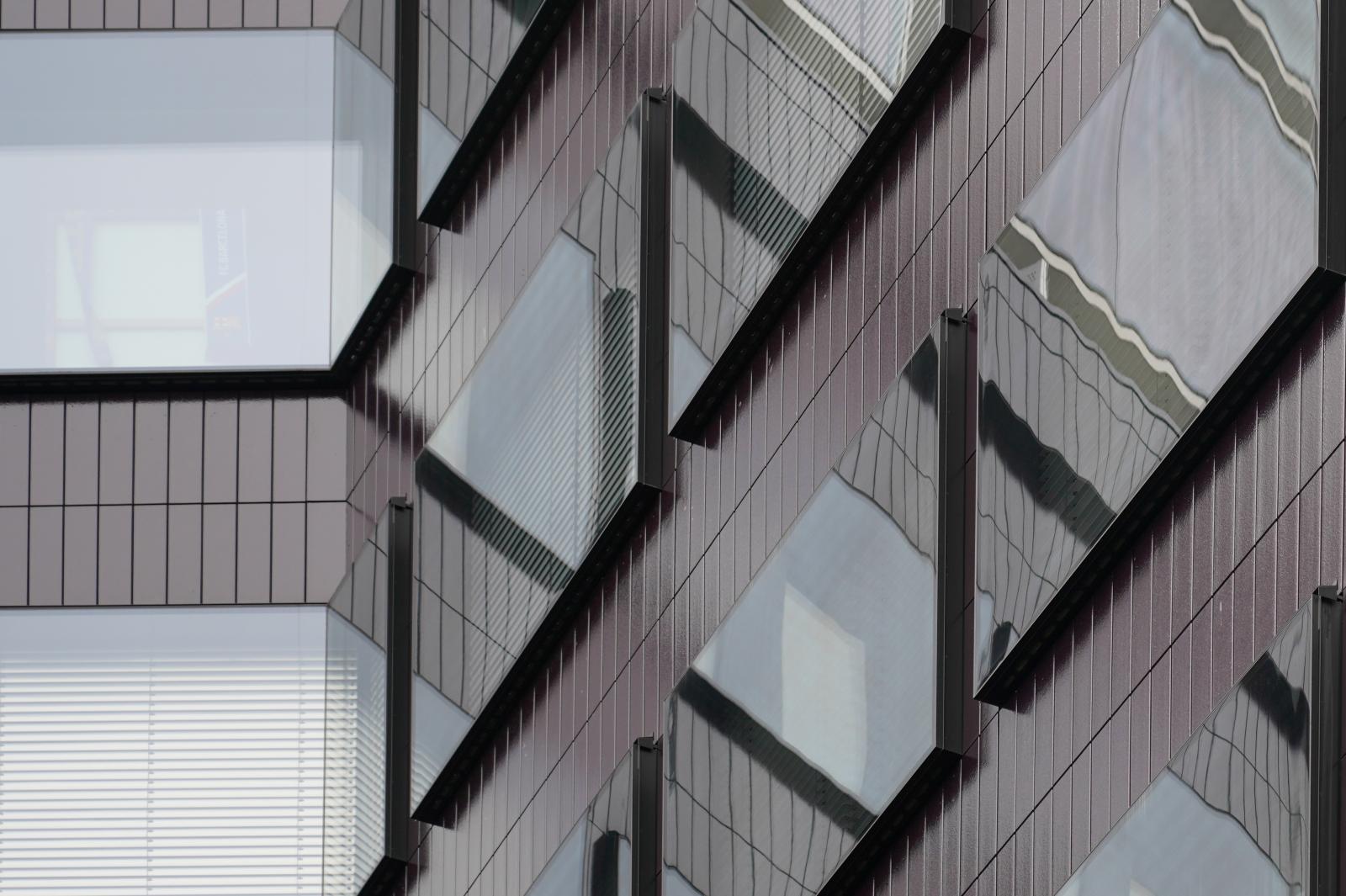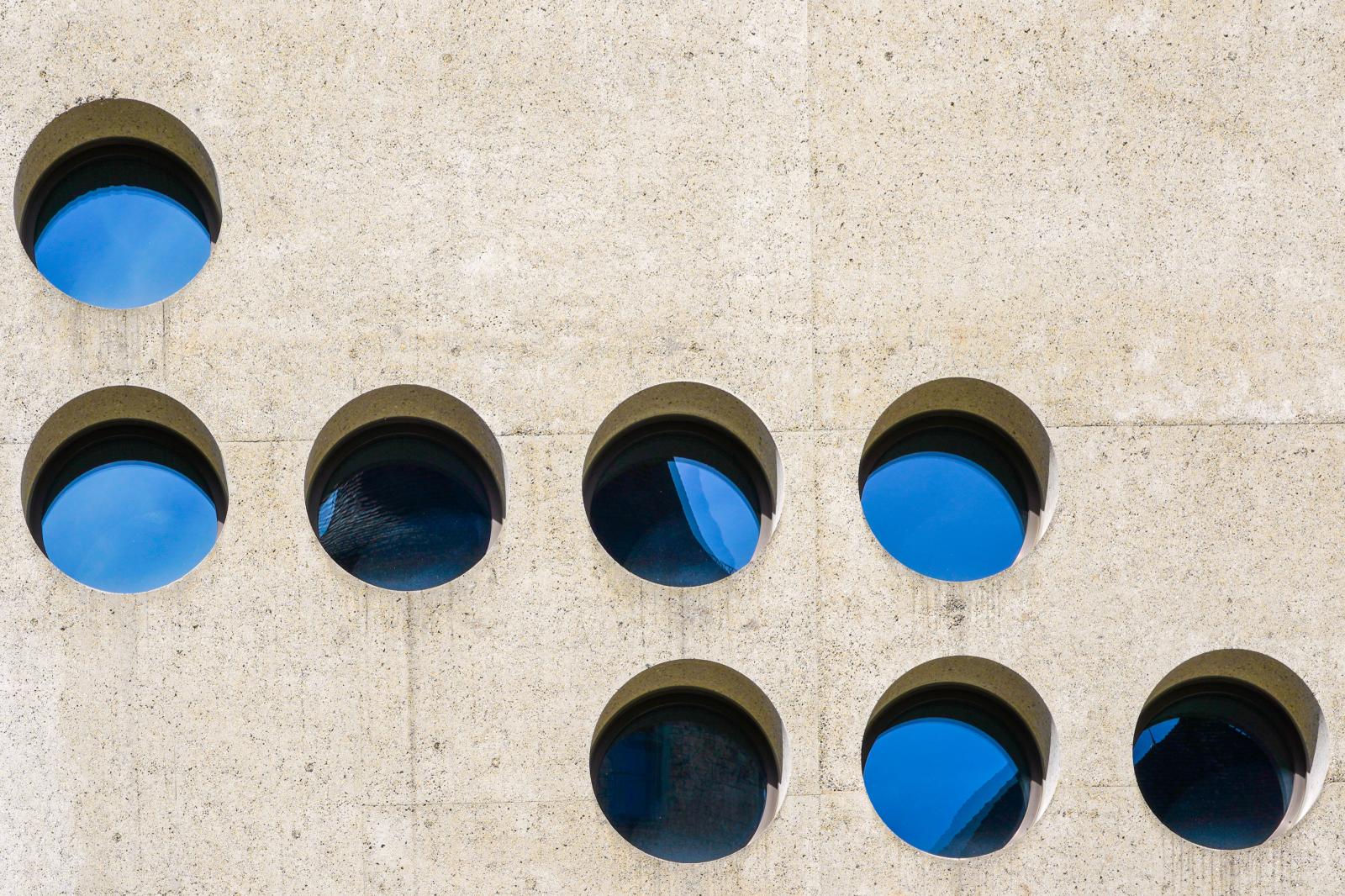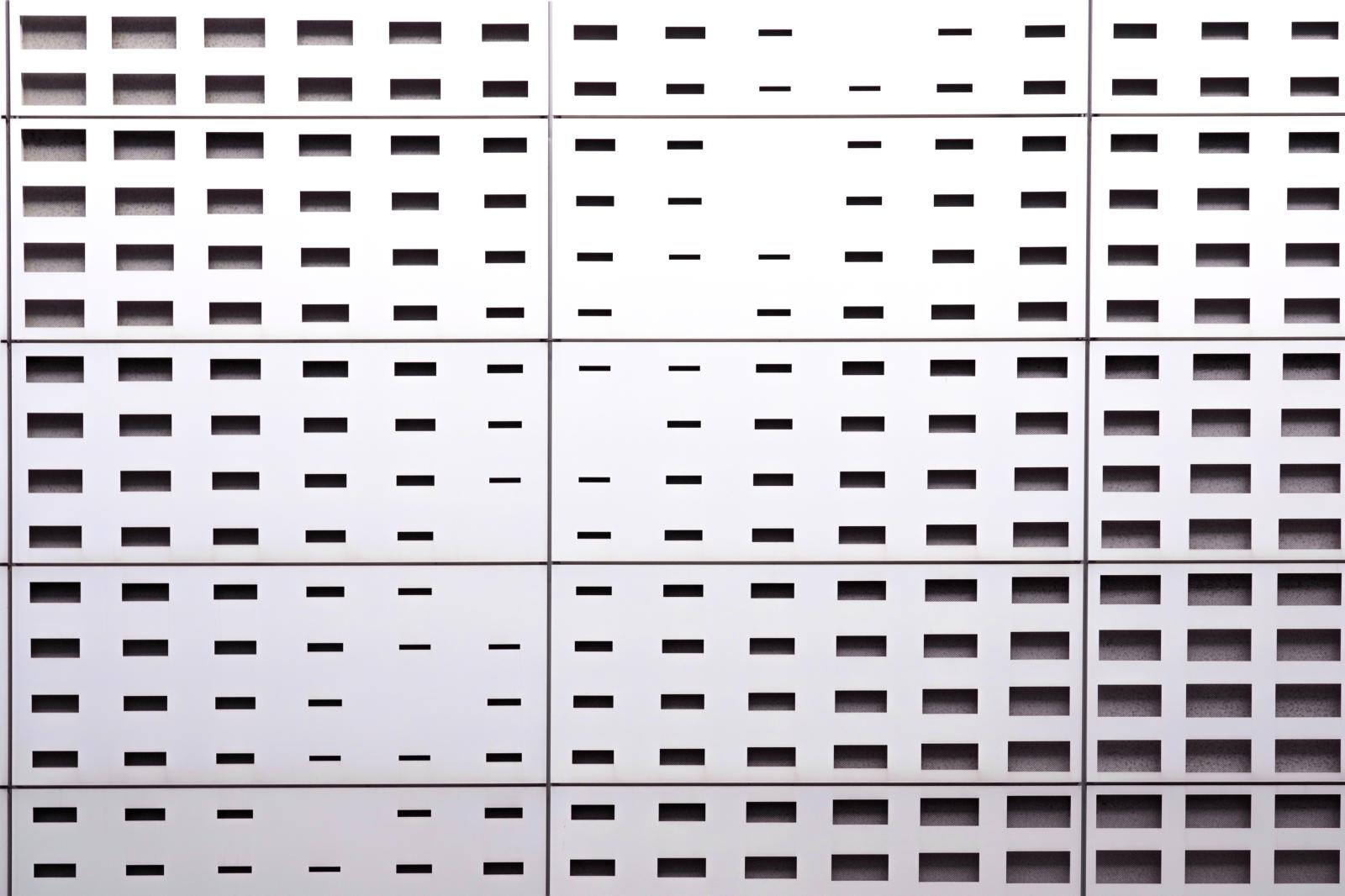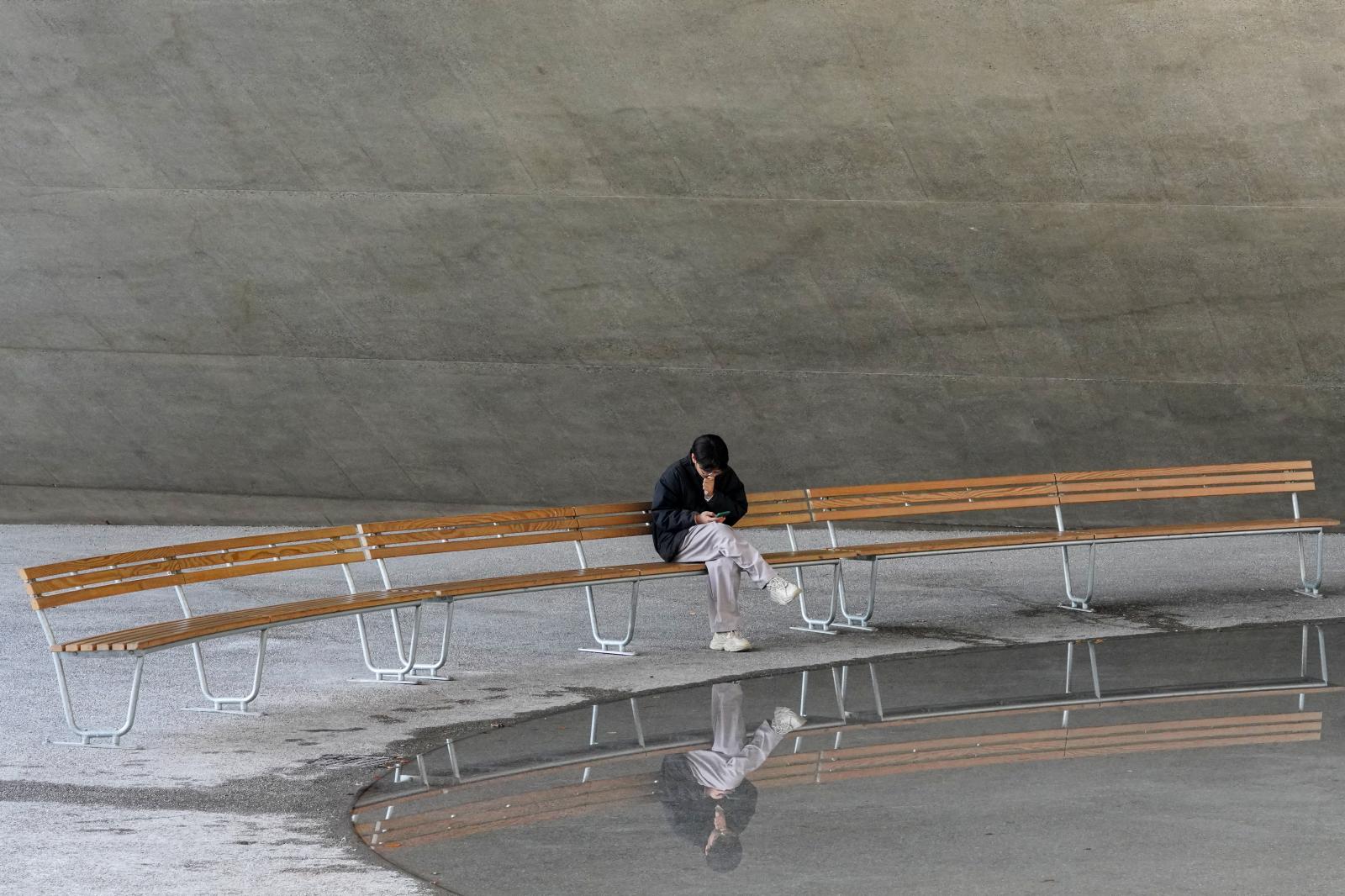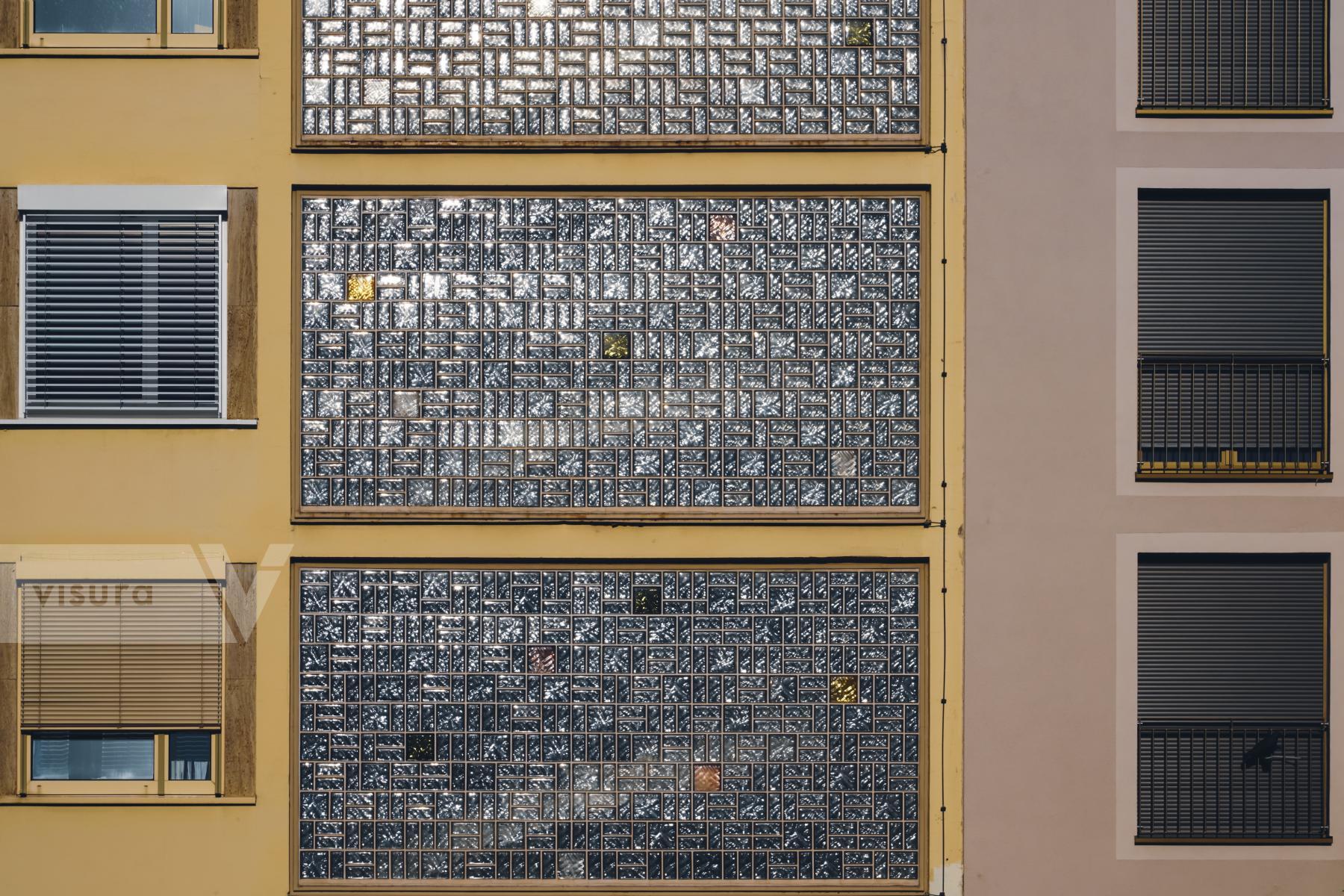
Wiesbaden, Germany
# 4072
8/2023
Large frosted glass facades of a stairwell, next to windows of flats with different blinds.

Munich, Germany
# 3847
11/2022
Facade of the Brandhorst Museum of Modern and Contemporary Art in the Kunstareal district of Maxvorstadt in Munich has a colorful facade designed in a total of 23 different colors, consisting of three different color families. A total of 36,000 square, vertically mounted ceramic rods are placed at some distance from each other in front of the concrete walls. Depending on the viewing angle and distance, the viewer is presented with different visual impressions. Architects Sauerbruch Hutton.
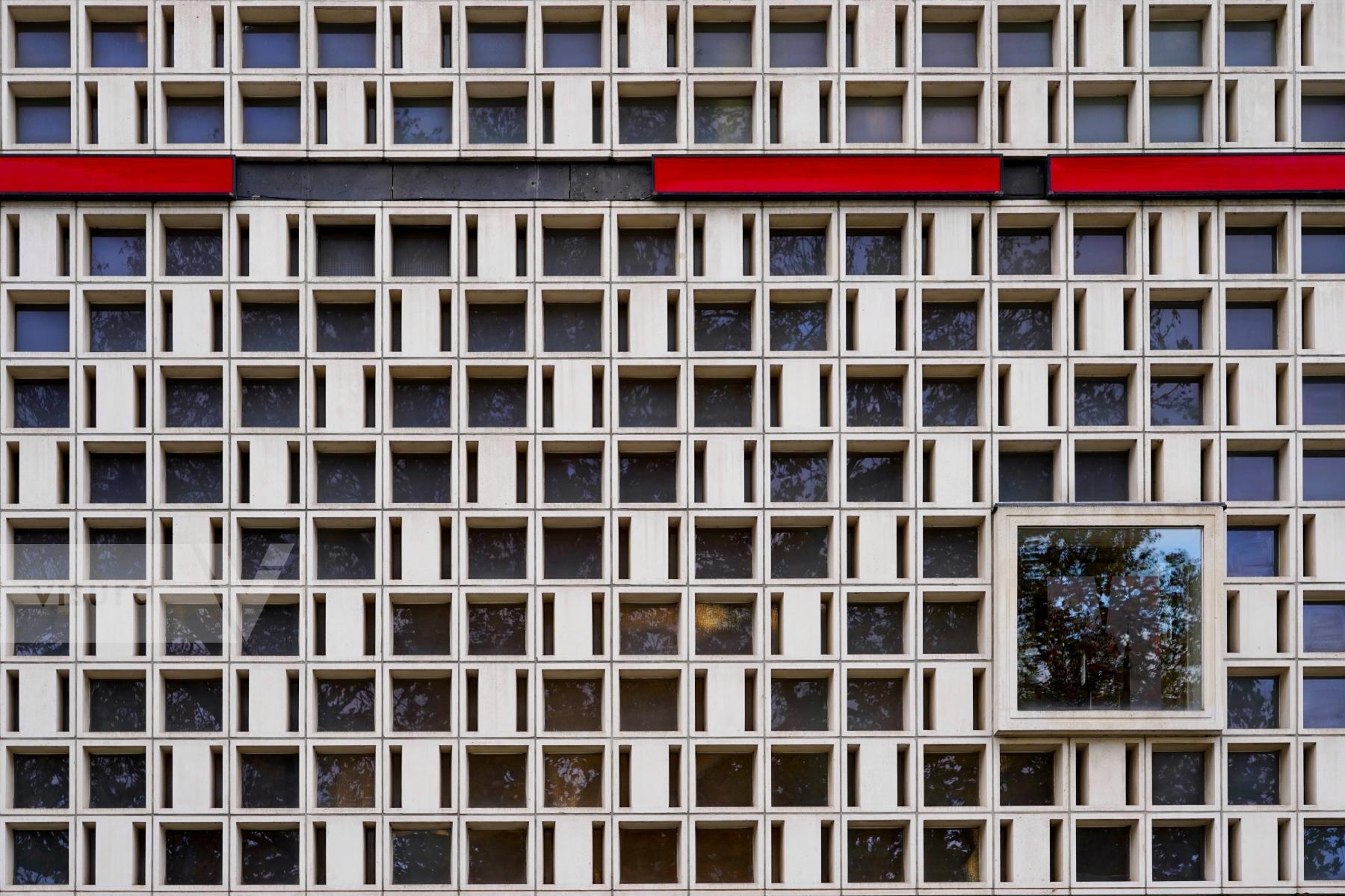
Hannover, Germany
# 4070/2
11/2023
A large window between small windows in the facade of the building of the Museum August Kestner, a glass and concrete facade from 1961. The original old museum building still exists today in a special form. Its partial destruction by bombing in the Second World War was countered by a remodeling between 1958 and 1961. Since then, a conversion and extension with a glass and concrete facade with around 5,000 windows has enclosed the remains of the building. This concrete cube is now a listed building. Today, with its design collection, it is one of the most important museums of applied art in Germany The museum's namesake, August Kestner, lived and worked in Rome for 36 years as a Hanoverian envoy. There, as a private collector, he amassed a considerable number of Egyptian and Greco-Roman artifacts as well as other works of art. After his death, his nephew, Hermann Kestner, received the collection with the task of handing it over to his home town of Hanover and making it accessible to the public.
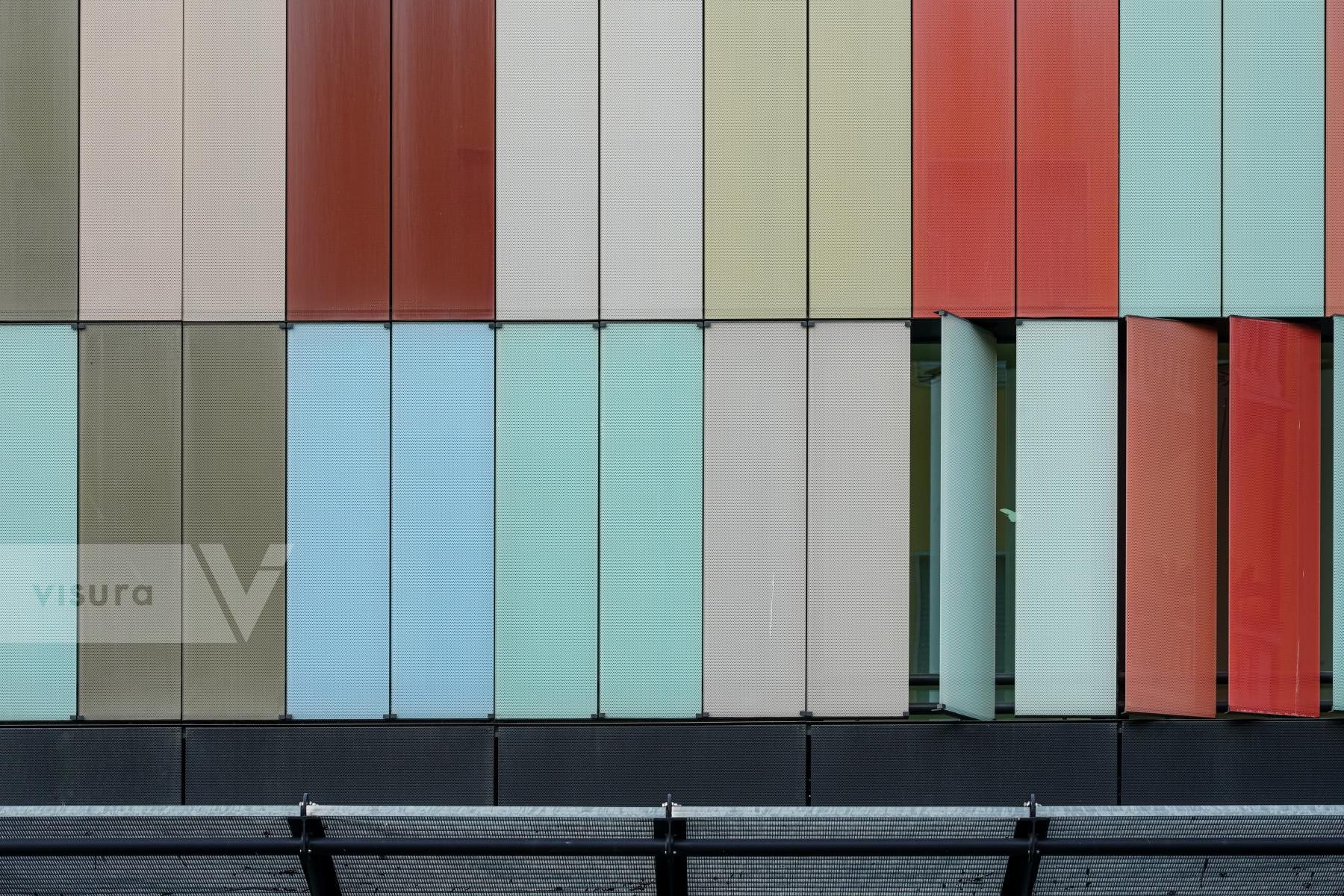
Milan, Italy
# 3923
5/2023
Facade section with open windows of MAC567, Maciachini - an office building with commercial units designed by architects Sauerbruchhutton, a glass facade panel with graduated shades of red and green and complementary neutral colors.
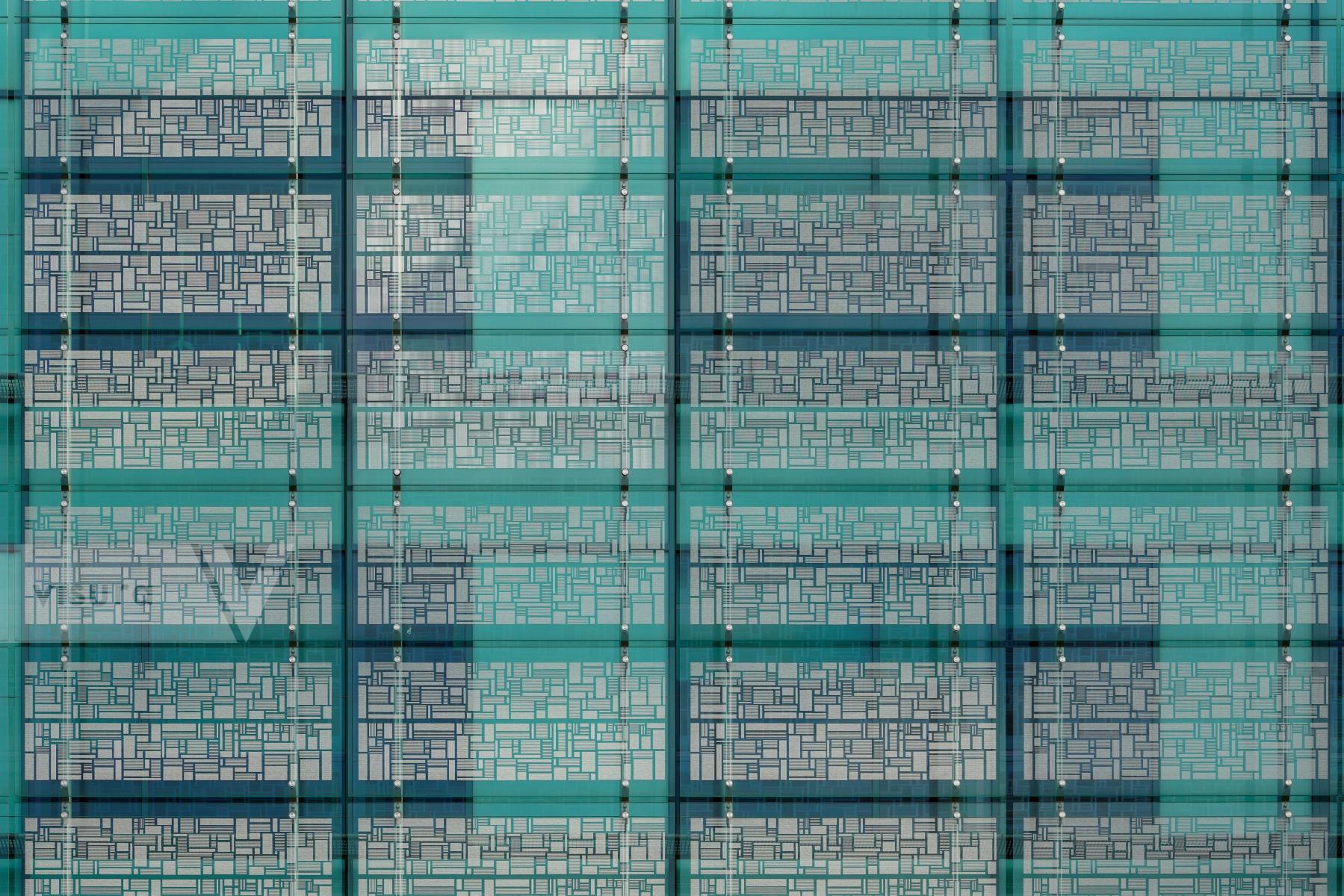
Milan, Italy
# 3919
5/2023
Facade of the office building of the insurance agency HDI Assicurazioni Via Franco Russoli. Milan.
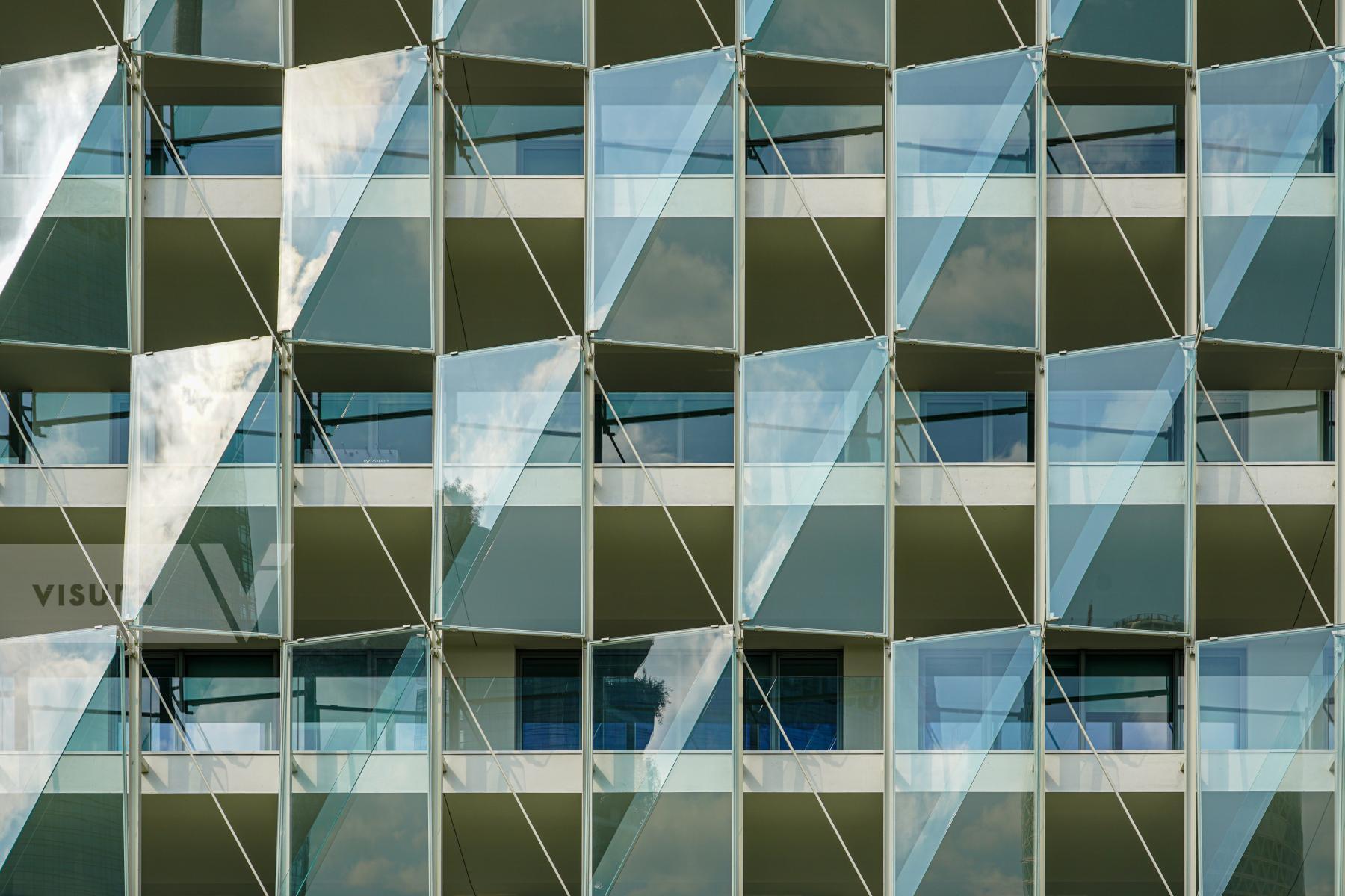
Milan, Italy
# 3925
5/2023
Facade of the Office building complex De Castillia 23 Milano by Urban Up Group Unipol, Milan. Architects: Progetto CMR

Berlin, Germany
# 3753
9/2022
The Shell-Haus on the Landwehrkanal near Potsdamer Platz, with its facade, is one of the most important office buildings of classical modernism in Berlin. Stylistically, it belongs to the New Objectivity movement and is one of the architecturally most important office buildings from the Weimar Republic, built in 1931 according to plans by Emil Fahrenkamp, as the headquarters of the Shell subsidiary Rhenania-Ossag Mineralölwerke. The design is determined by vertical waveforms of varying heights and a consistent horizontal articulation through bands of windows, which also extend beyond the curves on the outside.
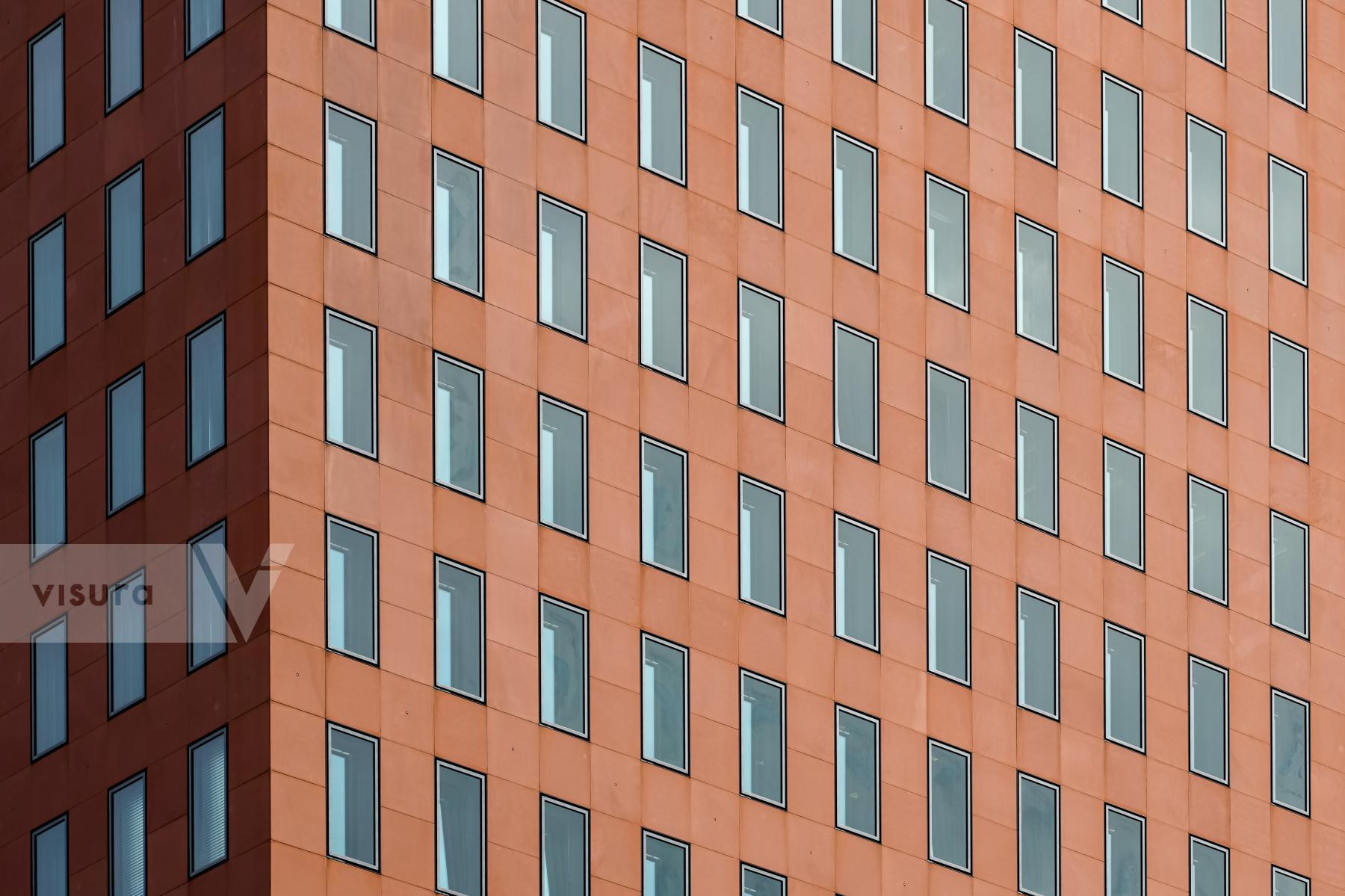
Frankfurt, Germany
# 3861
3/2023
Facade of the Main Forum, a building complex in Frankfurt am Main in the Gutleutviertel district. Part of the 80-metre high building houses the headquarters of IG Metall.

Graz, Austria
# 3895
4/2023
Shades of Innovation: A Symphony in Grey
Nestled near the LKH-Uniklinikum, the MED CAMPUS Graz is an architectural marvel designed by Riegler Riewe Architects. Its facade is a masterful canvas of eight shades of grey, each tile a pixel in a larger image of modernity and medical progress. The subtle variances in tone reflect the complex nature of medicine — nuanced, layered, and multifaceted. This building is more than just a structure; it’s a statement of grace and intelligence, standing boldly in the service of health and education.

Frankfurt, Germany
# 3856
3/2023
Crimson Rhythms: Architectural Beat
In the heart of Frankfurt’s Europaviertel, the Mövenpick Hotel stands as a bold statement in architectural design. Created from the innovative visions of Beye Scheid architects, its facade sings in vibrant shades of red, a rhythmic repetition of windows framed by stark, geometric lines. Built in 2006, the hotel’s exterior is a playful dance of form and color, a standout landmark that captures the eye and ignites the imagination, reflecting the dynamism of Frankfurt am Main.

Stuttgart, Germany
# 3832
3/2023
Skyloop, Facade of the Ernst & Young Headquarters, Wirtschaftsprüfungs Gesellschaft at Airport Stuttgart, Germany
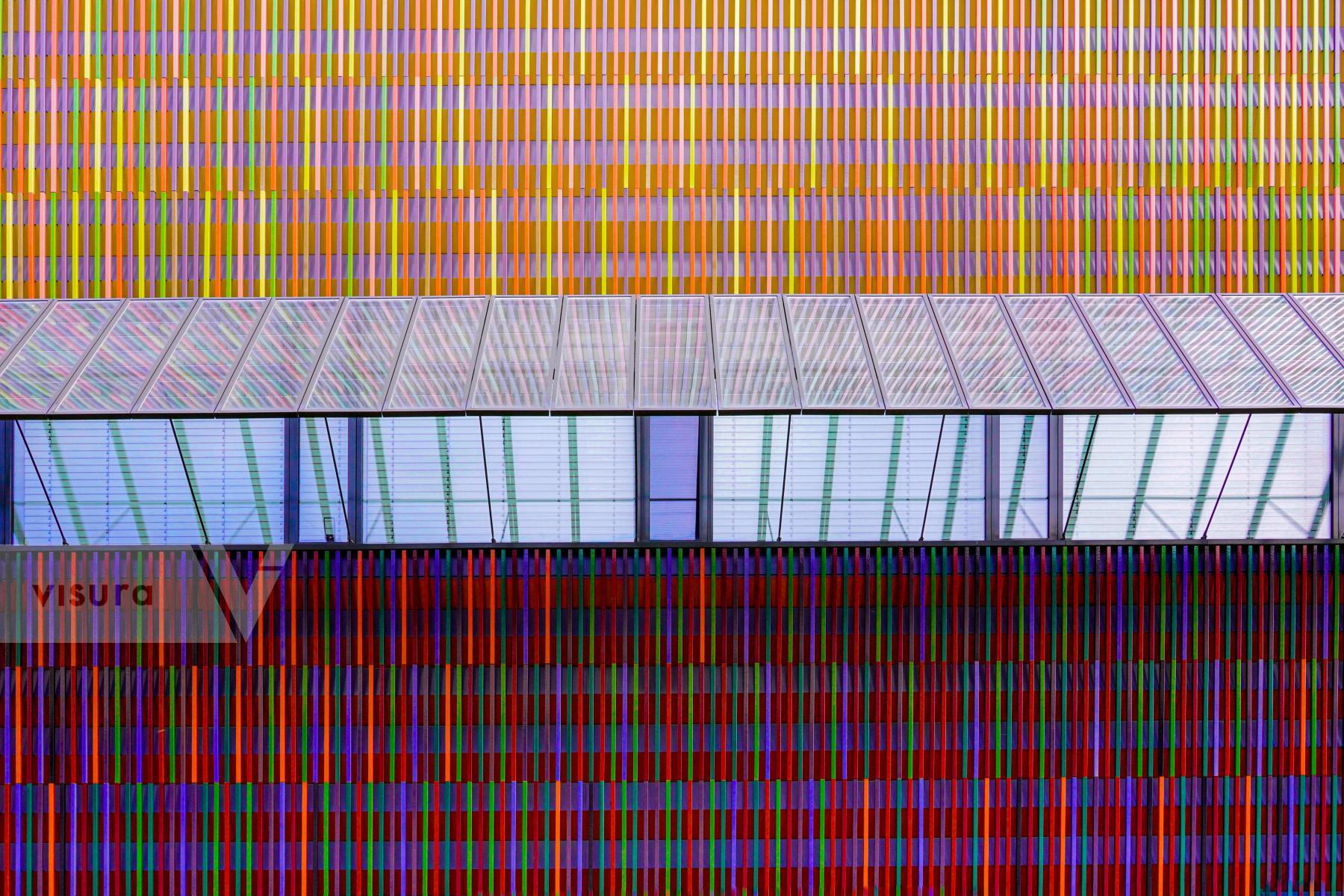
Munich, Germany
# 4039
11/2022
The Brandhorst Museum of Modern and Contemporary Art in the Kunstareal district of Maxvorstadt in Munich has a colorful facade designed in a total of 23 different colors, consisting of three different color families. A total of 36,000 square, vertically mounted ceramic rods are placed at some distance from each other in front of the concrete walls. Depending on the viewing angle and distance, the viewer is presented with different visual impressions. Architects Sauerbruch Hutton.
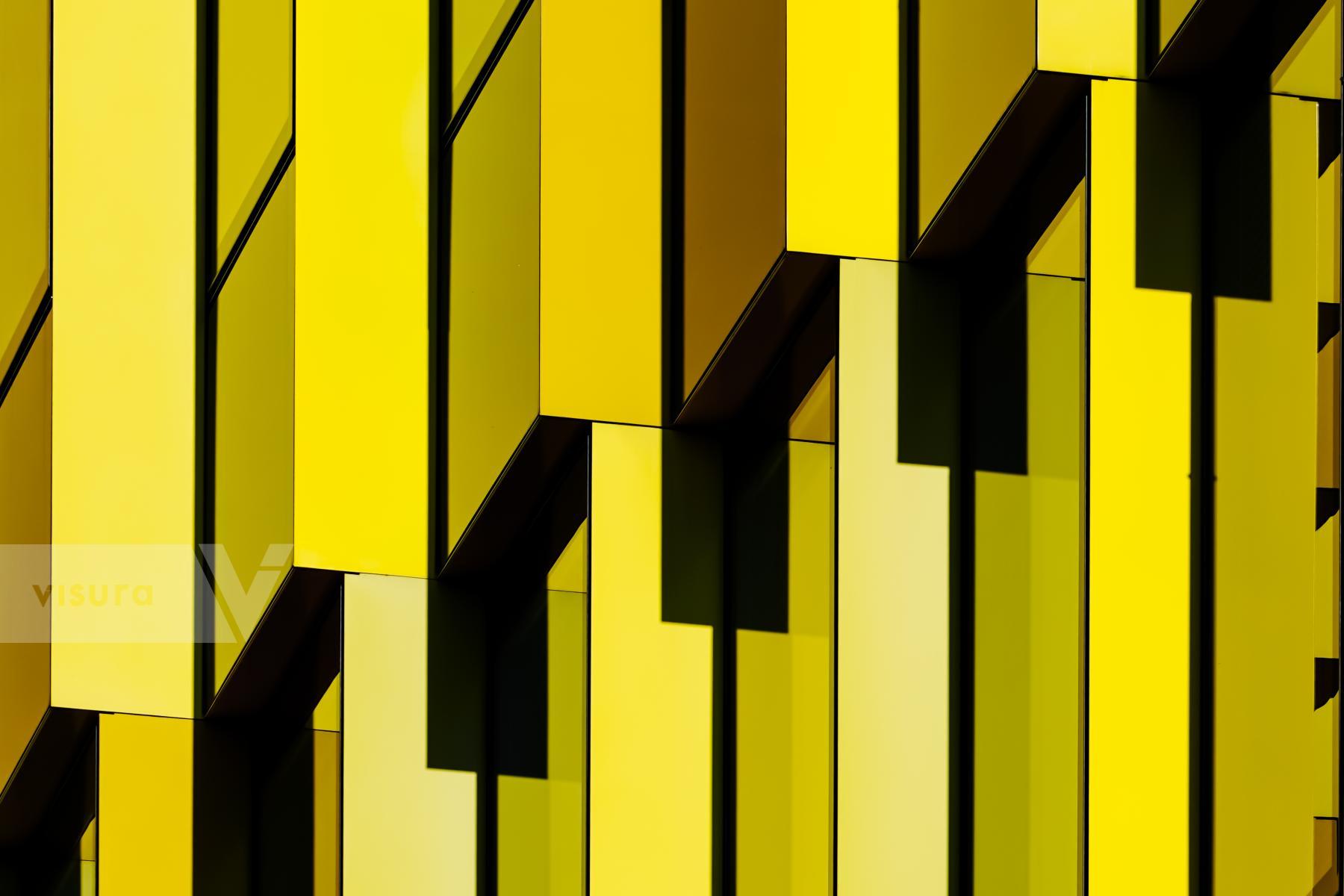
Munich, Germany
# 3829
2/2023
Munich Re - Berliner Strasse: The complete renewal of the façade of an administration building from the 1980s was used by the architects Sauerbruch Hutton as part of a general refurbishment to transform a previously faceless building into an elegant and lively complex of buildings. The new shell ensures thermal insulation, sound and sun protection, daylighting and natural ventilation of the office spaces.
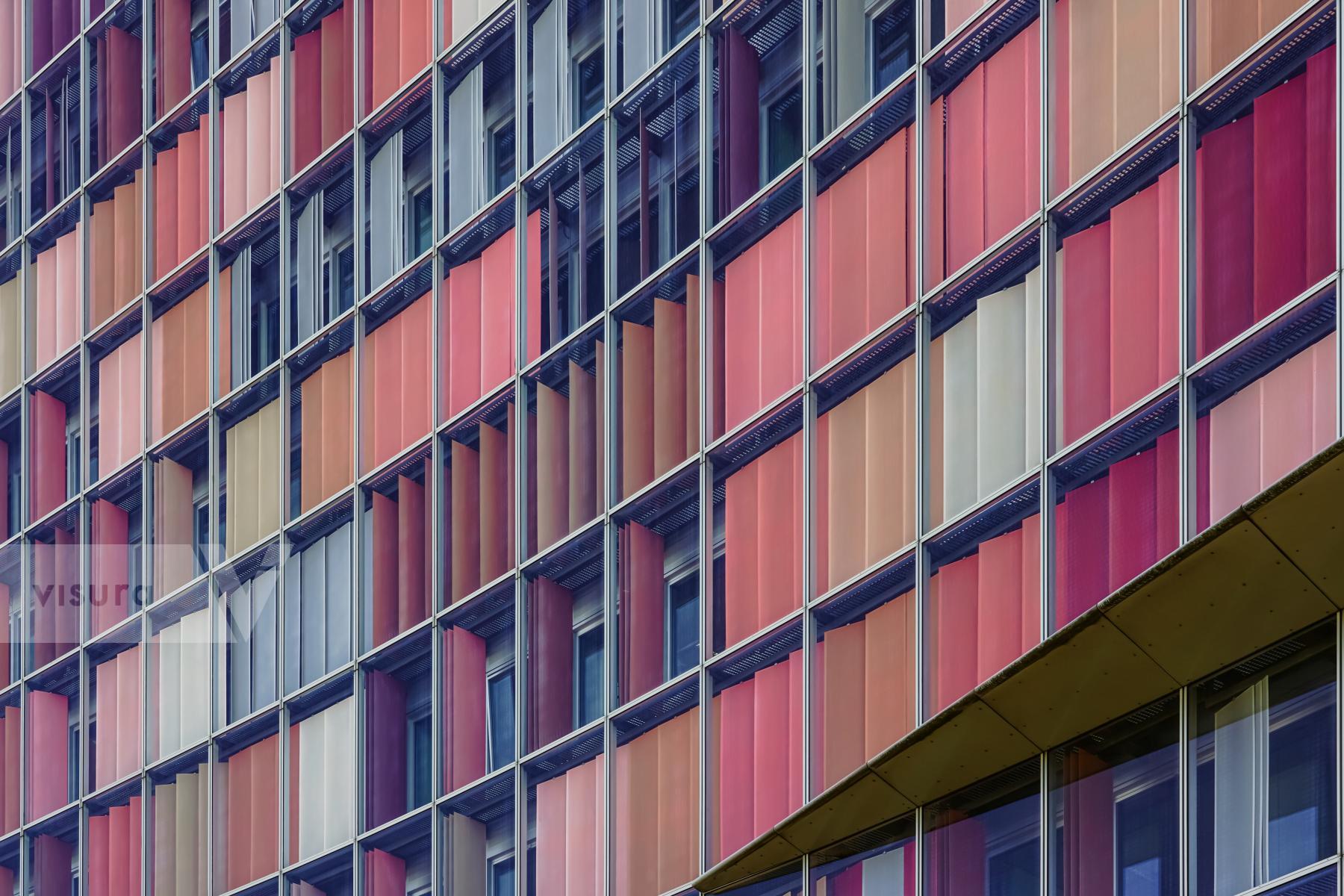
Berlin, Germany
# 3766
9/2022
The exterior facade of the GSW high-rise by architects Matthias Sauerbruch and Louisa Hutton. It houses the headquarters of the housing association GSW and stands near the former Checkpoint Charlie border crossing. The high-rise with its unique facade mosaic is one of the most striking new buildings in Berlin.

Munich, Germany
# 3796
12/2022
Detail of the ADAC headquarters building in Munich's Sendling-Westpark district. It was built between 2006 and 2011 to a design by the Berlin-based architectural firm Sauerbruch Hutton. The building consists of two main elements. A five-story base, in the shape of an amoeba and characterized by its rounded edges, marks the outer ground plan, and on top of this are a further 18 high-rise floors. In contrast to the discreetly designed façade of the base, the 30,000-square-meter glass façade of the high-rise building was given a special design. Like a mosaic, the 22 different colors of the 1,152 facade elements create a play of colors.
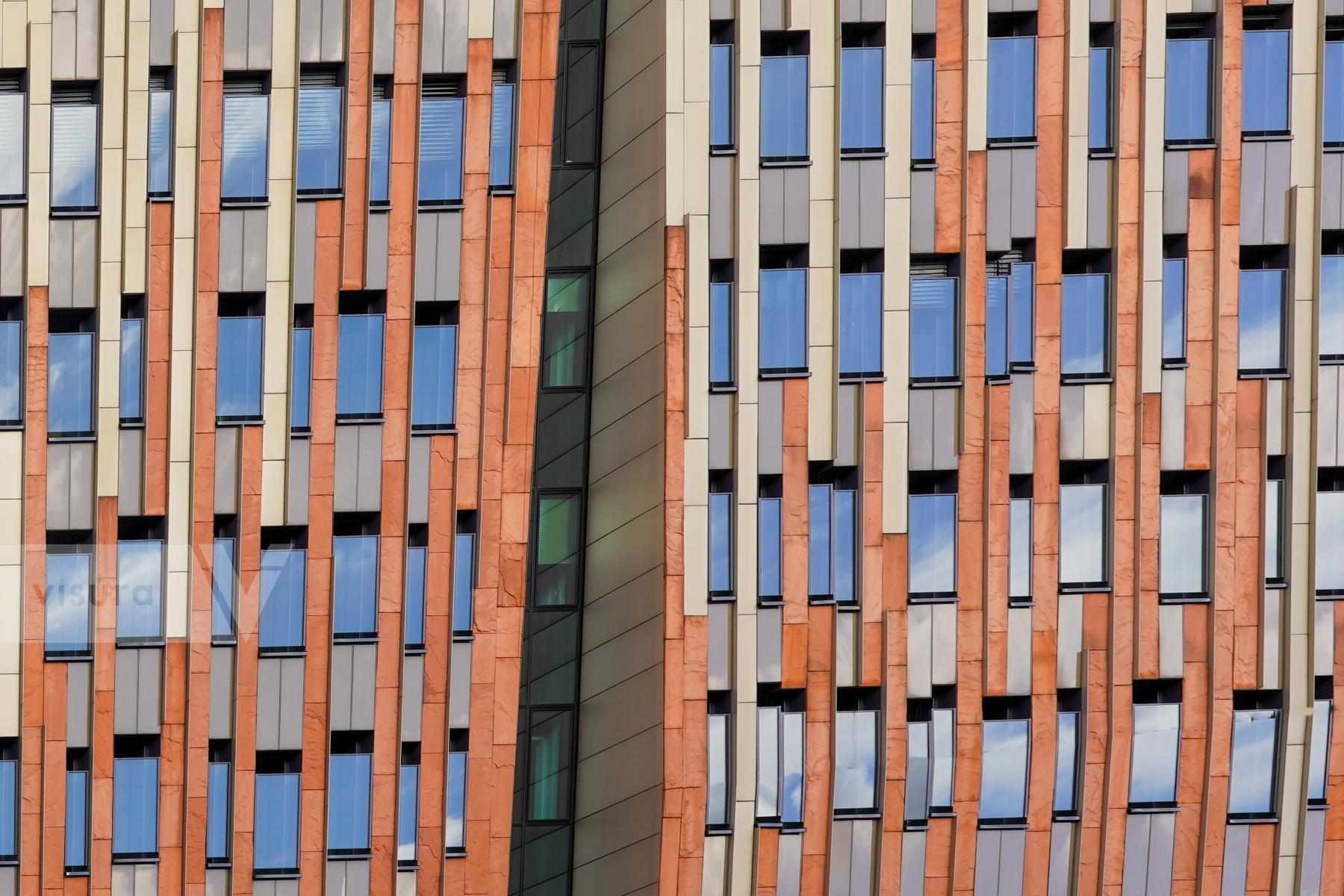
Hamburg, Germany
# 3798
8/2022
A multifunctional building, the Sumatrakontor by Dutch architect Erick van Egeraat in Hamburg's HafenCity, with a facade that parts like a pair of red curtains.
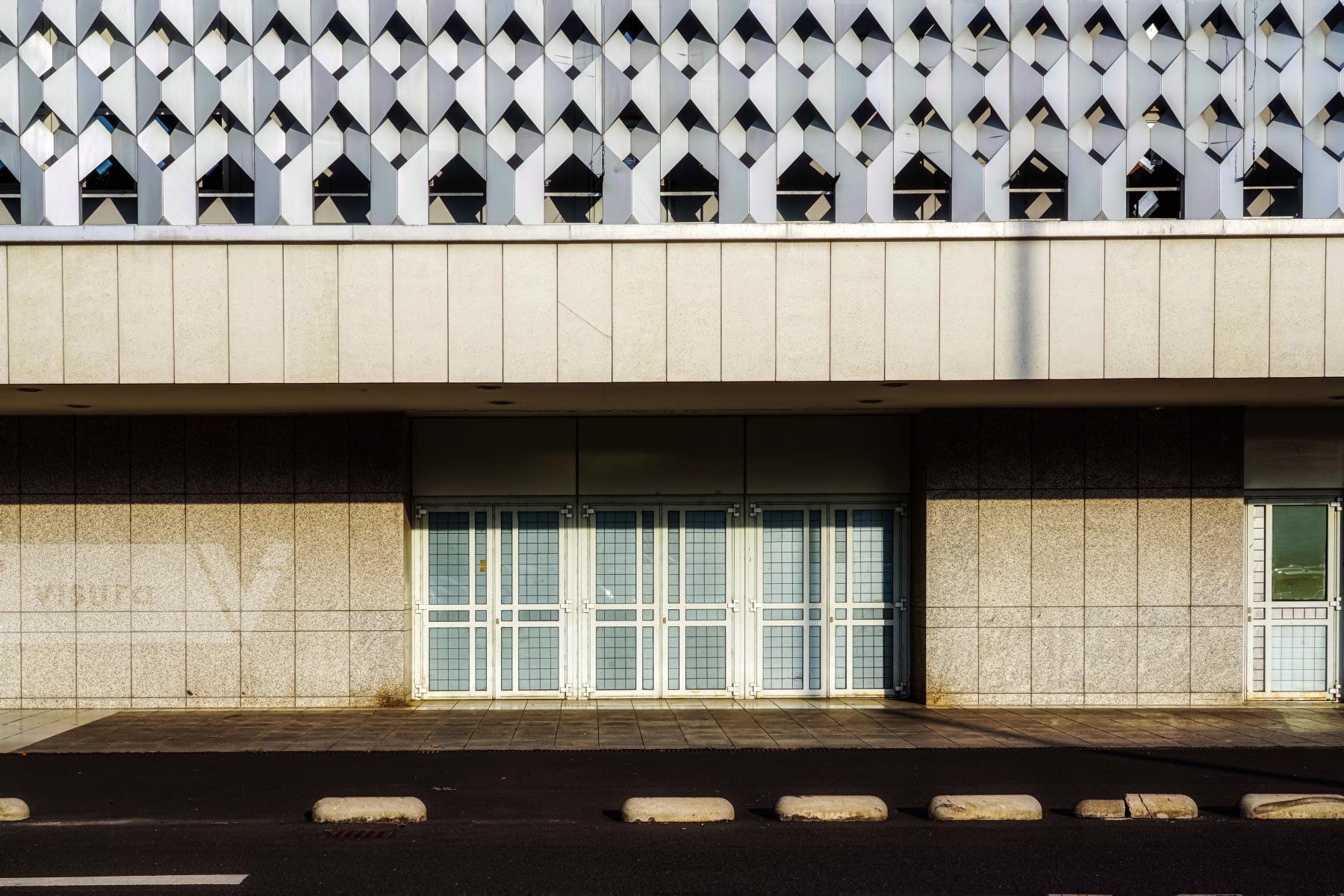
Magdeburg, Germany
# 3786
8/2022
Back front of the shopping mall Galeria Karstadt Kaufhof with approach zone for suppliers.
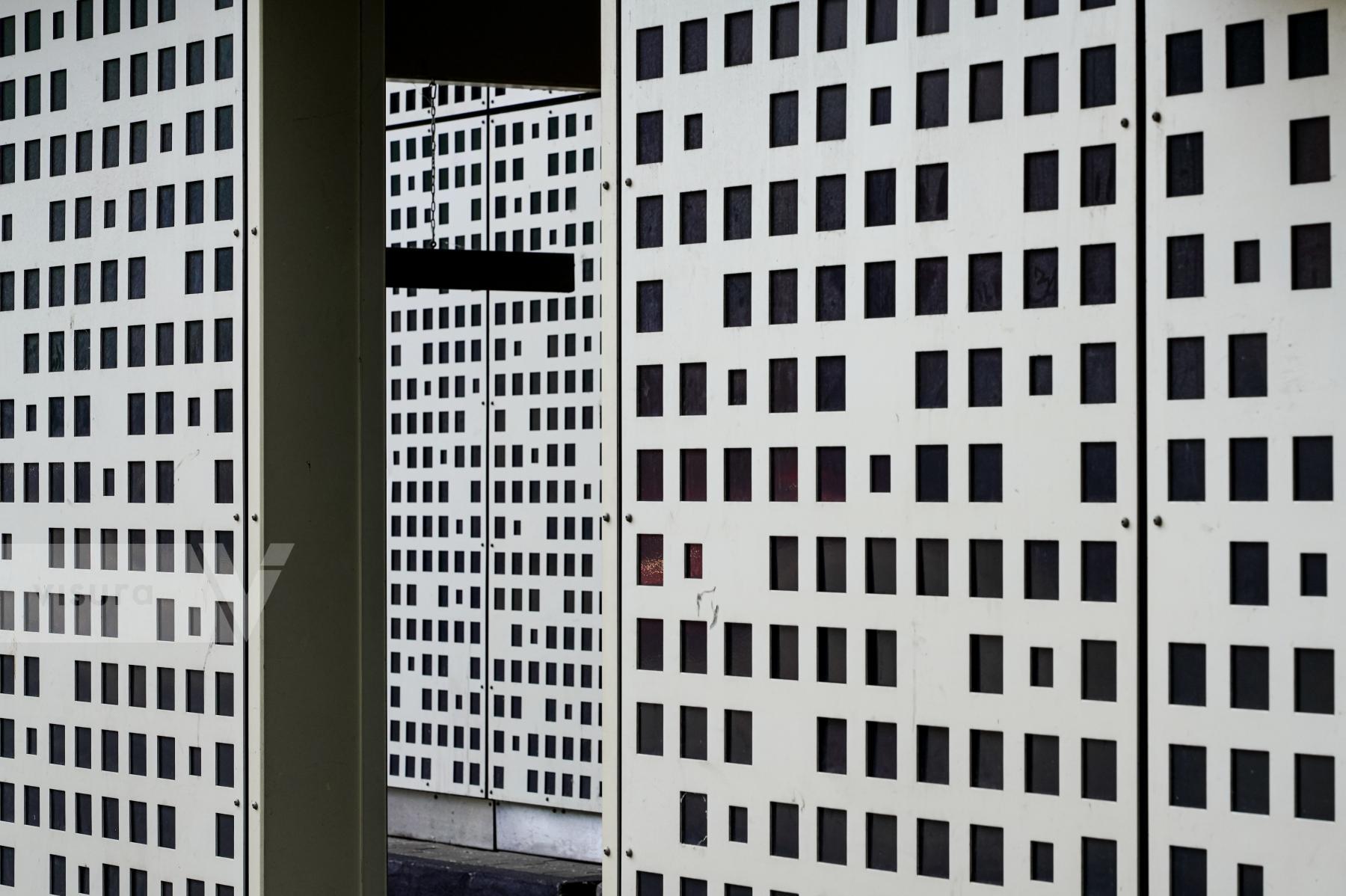
Cologne, Germany
# 3698
5/2022
Entrance to the Contipark parking garage at Friedensplatz in Cologne.

Munich, Germany
# 3756
11/2022
An open door in the colorful facade of the Brandhorst Museum of Modern and Contemporary Art in the Kunstareal district of Maxvorstadt in Munich. The facade is designed in a total of 23 different colors, consisting of three different color families. A total of 36,000 square, vertically mounted ceramic rods are placed at some distance from each other in front of the concrete walls. Depending on the viewing angle and distance, the viewer is presented with different visual impressions. Architects Sauerbruch Hutton.
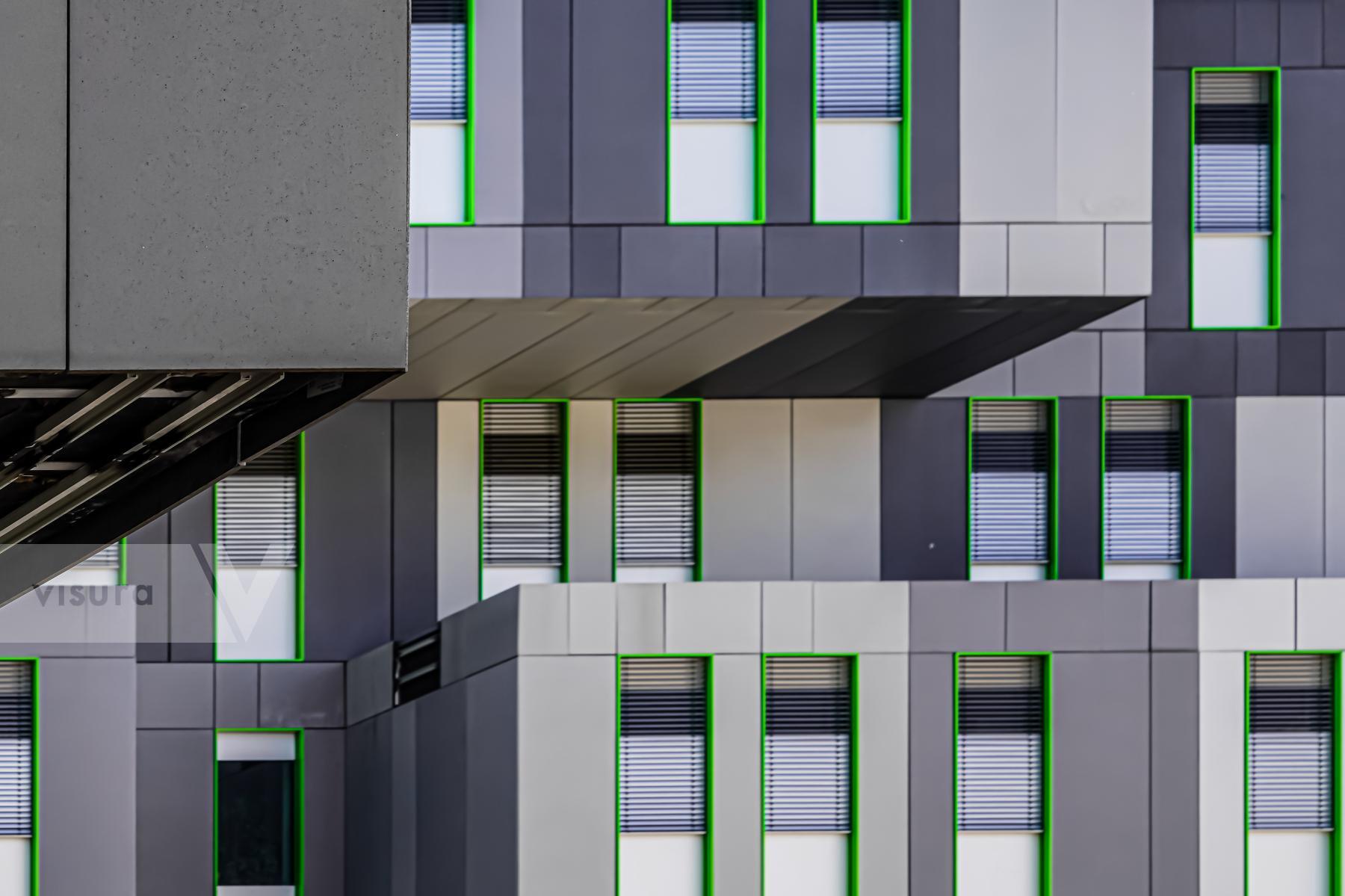
Cologne, Germany
# 3781
5/2022
Detail of the Facade of an office building of the University of Cologne, University Administration, Student Service Center in Universitätsstraße. Architect: Schuster Architekten, Construction period: 2011-2013.
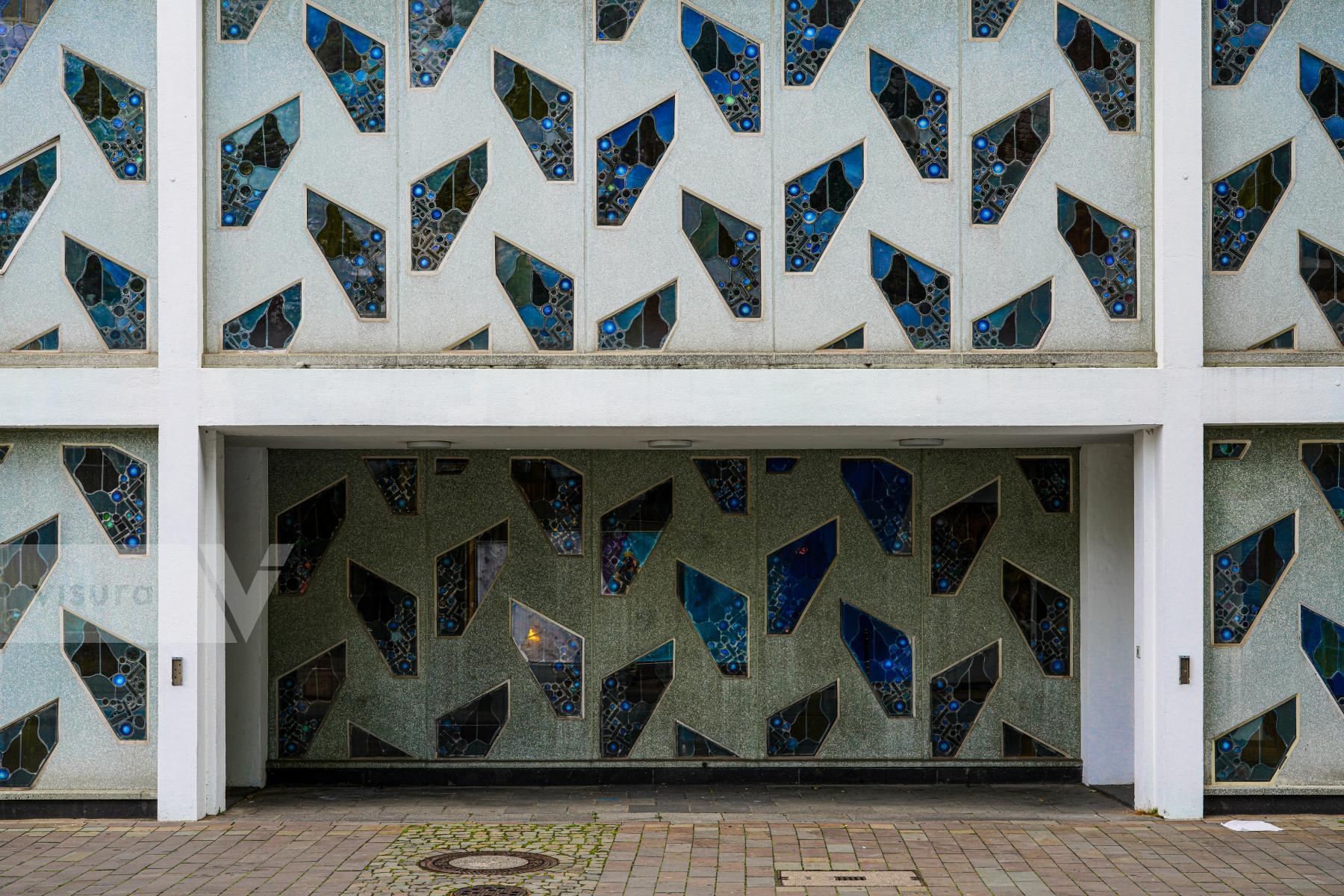
Cologne, Germany
# 3787
5/2022
Gürzenich, a festival hall in Cologne's old town on the Quatermarkt, Design West facade is called: Falling Leaves. By Hans Lünenborg.
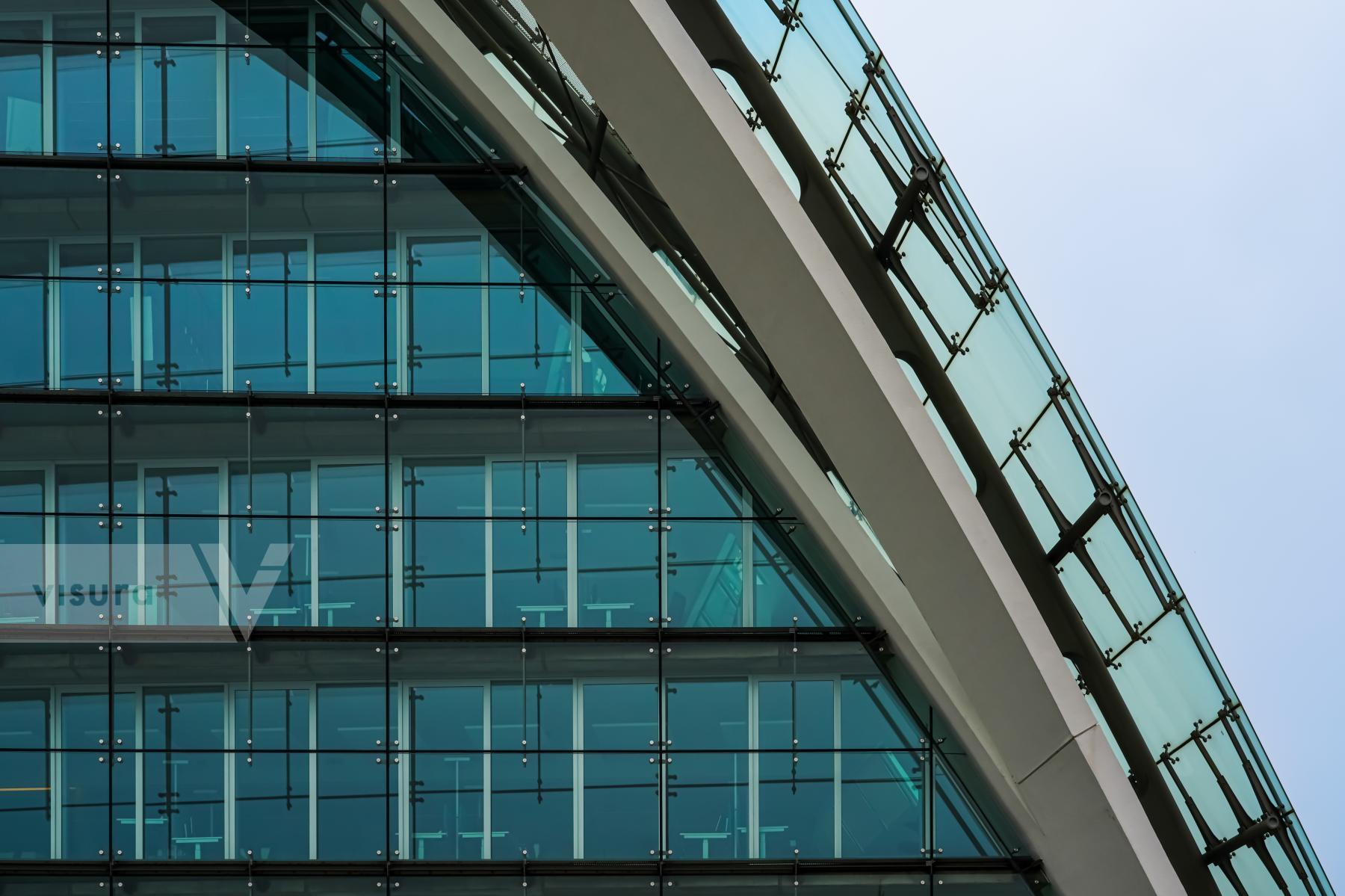
Hamburg, Germany
# 3785
8/2022
Part of the facade of the Berliner Bogen. In Hamburg's Hammerbrook district, on Anckelmannsplatz, there is an office building made of steel and glass - the Berliner Bogen, designed by BRT Architekten (Jens Bothe, Kai Richter, Hadi Teherani), built in 1998-2001. It won the German Steel Prize in 2002. The eight-story building has six integrated conservatories on the two facade levels as a climatic buffer zone between the inner building and the outside, creating a microclimate that almost halves heating and operating costs by dispensing with conventional air conditioning.
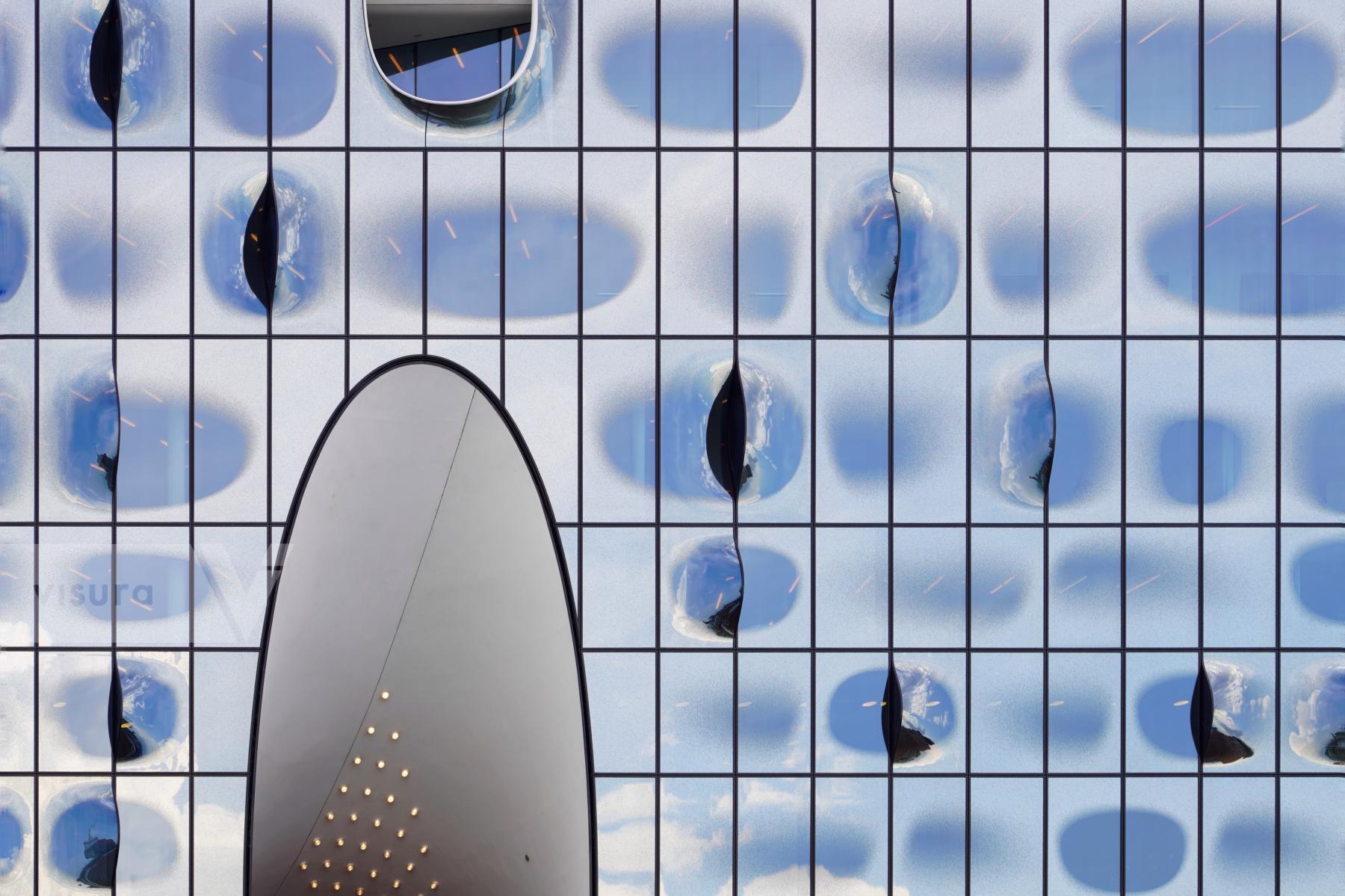
Hamburg, Germany
# 3763
8/2022
A Symphony in Glass: Architectural Crescendo
Rising above the Norderelbe’s banks, the Elbphilharmonie Hamburg strikes a chord with its futuristic facade, a mosaic of glass panels that emulate sails billowing in the wind or facets of a colossal crystal. Designed by the visionary architects at Herzog & de Meuron, this 110-meter symphonic masterpiece intertwines Hamburg’s maritime spirit and its industrial past, standing on the transformed foundation of the old Kaispeicher A warehouse. A modern jewel nestled amidst the neo-Gothic brickwork of Speicherstadt, the Elbphilharmonie reflects the city’s ambition to harmonize its history with a bold leap forward into an illustrious future.

Berlin, Germany
# 3765
9/2022
The new Philharmonie in Berlin with its golden facade cladding was built according to designs by Hans Scharoun (1960-1963). The individual aluminum panels anodized gold on parts of the building were covered with translucent polyester hoods in 1979-1981. Scharoun had hoped that this would create a subtle light effect in connection with the underlying pyramid structure of the aluminum panels. The gold-colored panels do not correspond beyond doubt to Scharoun's planning: the latter had intended square colored panels with a three-dimensional pattern. The white panels attached to the south side of the chimney correspond to this originally planned cladding. The Philharmonie Berlin is located on the southern edge of Berlin's Tiergarten park and immediately west of the former Berlin Wall. The Philharmonie is located on Herbert-von-Karajan-Strasse, named after the orchestra's longest-serving principal conductor. The building is part of the Kulturforum, a complex of cultural institutions.

Ulm, Germany
#3764
8/2022
German Shopping Mall Facade Design from the 60s. The facade of the shopping mall Galeria Kaufhof in Ulm. It is made of Horten tiles. It is a typical facade with this tiles. It is the building block of a special building facade, named after the Horten department store. It was designed by Helmut Rhode around 1961. The basic size of a tile is 50 × 50 cm, the depth is about 15-20 cm. Initially, the tiles were made of ceramic, later - aluminum. The shape corresponds to a stylized H for hoarding.
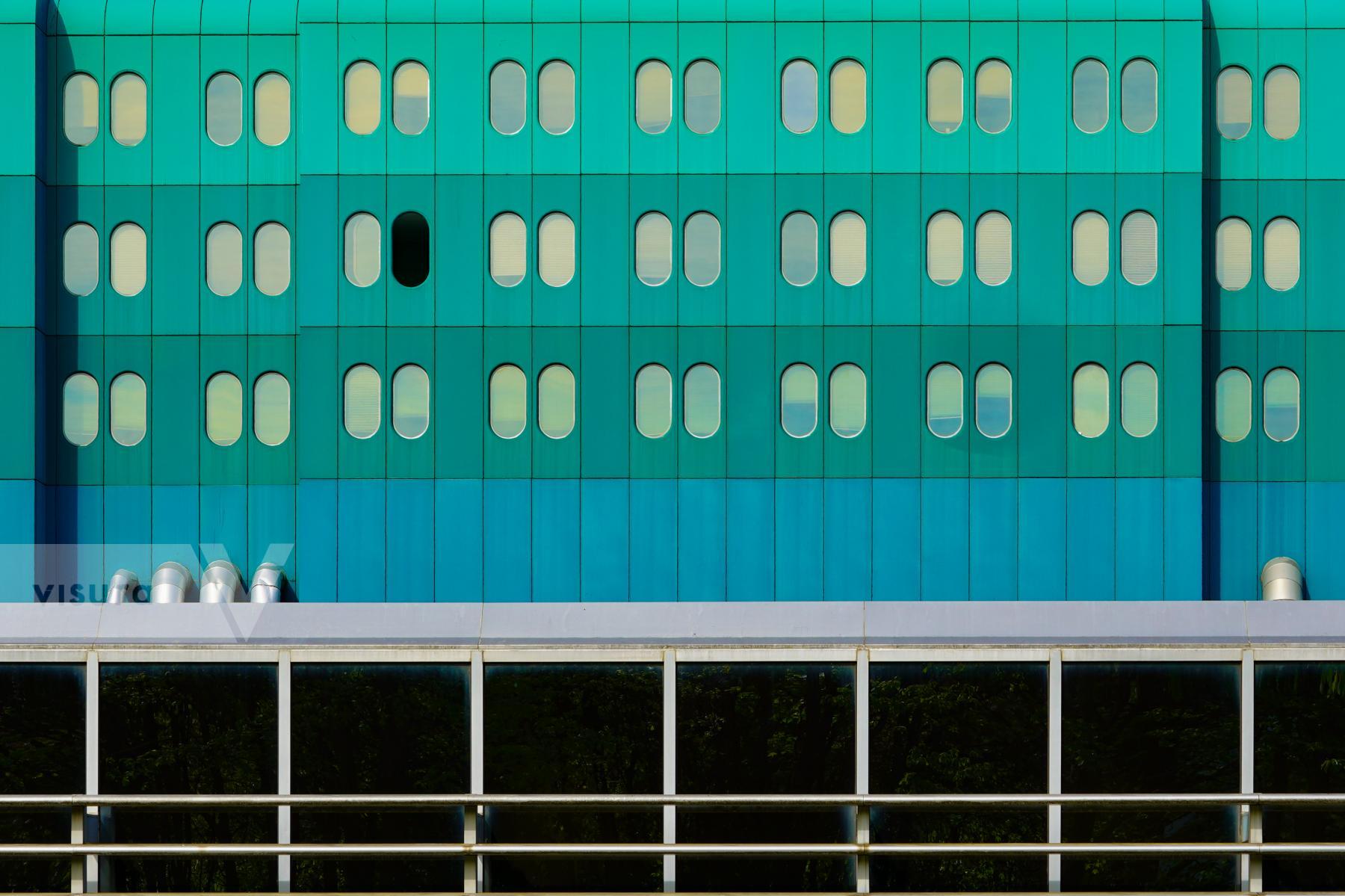
Zagreb, Croatia
# 3980
4/2023
A Legacy of Care: A Beacon of Healing
The Clinical Hospital Dubrava stands as a testament to adaptation and resilience. Originally a military medical center, it morphed into a public healthcare institution in 1992. With the advent of the COVID-19 pandemic, it pivoted once again, dedicating itself as a specialized hospital for virus patients from November 2, 2020. Its turquoise facade, punctuated with orderly rows of windows, mirrors its function: a systematic approach to healthcare, offering hope and healing amid global challenges.
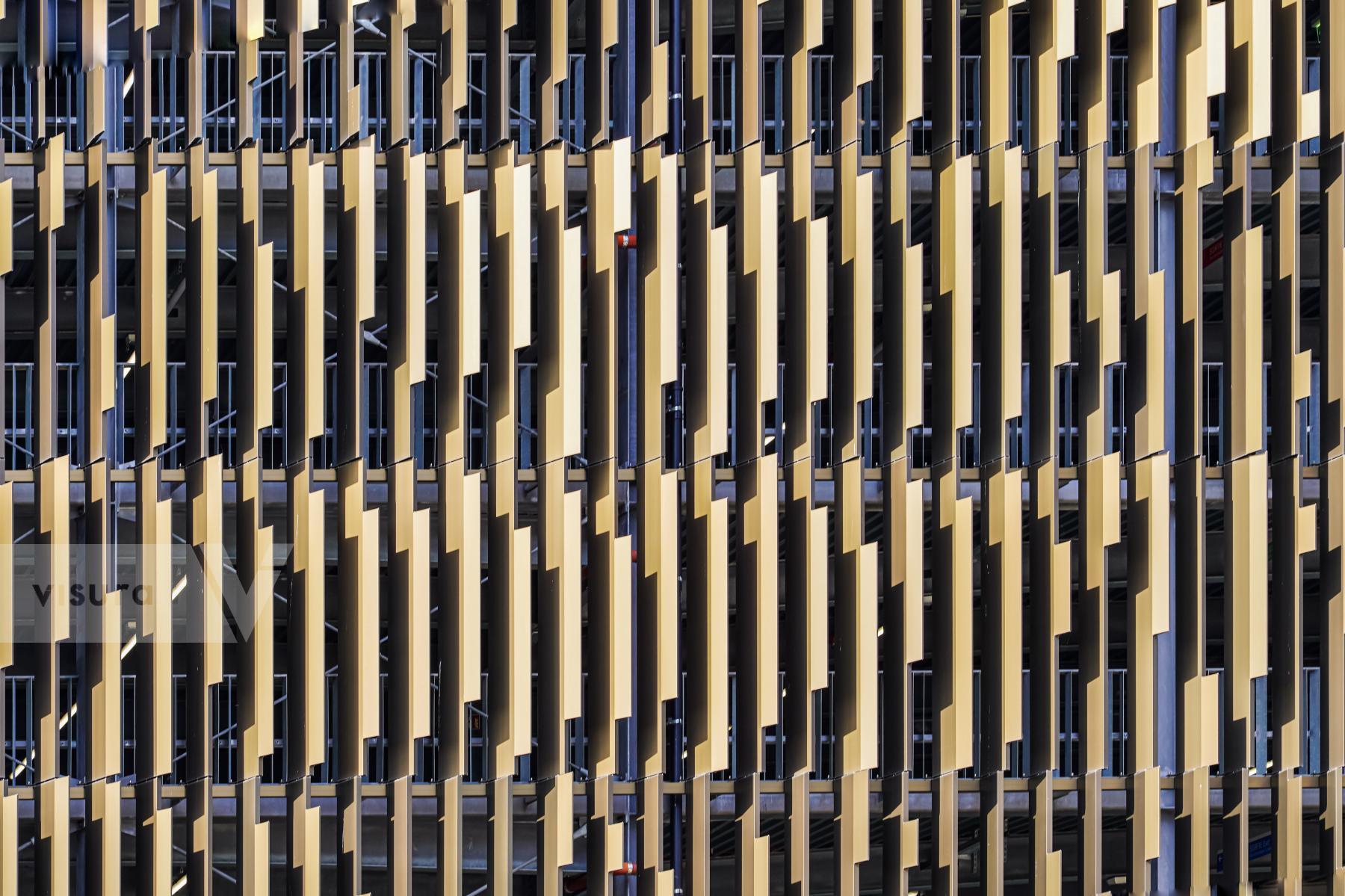
Luxembourg City, Luxembourg
# 3768
7/2022
Facade of the Gernsback parking garage on the upper floors of the Luxexpo bus station at Kirchberg
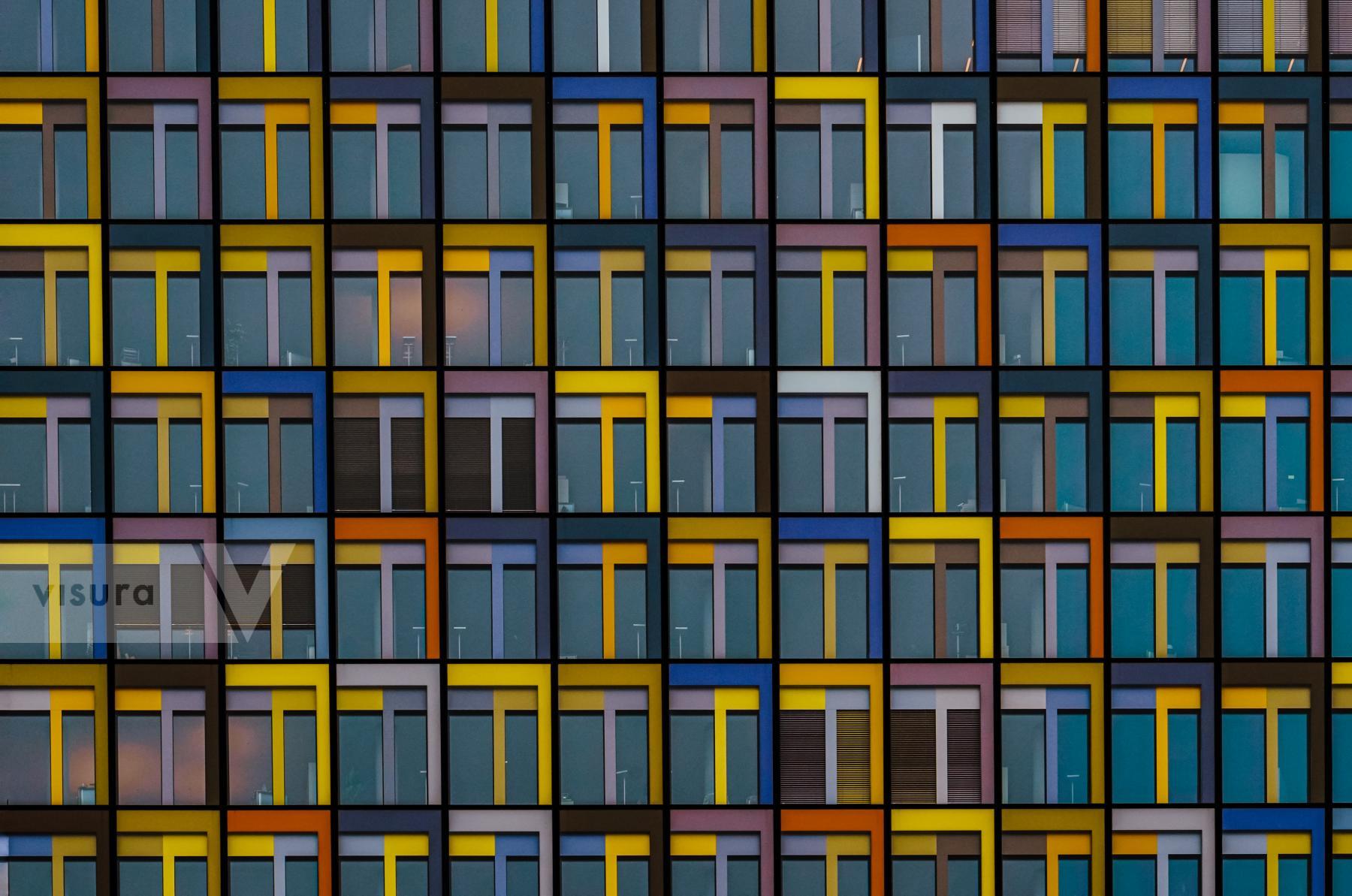
Munich, Germany
# 3819
12/2022
Detail of the ADAC headquarters building in Munich's Sendling-Westpark district. It was built between 2006 and 2011 to a design by the Berlin-based architectural firm Sauerbruch Hutton. The building consists of two main elements. A five-story base, in the shape of an amoeba and characterized by its rounded edges, marks the outer ground plan, and on top of this are a further 18 high-rise floors. In contrast to the discreetly designed façade of the base, the 30,000-square-meter glass façade of the high-rise building was given a special design. Like a mosaic, the 22 different colors of the 1,152 facade elements create a play of colors.
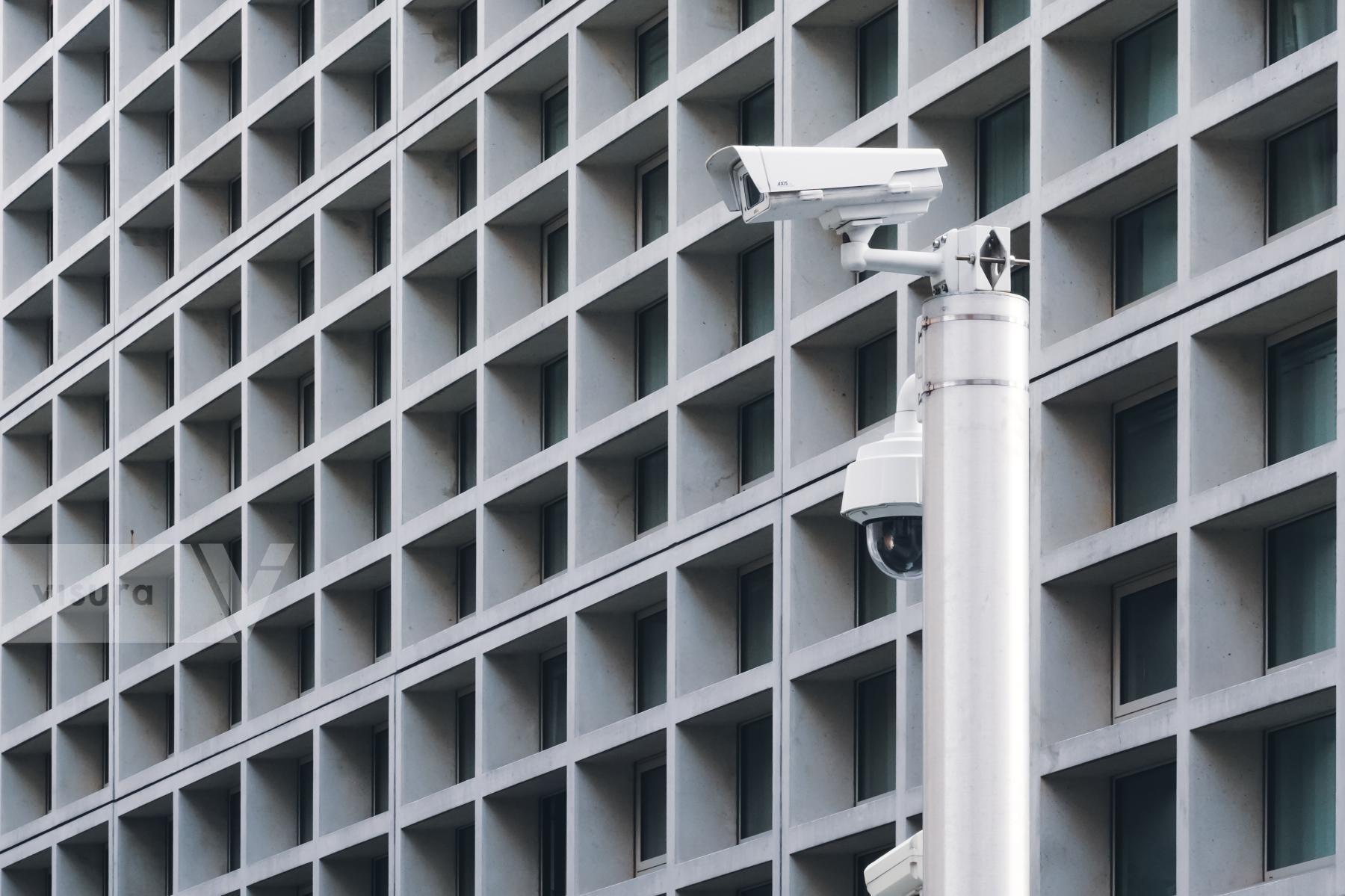
Berlin, Germany
# 3754
9/2022
Facade with surveillance cameras of the Embassy of the Slovak Republic in Germany. The embassy building is located in the embassy quarter in the Tiergarten district of Berlin's Mitte district.
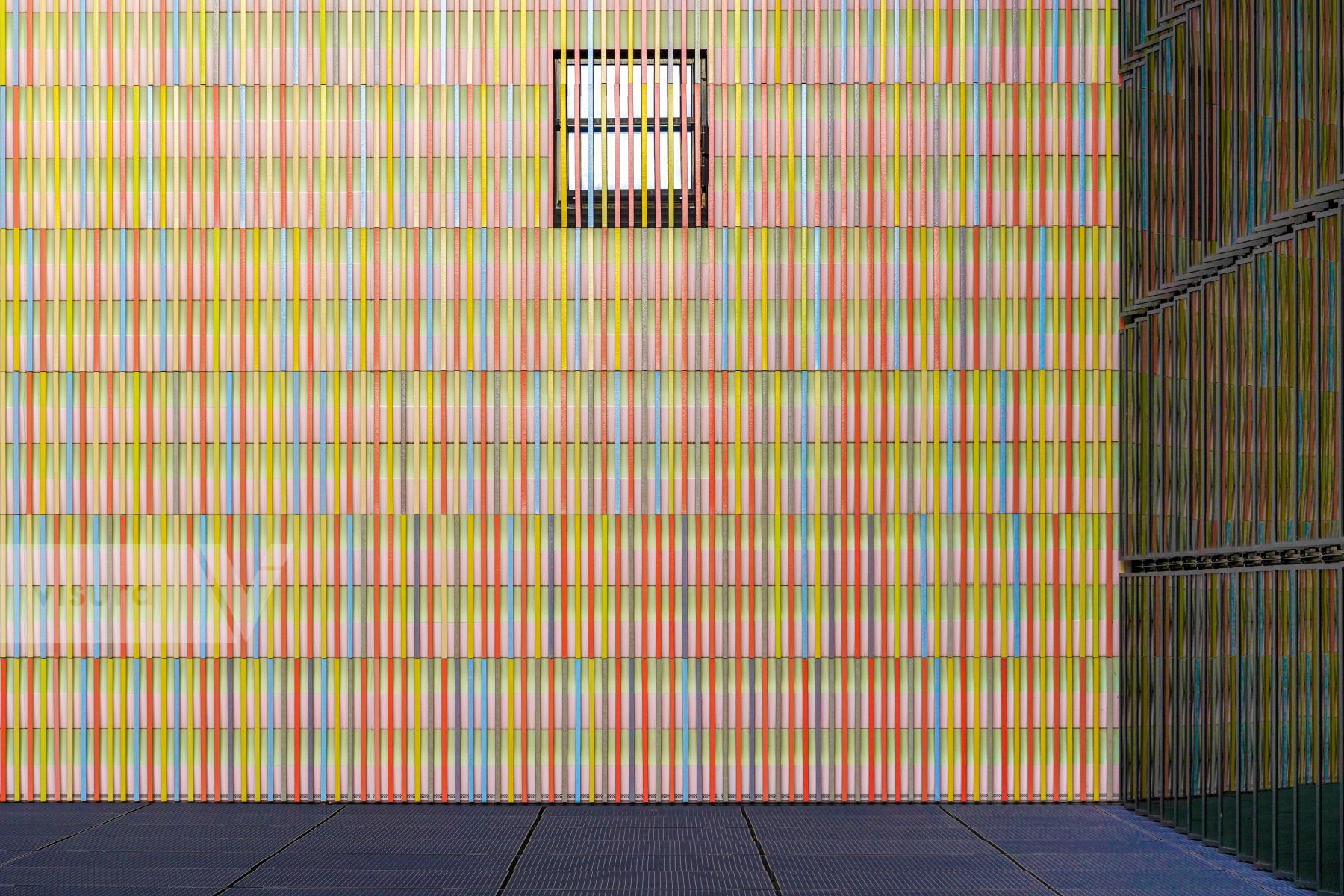
Munich Germany
# 3757
11/2022
A window in the colorful facade of the Brandhorst Museum. The facade is reflected on the right in the adjoining glass facade. The Museum of Modern and Contemporary Art is in the Kunstareal district of Maxvorstadt in Munich. The facade is designed in a total of 23 different colors, consisting of three different color families. A total of 36,000 square, vertically mounted ceramic rods are placed at some distance from each other in front of the concrete walls. Depending on the viewing angle and distance, the viewer is presented with different visual impressions. Architects Sauerbruch Hutton.
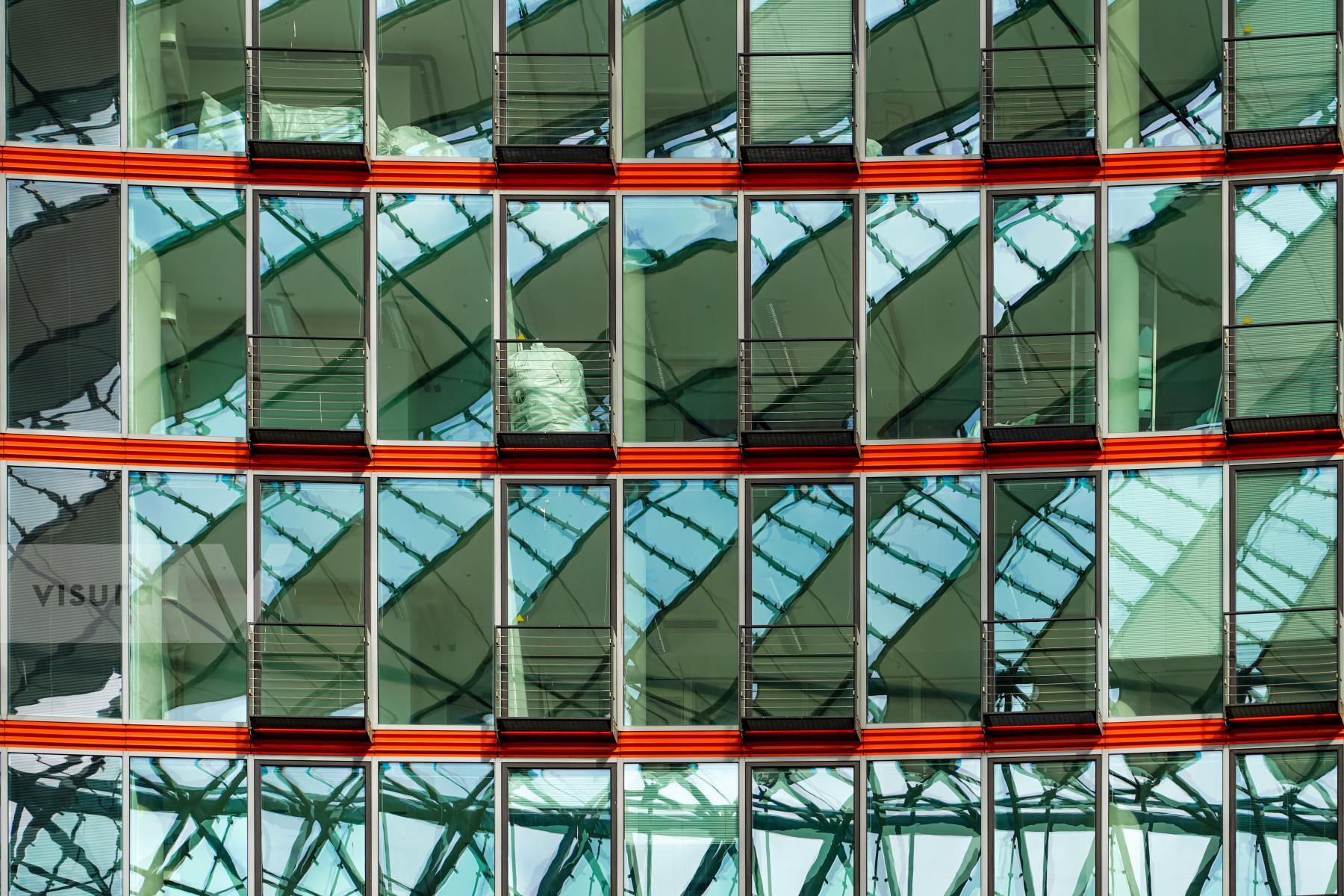
Berlin, Germany
# 3749
9/2022
Reflections in the glass facade of the Sony Center, a steel and glass-dominated building ensemble designed by architect Helmut Jahn at Potsdamer Platz in the Tiergarten district of Berlin's Mitte district.
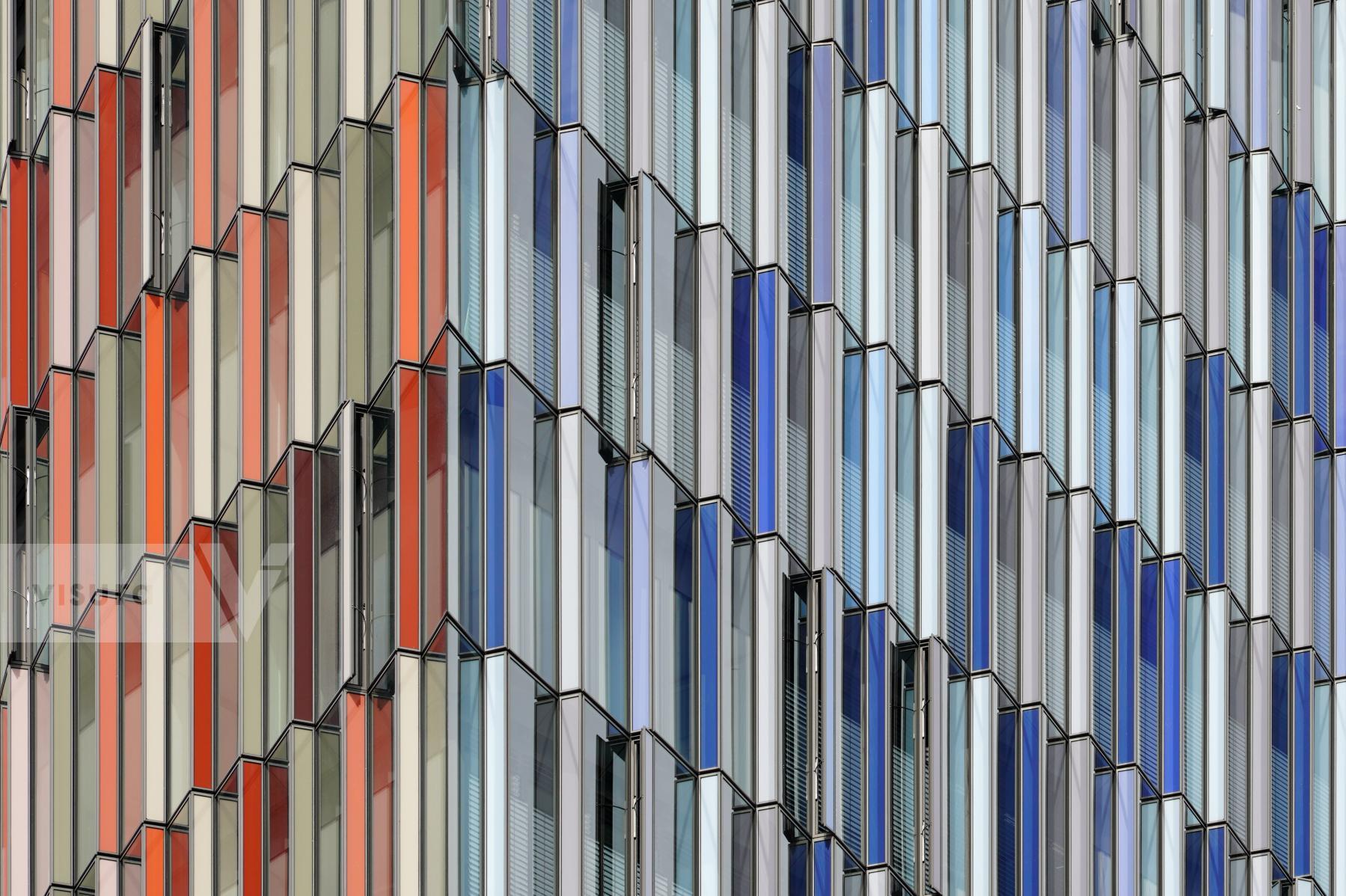
Frankfurt, Germany
# 3850
3/2023
Facade part of the KfW Westarkade, an Office building complex at Zeppelinallee Frankfurt, owned by KfW Bankengruppe, the German state-owned development bank. Architects Sauerbruch Hutton, Structural engineer Werner Sobek.

Zagreb, Croatia
# 3887
4/2023
Facade of the Hotel The Westin. Zagreb,

Frankfurt, Germany
# 3849
3/2023
Facade part of the KfW Westarkade, an Office building complex at Zeppelinallee Frankfurt, owned by KfW Bankengruppe, the German state-owned development bank. Architects Sauerbruch Hutton, Structural engineer Werner Sobek.
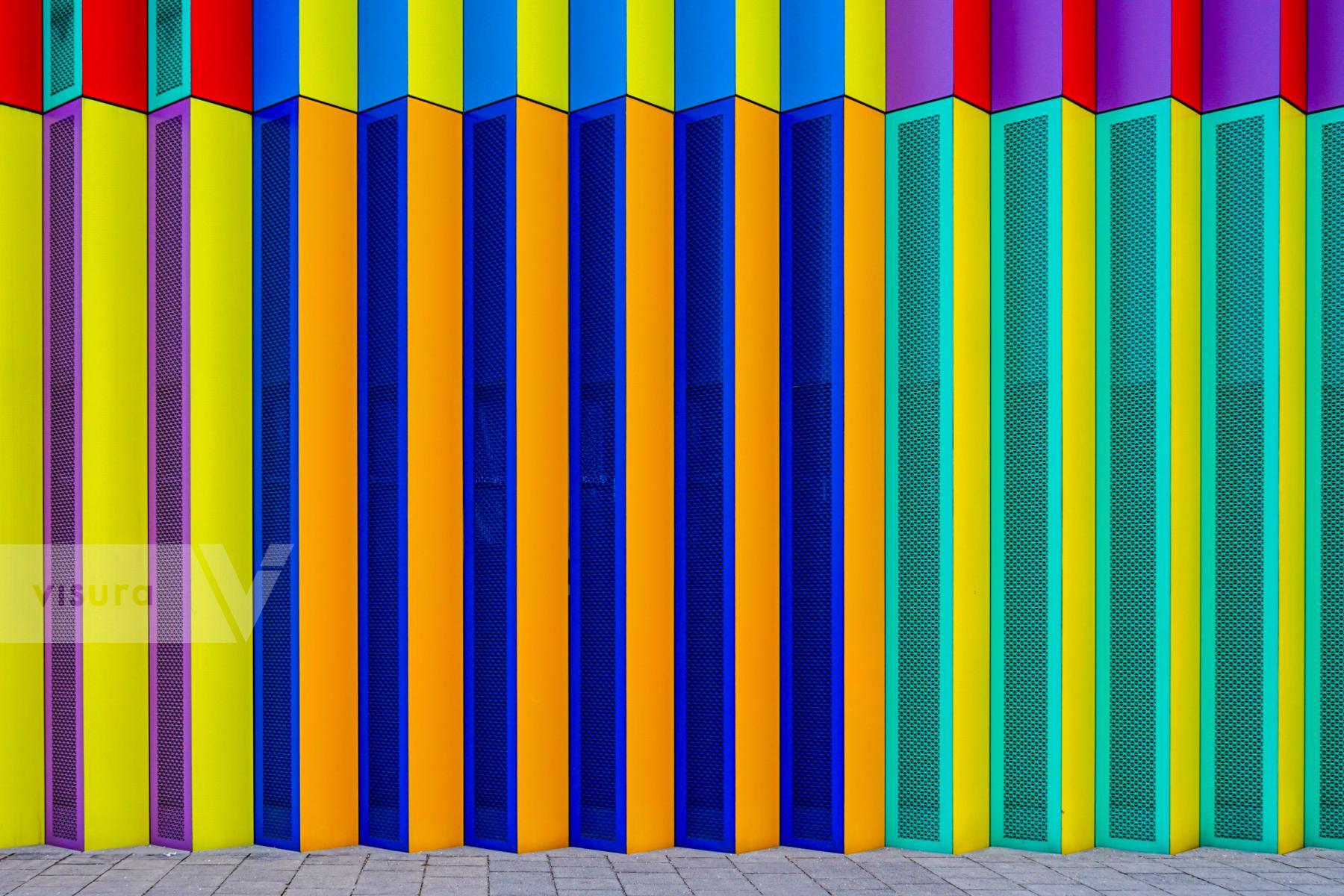
Munich, Germany
# 1310
2/2021
The MIRA Shopping Center opened in 2008 in the Munich district Nordhaide. The West, North, and northern half of the Eastern facades, was made of colored lacquered metal panels which were placed on the walls to form prisms. Since the sides of the prisms have different colors, the façade appears from the southwest and northwest in different colors. In between, a gradual transition takes place, so that the building changes dynamically as one passes by. In addition to the colored panels, the façade also contains panels made of polished aluminum, which reflect the sky and surrounding buildings. The façade construction was awarded with the “DGNB Gold Award for sustainable buildings" in 2009. The shopping centre was planned by Chapman Taylor. The responsible project architect there was Ruprecht Melder. Léon-Wohlhage-Wernik Architekten was responsible for the façade design.

Berlin, Magdebirg
# 3751
9/2022
House facade with mosaics, round windows and windows of the staircase.
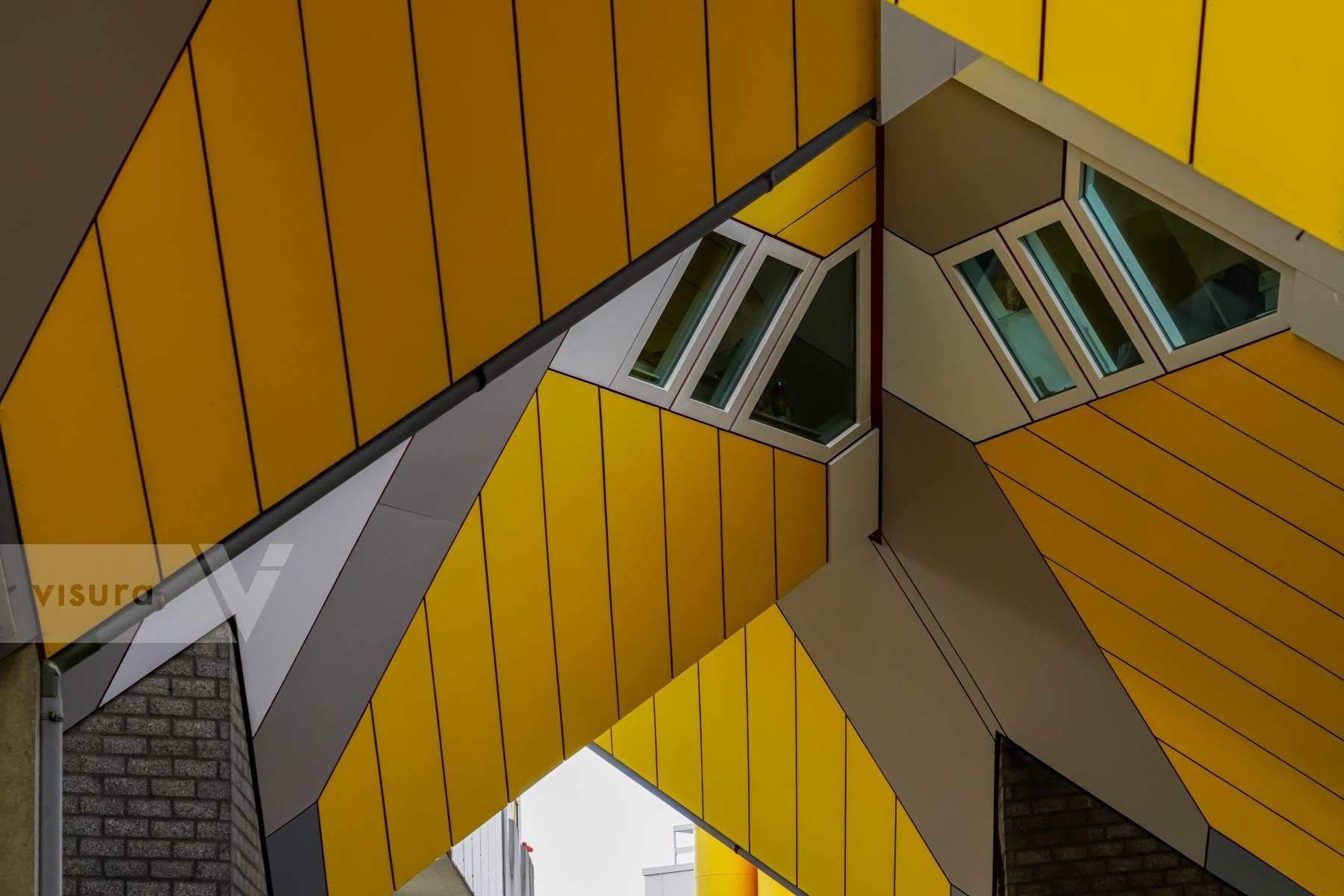
Rotterdam, The Netherlands
# 3725
5/2022
Geometric Living: The Kaleidoscope of Urban Dwelling
Enigmatic and vibrant, this photograph captures the famed cube houses of Rotterdam, a testament to architectural boldness. The image invites the viewer into a world where conventional verticals and horizontals are defied, offering instead a dynamic interplay of angles and planes. The iconic yellow facades, intersected by oblique lines, create a visual poetry that is both playful and precise. Designed by architect Piet Blom, these houses are an embodiment of conceptual creativity, each cube tilting and balancing on a vertex as if frozen mid-tumble, challenging our perceptions of space and the essence of home.
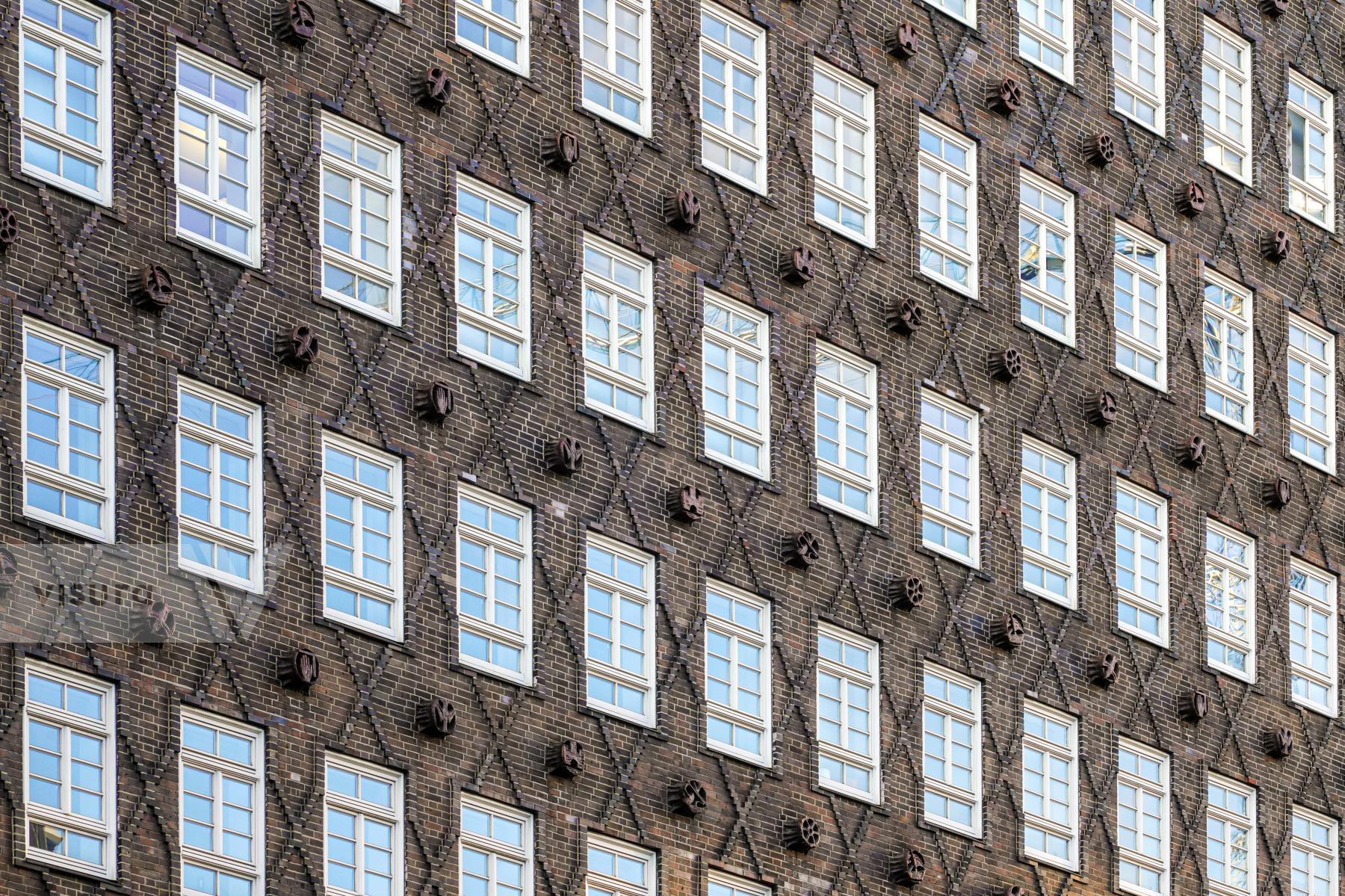
Hamburg, Germany
# 3697
8/2022
UNESCO World Heritage Site: Chilehaus Hamburg. Facade of the Chilehaus. The Chilehaus is a Kontorhaus built from 1922 to 1924 in Hamburg's Kontorhaus district. The architecture of Fritz Höger was exemplary for the brick expressionism of the 1920s, which was inspired by brick Gothic and expressionism. With its up to ten stories on a floor area of 5950 m², the building represents one of the first high-rise buildings in Hamburg. With its spire to the east, reminiscent of a ship's bow, it has become an icon of expressionism in architecture. In 2015, the Kontorhausviertel was designated a UNESCO World Heritage Site along with Hamburg's Speicherstadt warehouse district and the Chilehaus. UNESCO justification: Speicherstadt and the adjacent Kontorhaus district are two densely built urban areas in the centre of the port city of Hamburg. Speicherstadt, originally developed on a group of narrow islands in the Elbe River between 1885 and 1927, was partly rebuilt from 1949 to 1967. It is one of the largest cohe
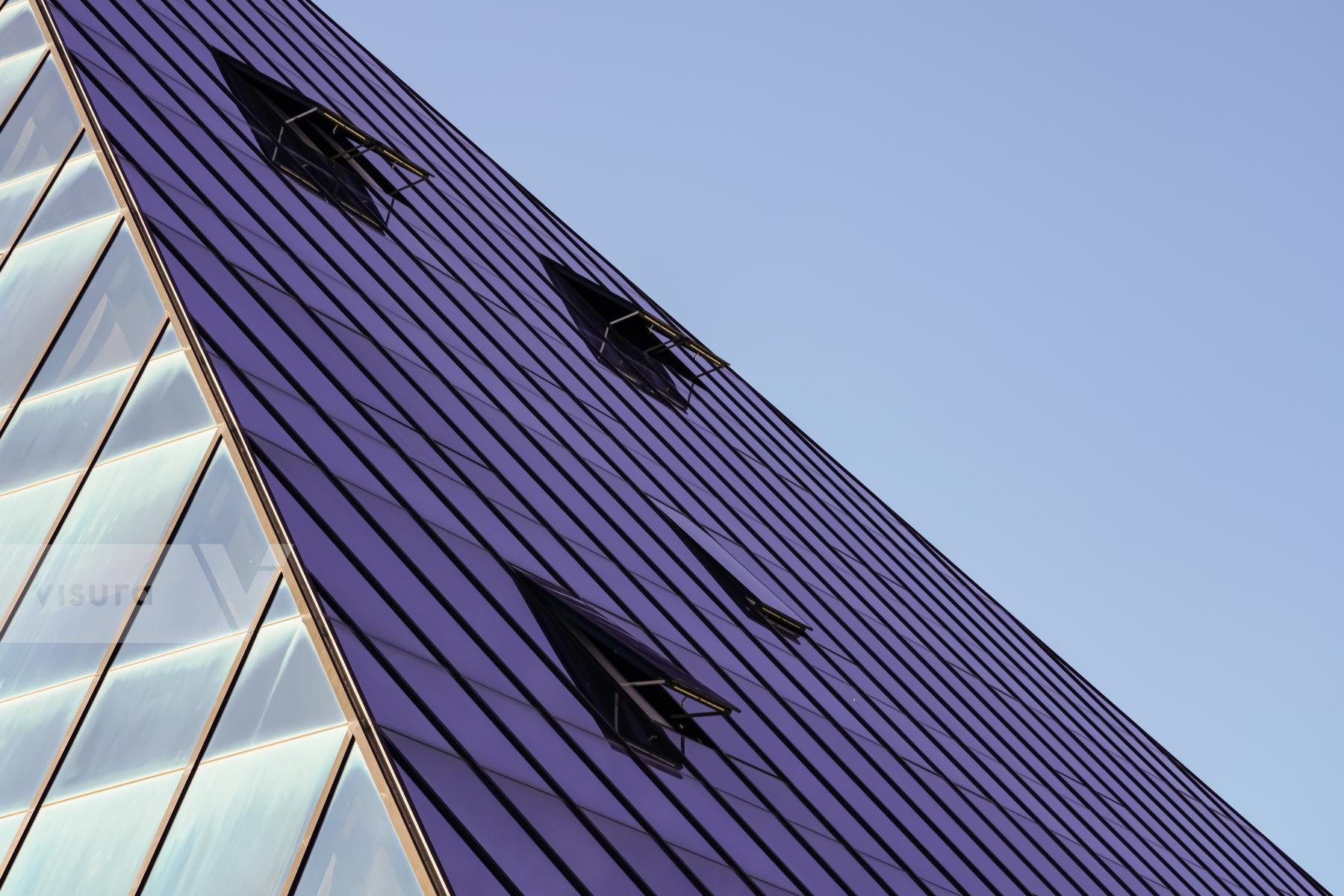
Fürth, Germany
# 3733
8/2022
The Glass Pyramid in Fürth. The 42 meter high glass pyramid was opened in 1994. The pyramid is a hotel with 101 rooms in the Fürth district of Kalbsiedlung in the form of a square pyramid made of glass. Glass and steel are the supporting elements of the building. The German Chancellors Helmut Kohl, Gerd Schröder and Angela Merkel have already stayed here at the Excelsior Hotel Nürnberg Fürth.

Munich Germany
# 3761
11/2022
The Brandhorst Museum of Modern and Contemporary Art in the Kunstareal district of Maxvorstadt in Munich has a colorful facade designed in a total of 23 different colors, consisting of three different color families. A total of 36,000 square, vertically mounted ceramic rods are placed at some distance from each other in front of the concrete walls. Depending on the viewing angle and distance, the viewer is presented with different visual impressions. Architects Sauerbruch Hutton.
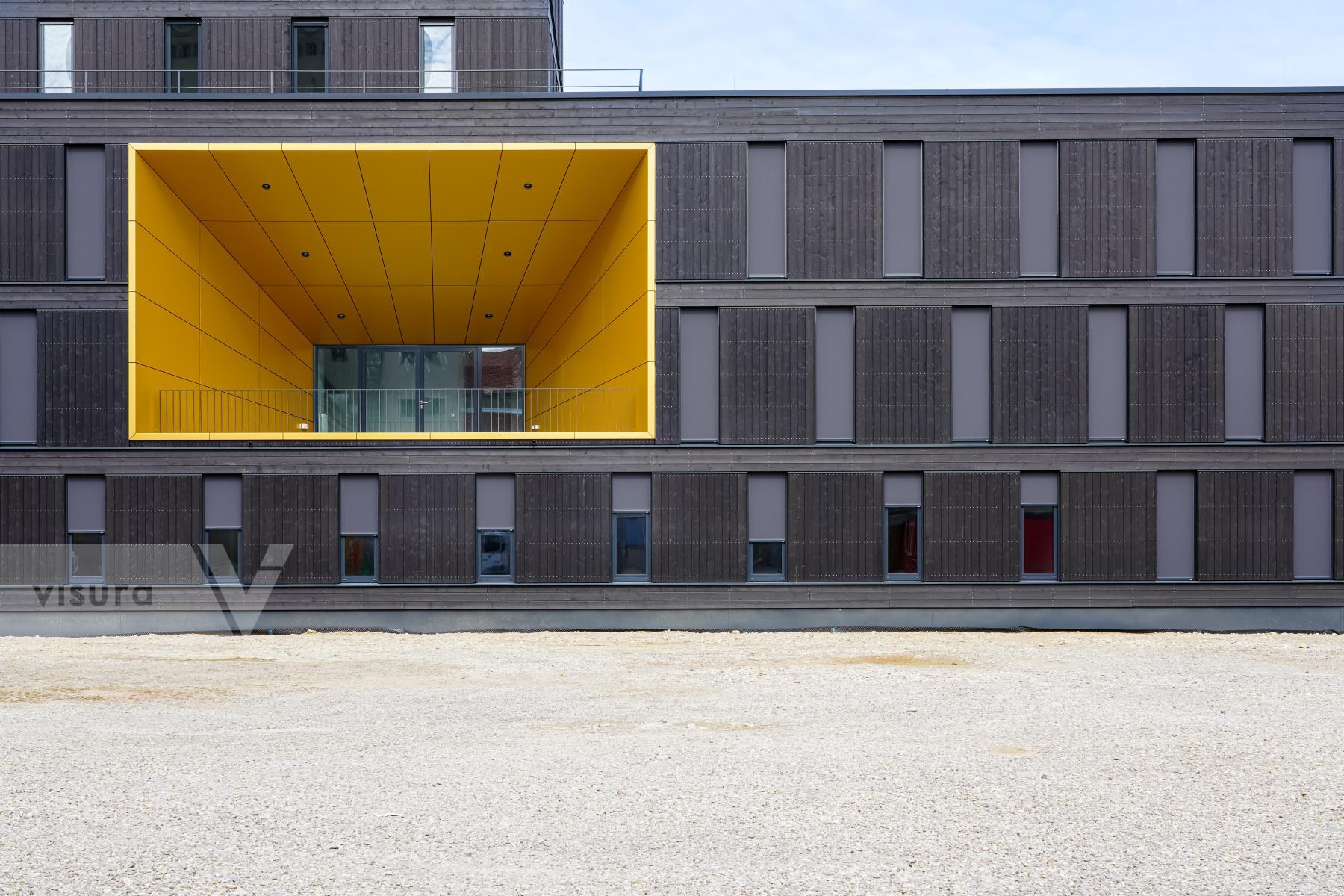
Augsburg, Germany
# 3705
9/2022
The Musikbox - Part of a Centre for Culture and Creative Industries on a Gasworks Site. Another step for the Gaswerk site in Augsburg towards a centre for culture and creative industries has been completed. The Musikbox, a new building for around 50 rehearsal rooms for musicians. In addition, rehearsal rooms that can be rented by the hour or day. The large loggia can be used by bands for concerts. The building was constructed using a sustainable, largely prefabricated timber hybrid construction method. The gasworks in Augsburg-Oberhausen is an industrial monument of European significance. It is one of the best-preserved complete ensembles of a gasworks. Since the end of 2015, the 8wners swa, together with the city of Augsburg, have been developing the approximately 70,000 square metre site with its historic industrial cathedrals into a centre for culture and the creative industries.
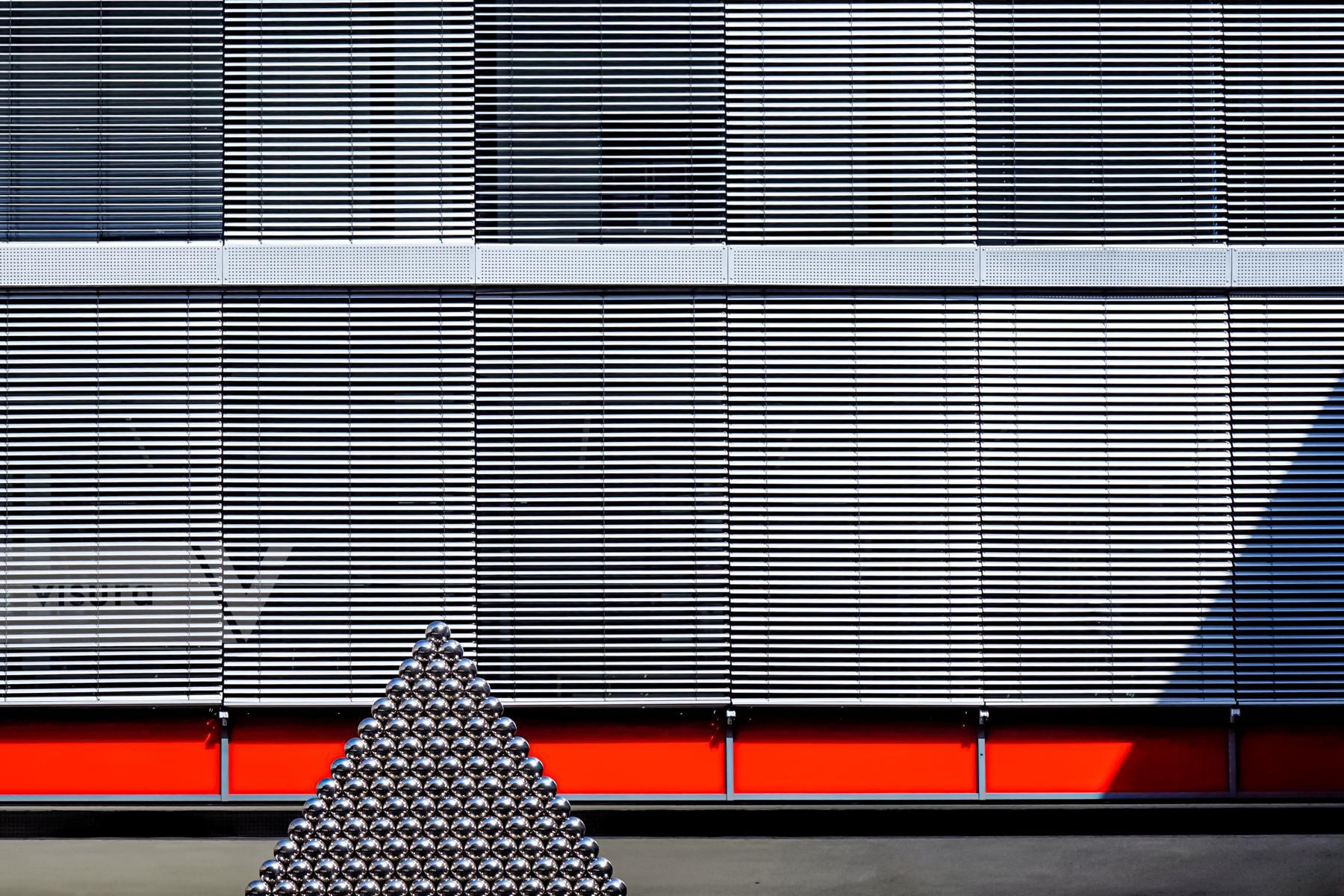
Augsburg, Germany
# 3700
8/2021
Geometric Harmony: on Academic Grounds
At the Augsburg University of Applied Sciences, a metal pyramid stands as a sentinel of knowledge, casting an angular shadow upon the edifice of intellect. Here, the interplay of light and metal weaves a transient tale on the facade of the computer center and library, a nexus of modern learning. The structure, a silent observer in the courtyard, invites contemplation, inspiring onlookers with its stark contrast against the methodical lines of the building—a tribute to the precision and innovation at the heart of education.
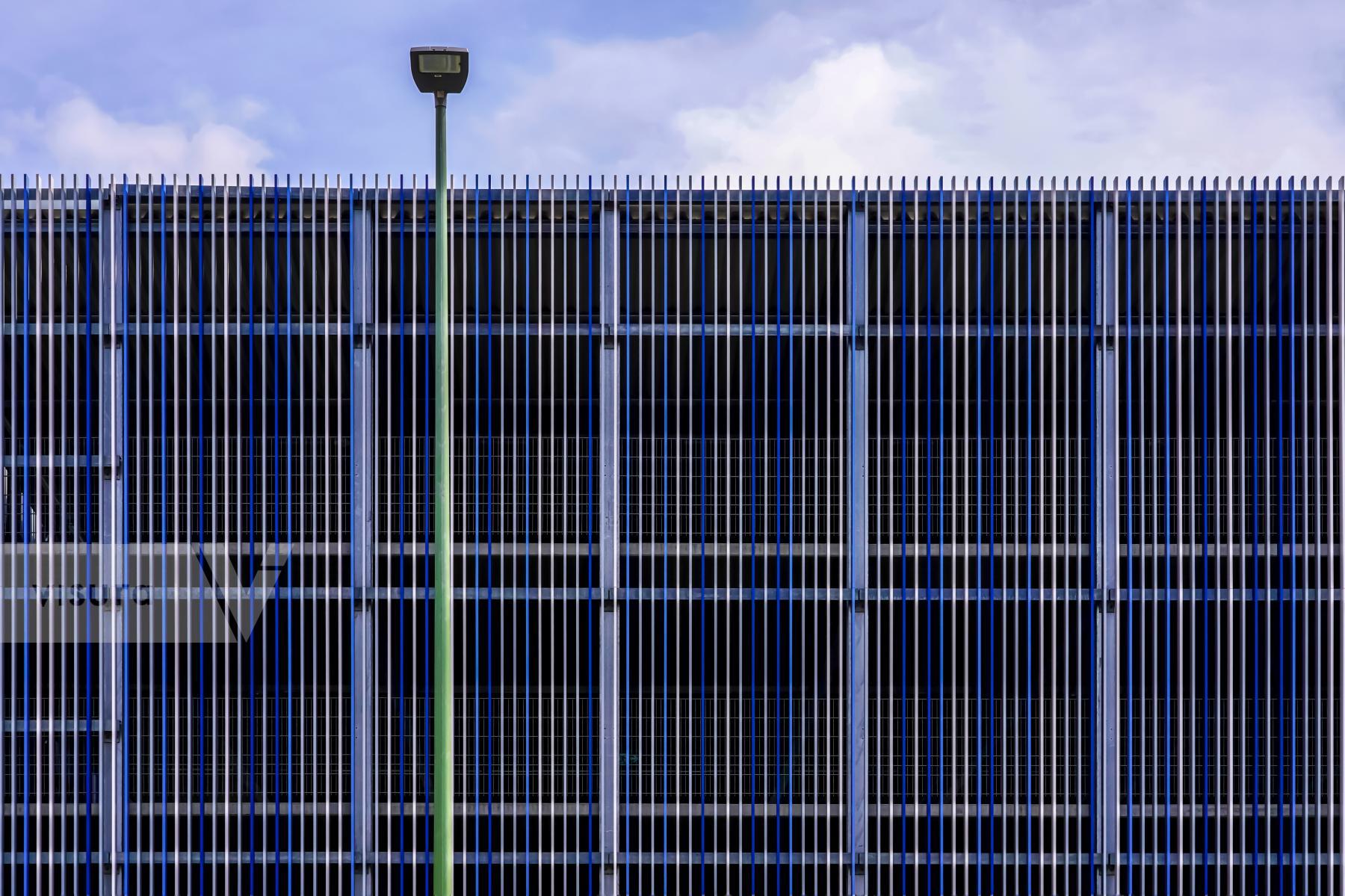
Memmingen, Germany
# 3666
8/2022
Colorfully designed lamella facade of a multistory parking lot at the Memmingen train station by architect Karin Kinzer.
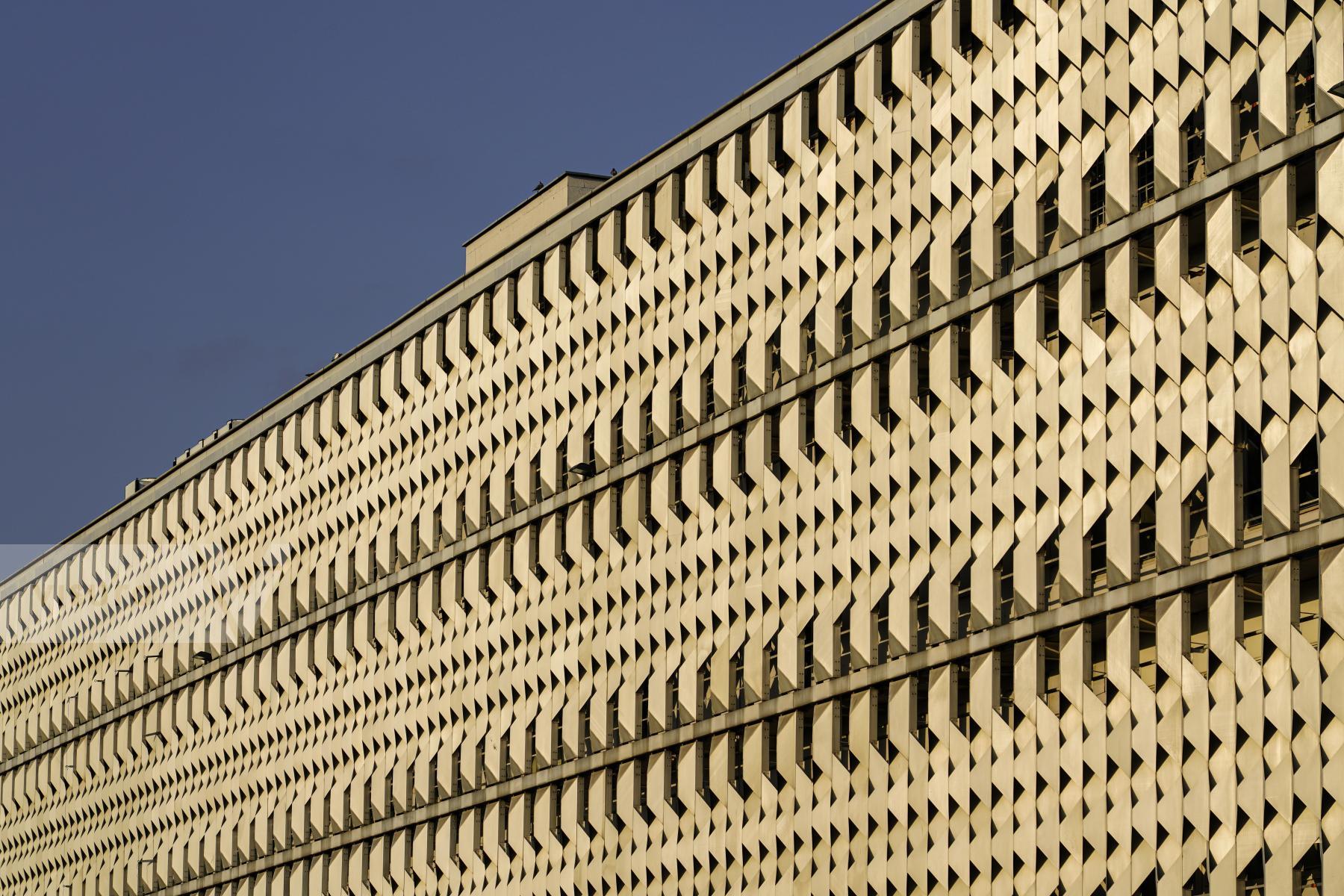
Magdeburg, Germany
# 3706
9/2022
Facade of a shopping centre.

Nuremberg, Germany
# 3537
7/2022
Architectural Harmony: A Symphony in Stone
The Meistersingerhalle in Nuremberg, captured here in a segment of its facade , is a tribute to the city’s rich musical history and its association with the Meistersinger tradition. The choice of natural stone tiles, with their variety of earthy hues, is a nod to the timeless art of meistergesang, where precision and natural talent combine to create enduring works. The structured yet seemingly spontaneous arrangement of the tiles reflects the improvisational yet skilled performances of the Meistersingers. This facade stands as an apt representation of Nuremberg’s historical significance and contemporary cultural pursuits, resonating with the lyrical spirit of Wagner’s famous opera.

Memmingen, Germany
# 3704
8/2022
Shopping Centre Facade and Roof.
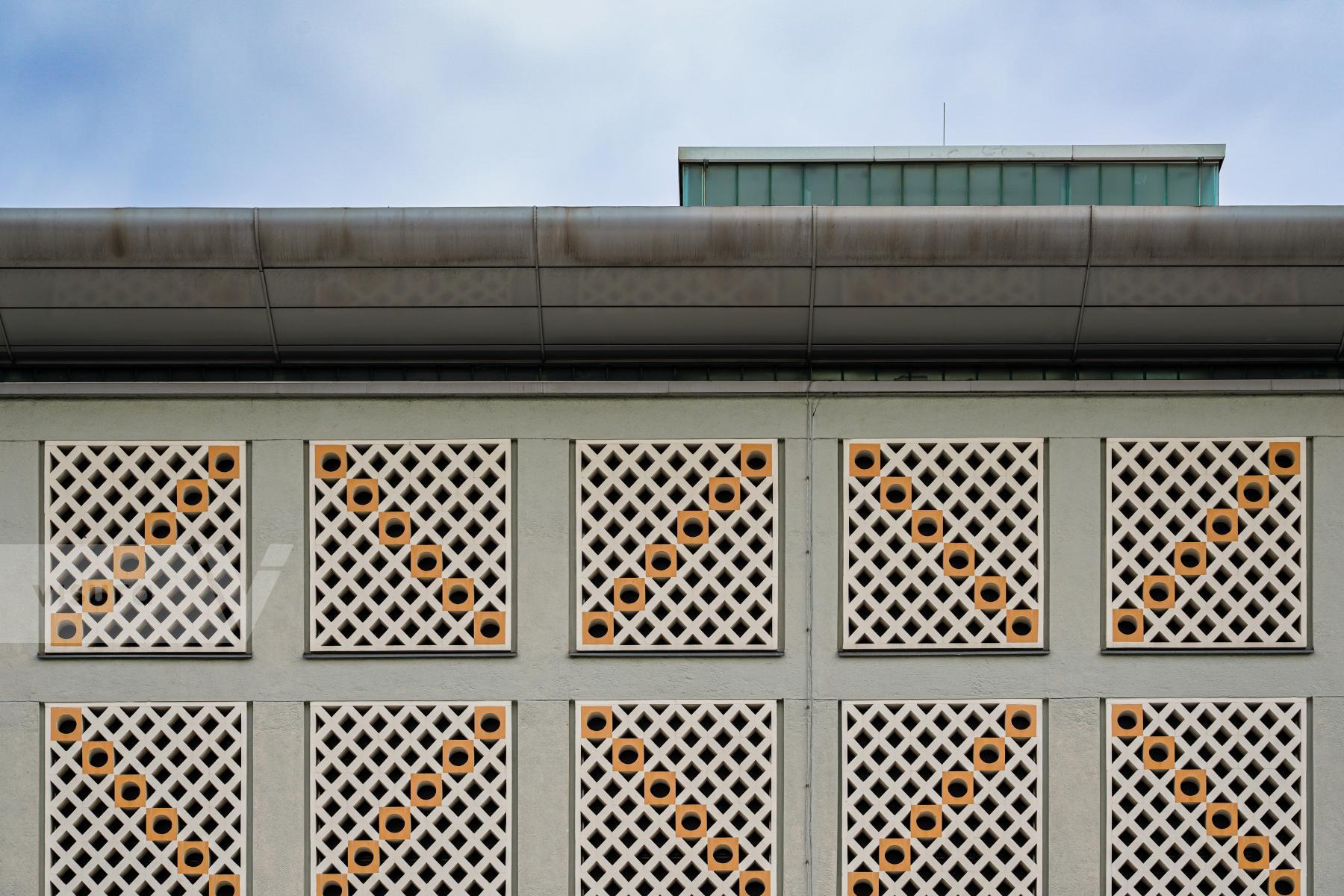
Trier, Germany
# 3653
7/2022
In the house Weberbach 25 the current building of the city library, city archive and treasury was built from 1955 to 1960 according to plans by Alfons Leitl. It consists of a five-story cube covered by a concrete latticework The building is listed as a historical monument.The Scientific Library of the City of Trier is a public scientific library with valuable holdings from the Middle Ages and modern times. The Stadtarchiv is the municipal archive responsible for the city of Trier. In the treasure chamber of the Trier City Library and City Archives, a fascinating look into the art and culture of the Middle Ages and early modern times is open to all those interested in history.
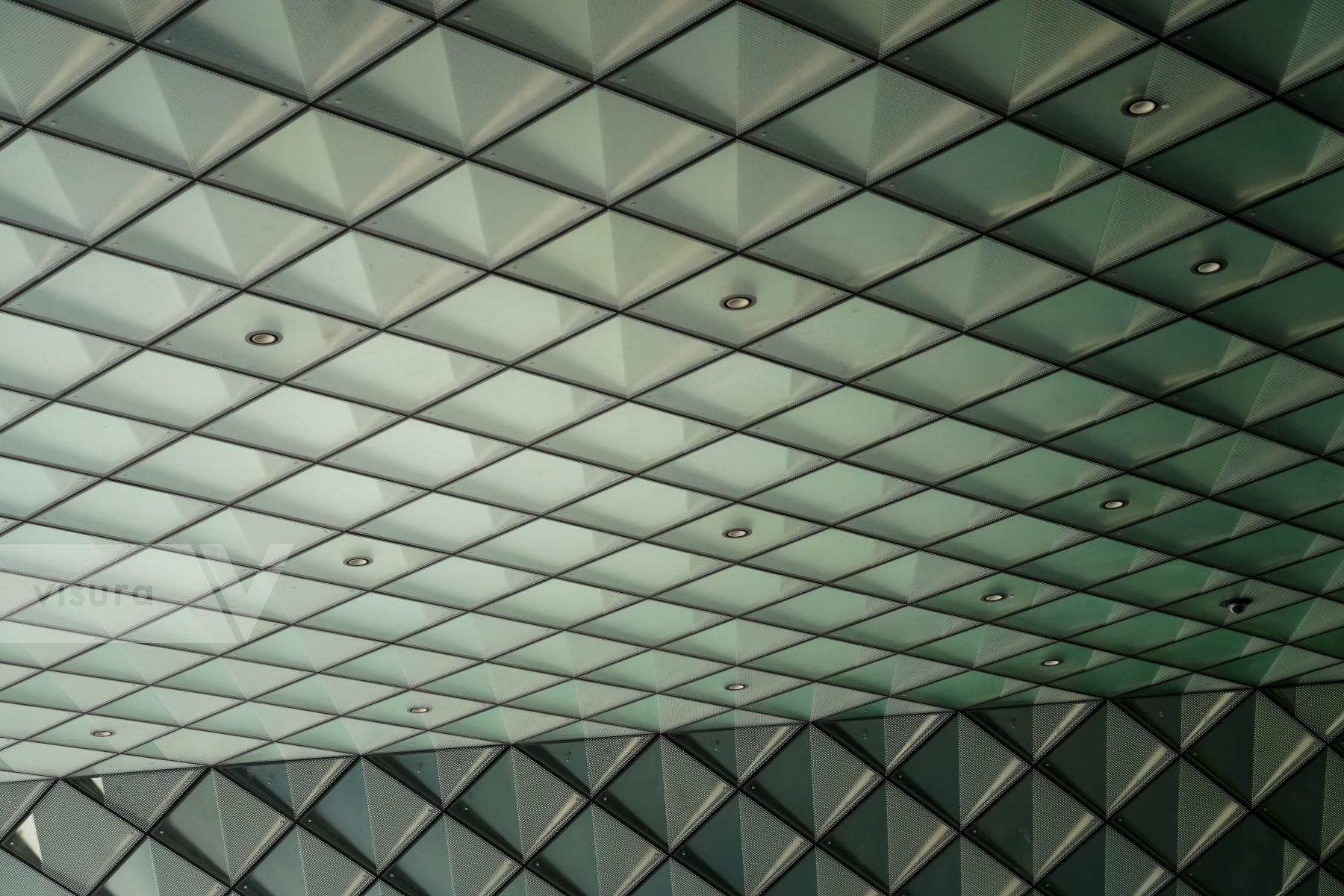
Berlin, Germany
# 3410
4/2022
Close-up of ceiling elements and facade elements of the Museum Futurium Berlin. The facade is a shell of folded metal reflectors and ceramic printed cast glass.
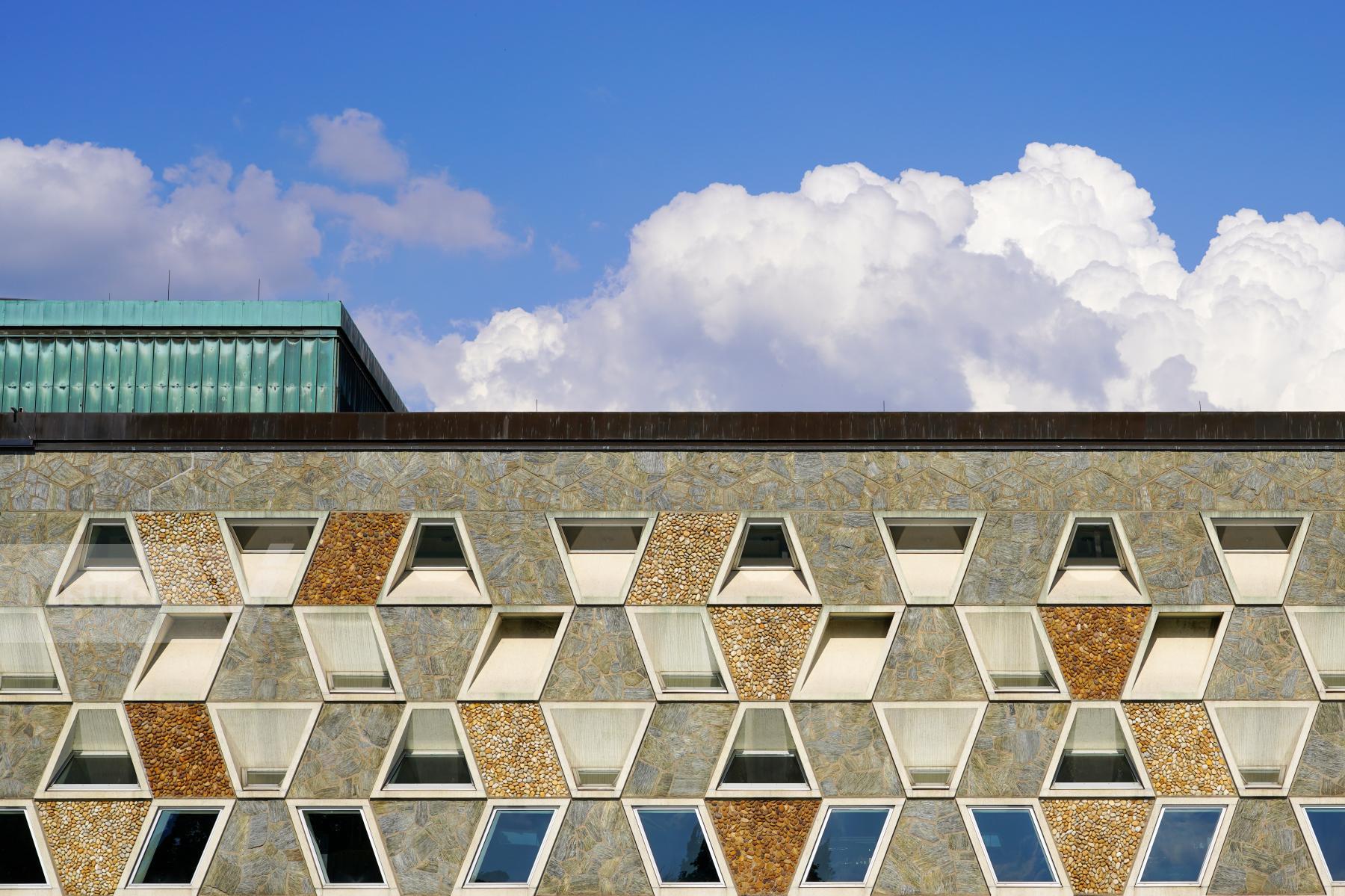
Luxembourg City, Luxembourg
# 3638
7/2022
Facade of the Grand Théâtre de la Ville de Luxembourg. The theater is a performance venue for theater, opera and dance in Luxembourg. The theater was opened in 1964. The architect of the building is Alain Bourbonnais.
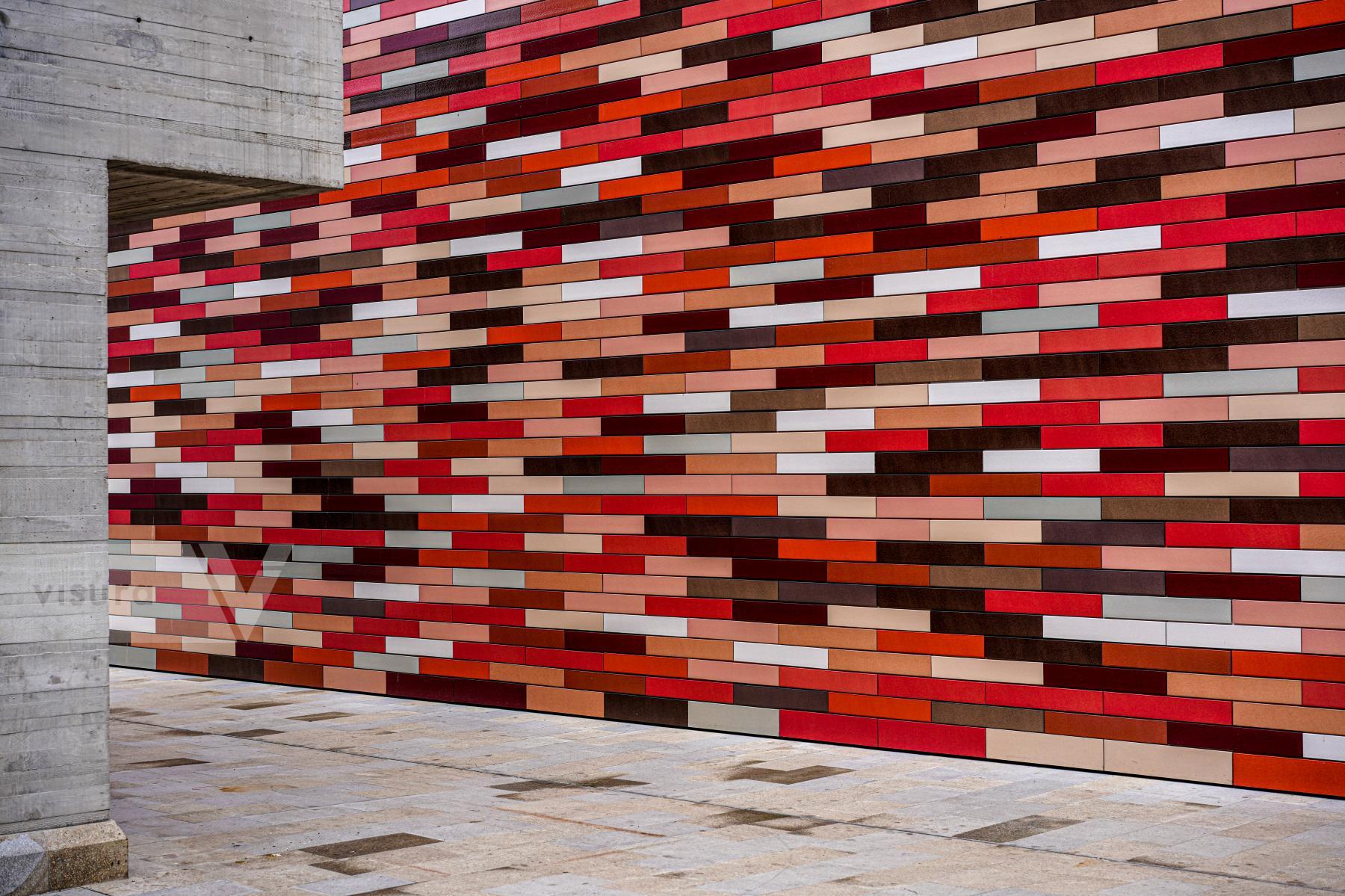
Venice, Italy
# 2747
11/2021
Part of the colorful facade of the Museum M9, architect Sauerbruch Hutton.The facades of the museum are decorated with ceramic elements that shine in thirteen colors.
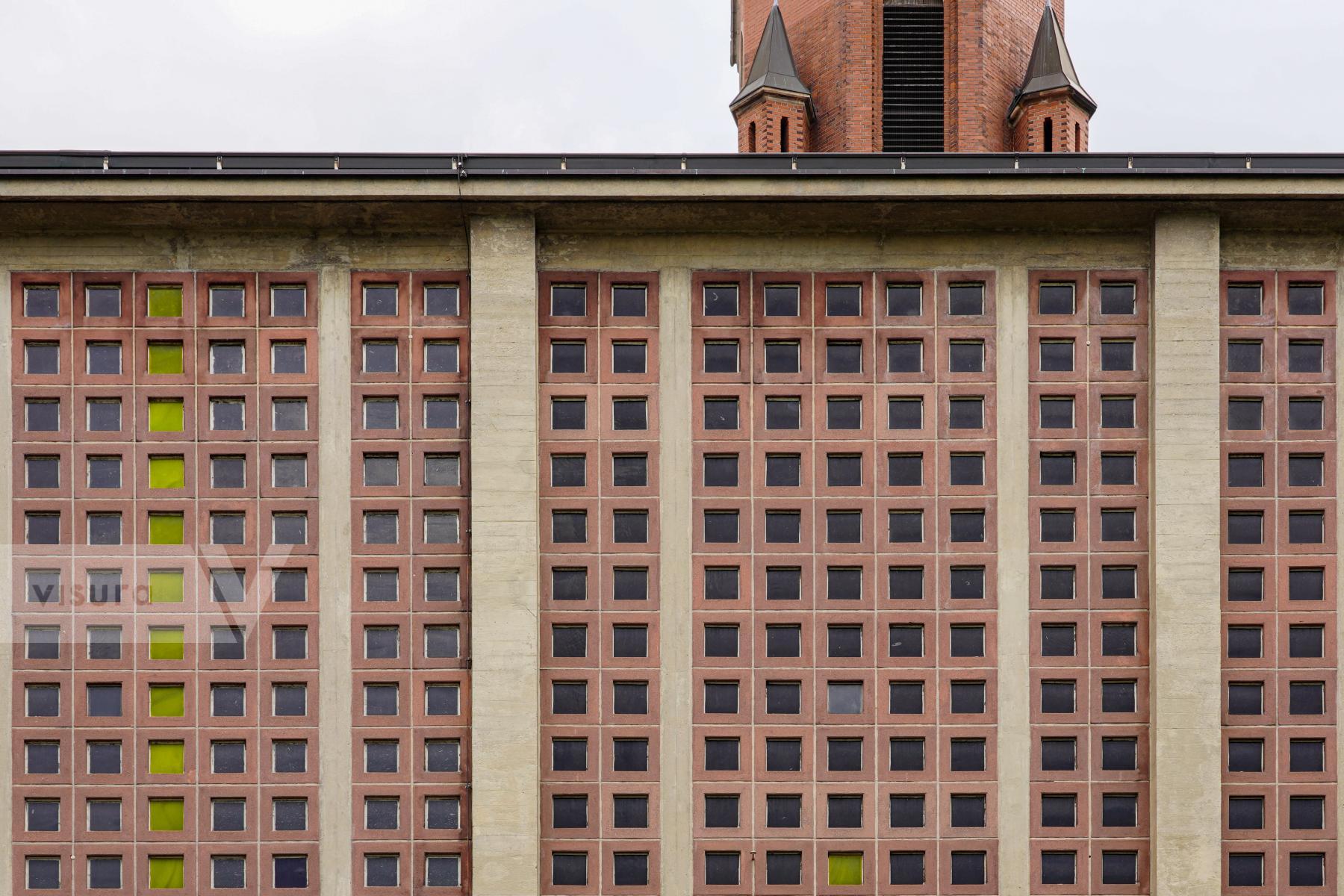
Nuremberg, Germany
# 3540
7/2022
Facade of the modern extension of the Evangelical Lutheran Christ Church in Nuremberg-Steinbühl. In the background the tower of the church built in 1891-94.
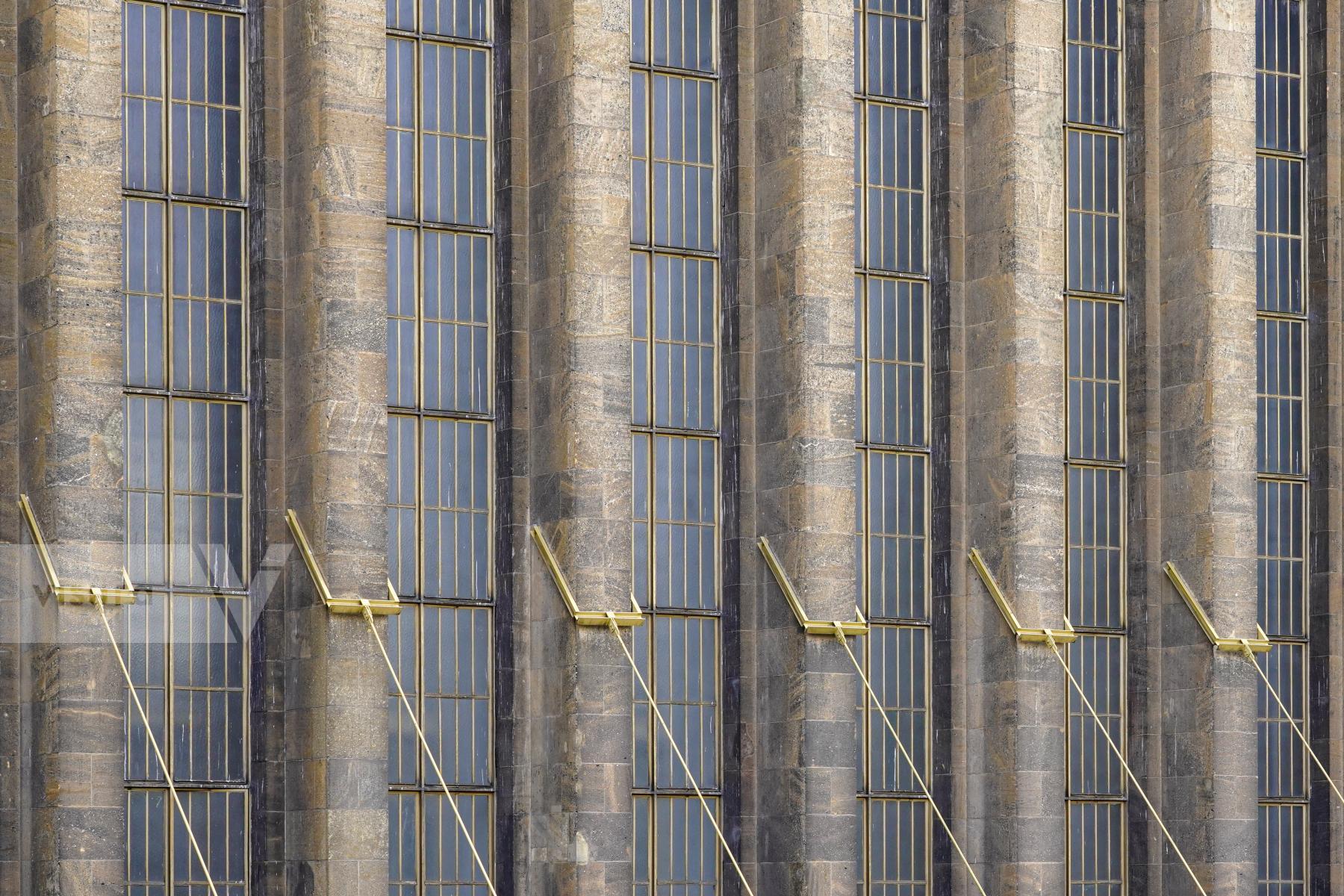
Berlin, Germany
# 3361
5/2022
High halls, stone cladding and columns signaled Tempelhof Airport's claim to status.In the 1930s, the traffic volume of the old Tempelhof Airport was at the top of European air traffic, ahead of Paris, Amsterdam and London.
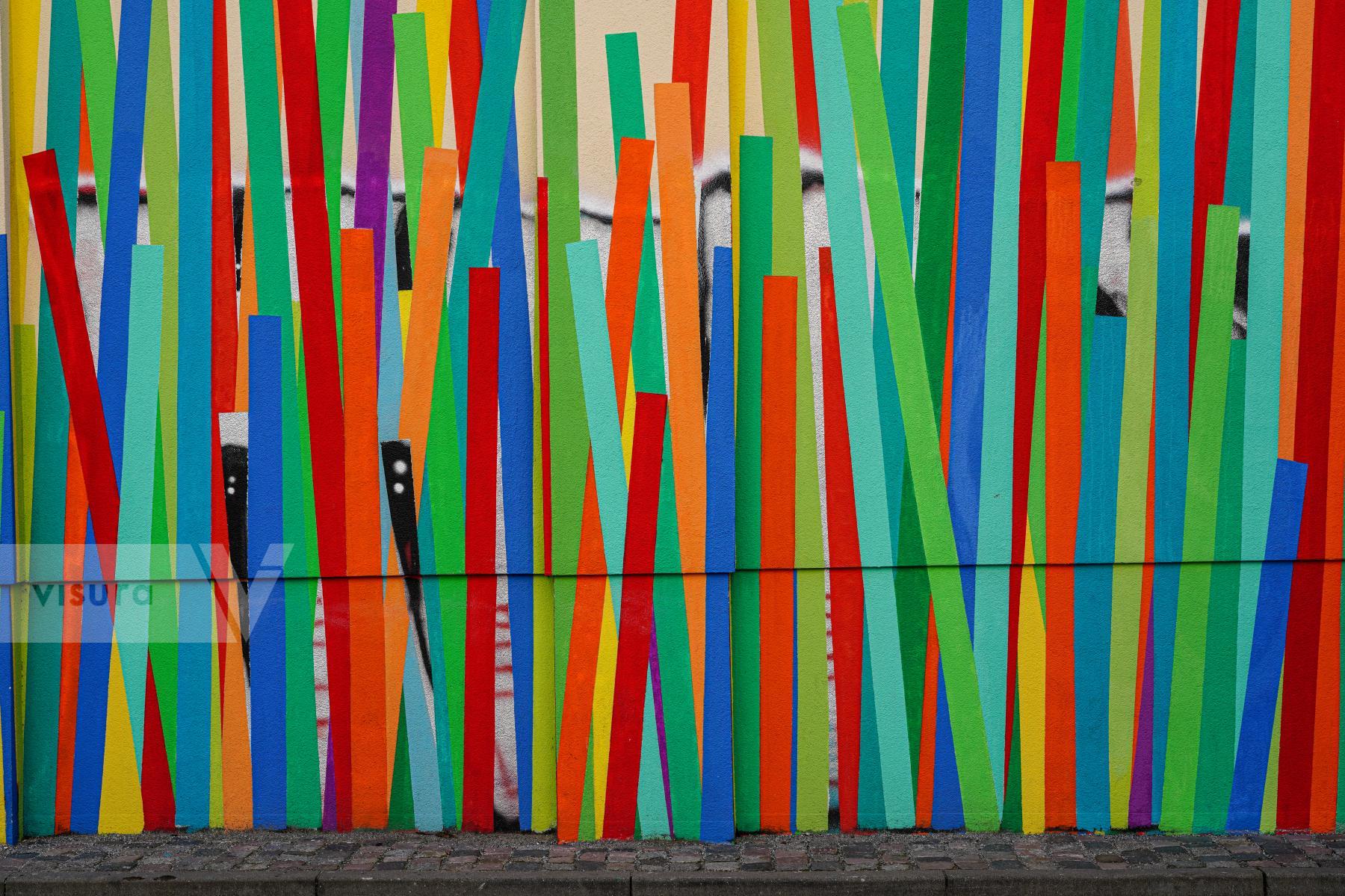
Dresden, Germany
# 3192
3/2022
A colorful house side wall facade painted in striped pattern.

Regensburg, Germany
# 3484
6/2022
The House of Bavarian History, a museum of new Bavarian history in the old town of Regensburg. Architects Wörner, Traxler, Richter.

Trier, Germany
# 3650
7/2022
Geometric Echoes: Tapestry of Modernism
The facade of the former Horten department store in Trier, now Galeria Kaufhof, is a mid-century modern marvel, meticulously composed of Horten tiles. Each tile, with its distinctive “H” shape symbolizing Horten, creates a hypnotic grid that reflects the innovative spirit of its era. Conceived by Helmut Rhode in 1961, this architectural signature boasts both ceramic and aluminum tiles, each measuring 50 cm square, with a depth that adds dimension to the flat surface. The repeating pattern, an interplay of light and shadow, brings the building to life, marking it as an icon of post-war modernity and a visual symphony of form and function.
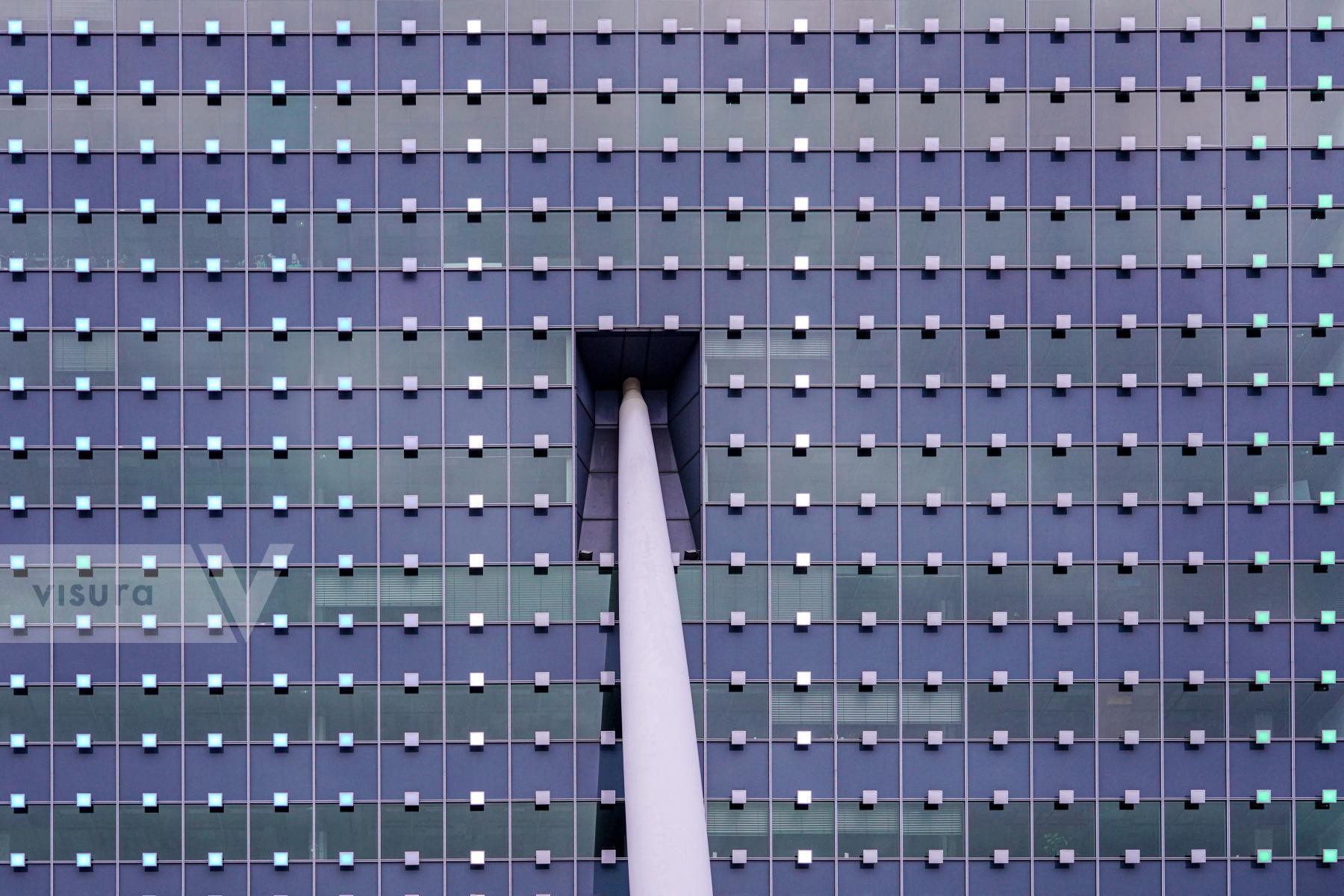
Rotterdam, The Netherlands
# 3492
5/2022
Facade detail of the the 96 meter high Toren op Zuid, also known as KPN Tower, a high-rise office building in Rotterdam. It houses the telecommunications company KPN.

Dresden, Germany
# 3228
3/2022
The former GDR Centrum department store with the honeycomb facade designed by Hungarian architects Ferenc Simon and Ivan Fokvari. Now Karstadt.
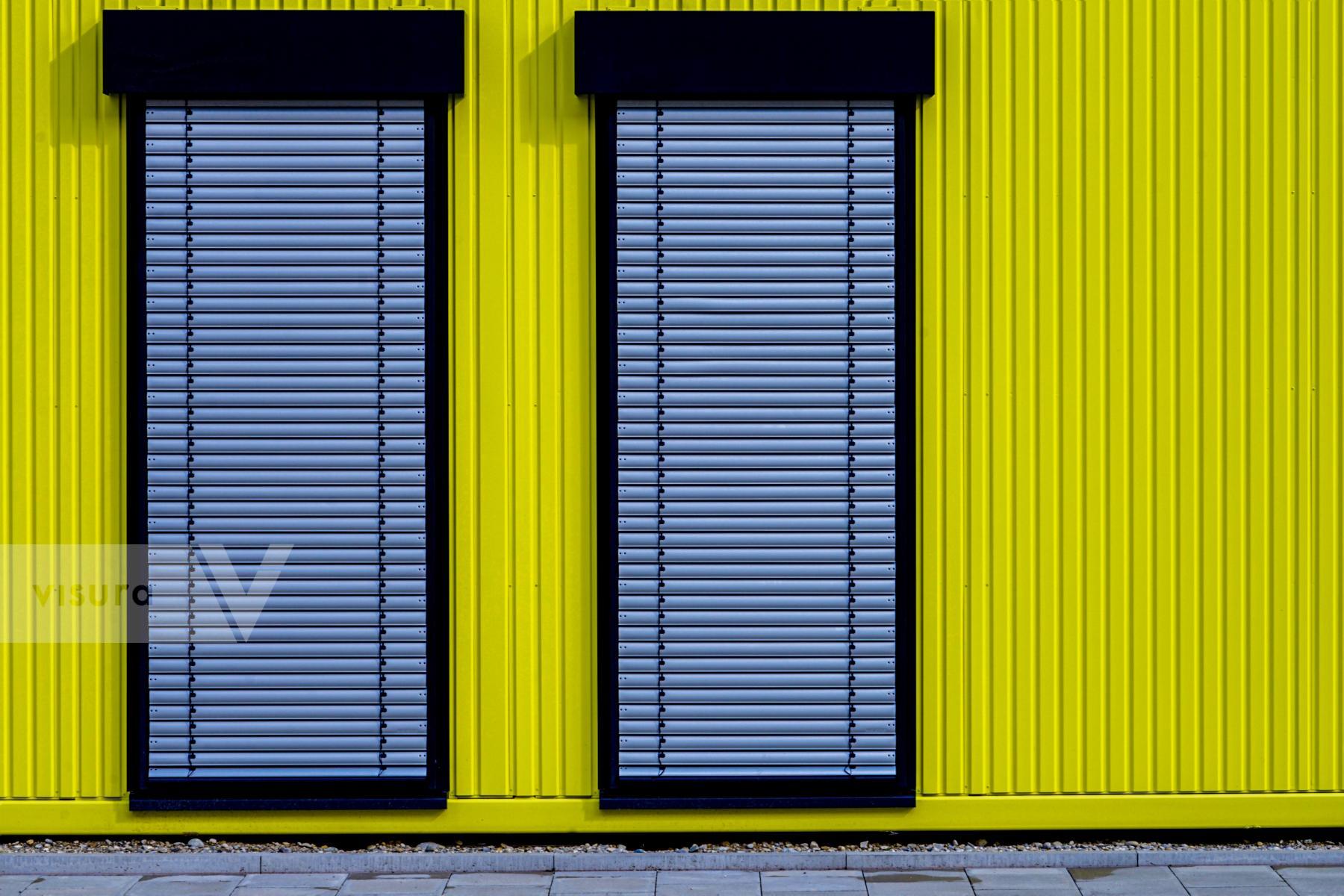
Munich, Germany
#1965
8/2021
Closed windows of a studio container in the Schwabing district.
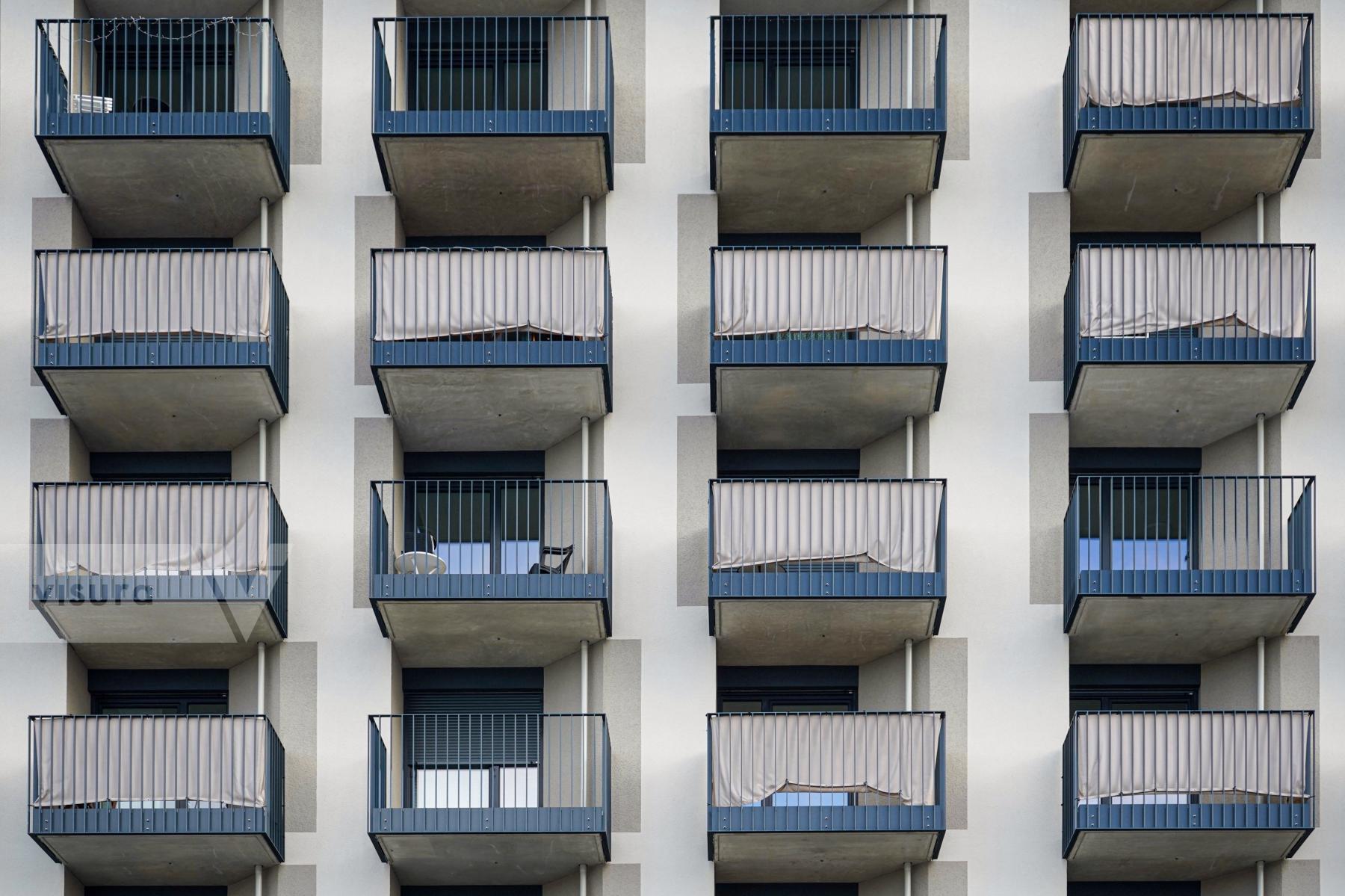
Munich, Germany
# 2946
1/2022
Facade of a residential building with balconies.
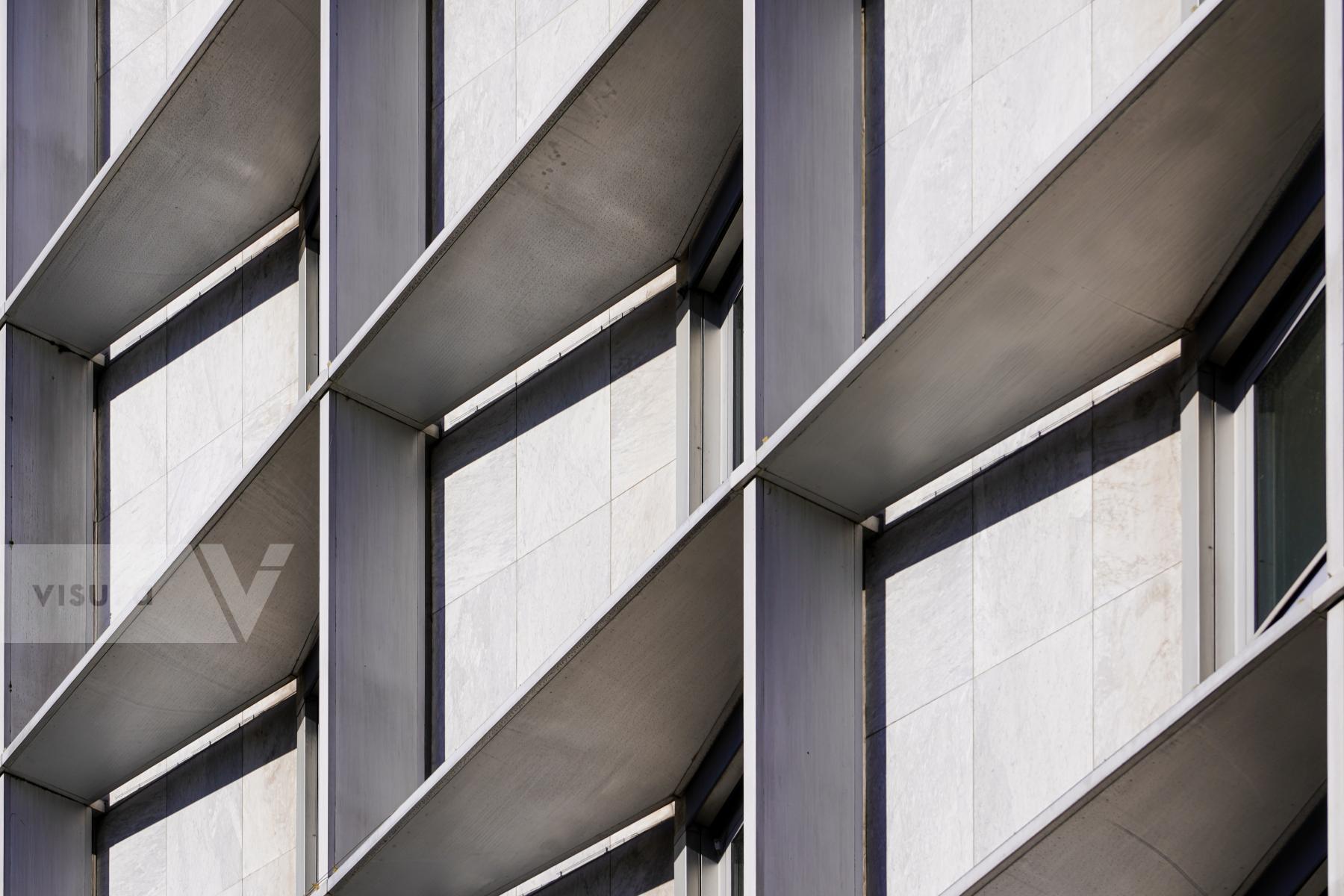
Stuttgart, Germany
# 3839
3/2023
Facade detail of the Hotel am Schlossgarten, a luxury hotel in Stuttgart. It belongs to the hotel chain Althoff Hotels.

Munich, Germany # 4161
2/2024
Architectural Symphony in Color. A detailed view of the vibrant MIRA Shopping Center facade, celebrated for its sustainable design. This image captures a segment of the MIRA Shopping Center’s exterior, a structure that stands out for its environmental sustainability and striking visual design. Each panel, a different hue, combines to form a visual symphony of color, evoking a sense of rhythm and vibrancy. The facade’s design, a harmonious blend of form and function, was masterminded by Chapman Taylor and Ruprecht Melder, with Léon Wohlhage Wernik Architekten contributing to the facade’s innovative design. Their collective efforts were recognized when the building received the prestigious “DGNB Gold Award for sustainable buildings” in 2009, highlighting the building’s commitment to ecological building standards and its contribution to the aesthetic landscape of the surrounding area.
Purchase your Fine Art Photo PrintBuy your Licenses
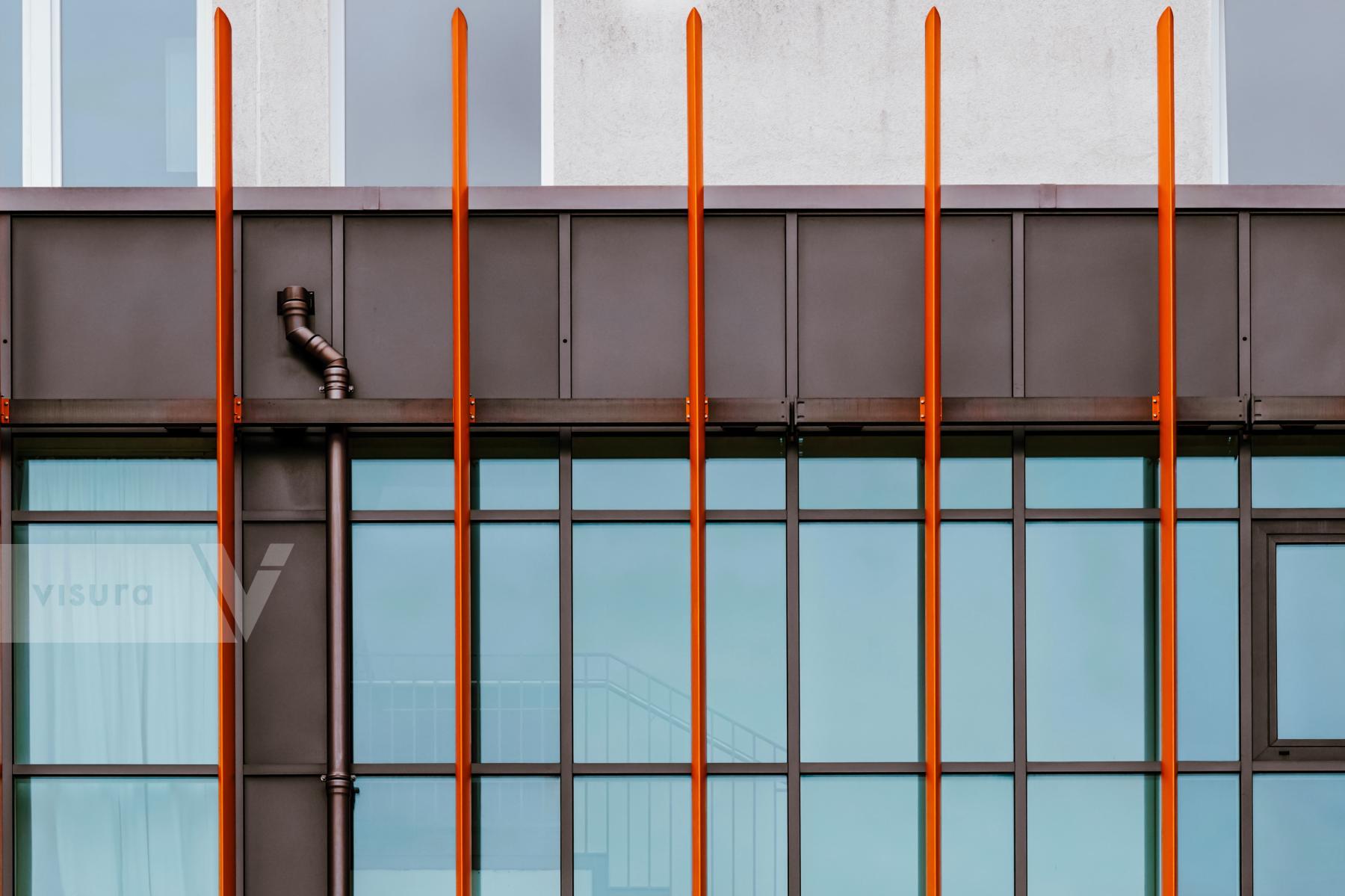
Gauting, Germany# 4189
3/2024
Ascending Symmetry
A glimpse into the pulse of a medical center, where the confluence of functionality and design breathes life into the structure. The vivid orange beams accent the clinical coolness, mapping the pathways of healing journeys within. The image captures the exterior of a medical center, characterized by a harmonious blend of color and form. Prominent vertical orange elements stand out against the muted tones of the building, offering a vibrant contrast that symbolizes vitality amidst the clinical environment. The building’s facade exhibits a clean, modern design, with the glass reflecting the intricate dance of light and shadow, emphasizing transparency and openness in the realm of healthcare architecture. The visual interplay between the cool glass and warm orange hues creates a dynamic yet orderly appearance, reflecting the precision and warmth that one hopes to find within the walls of such an institution.
Purchase your Fine Art Photo PrintBuy your License
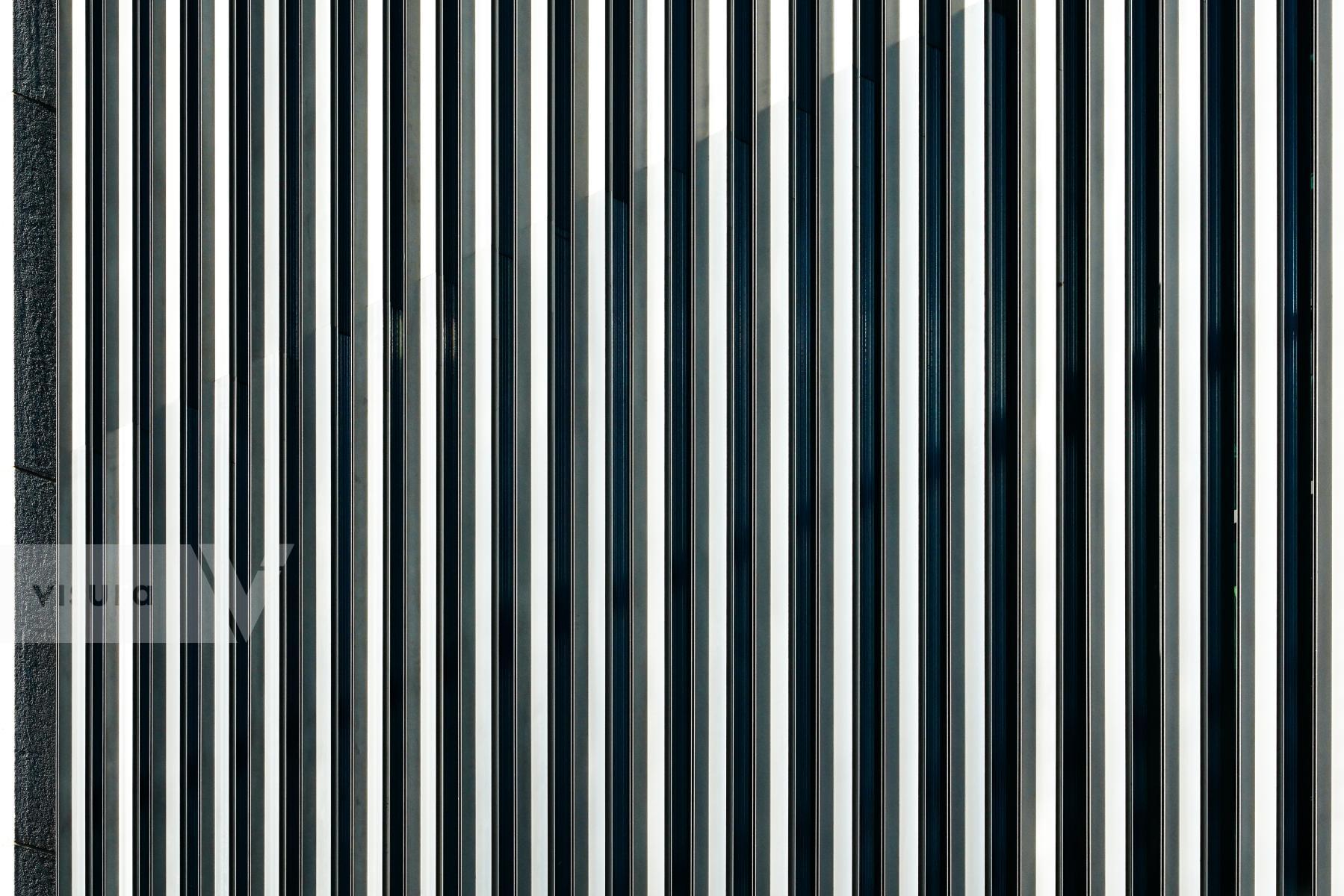
Wiesbaden, Germany# 4184
8/2023
Urban Stripes: Verticality
A rhythmic composition of vertical lines adorns the facade of a modern building, a testament to architectural symmetry and urban design. The facade of the building presents a visual symphony of verticality, a testament to the grace of modern architecture. As sunlight plays across its surface, the lines dance between the tangible and the illusory, creating a mesmerizing pattern that evokes the pulse of city life. The stark contrast of light and shadow casts an orderly array of stripes, each a silent guardian of the stories unfolding within. This image captures the essence of urban design - order within complexity, a patterned oasis in the heart of the concrete jungle.
Purchase your Fine Art Photo PrintBuy your License

Düsseldorf, Germany# 4078
7/2023
Linear Elegance: Transparency and Privacy
This facade presents a study in modern architectural harmony, showcasing a blend of transparency and privacy. Upon the canvas of academia, this facade of Heinrich Heine University Düsseldorf stands as a testament to the architectural poetry of precision. Lines and layers converge in a tapestry of silver and shadow, each slat and window a verse in the silent sonnet of learning. The building whispers the language of progress, its facade an intersection where light meets intellect, and structure becomes an echo of thought.
Purchase your Fine Art Photo PrintBuy your License
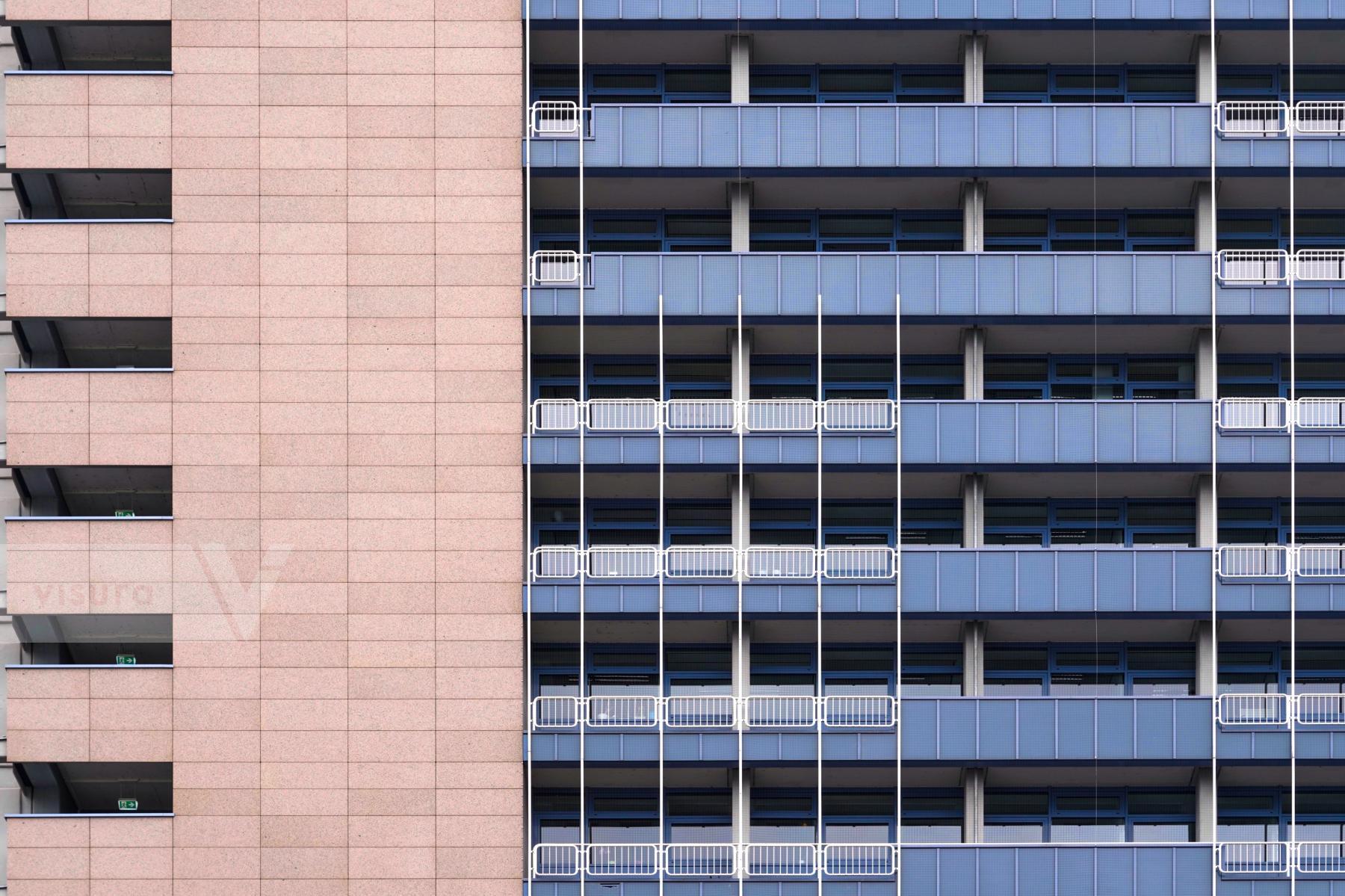
Koblenz, Germany# 4107
12/2023
Facade Harmony: Dual Design in Koblenz Residence
A single residential building in Koblenz showcases a dual facade design, blending solid beige concrete with a patterned balcony side, embodying the versatility of urban architecture. This photograph captures the striking dual facade of a Koblenz residential building. One side offers a plain beige concrete finish providing a stark minimalist appeal, while the other side features a patterned arrangement of balconies, accented with white railings, infusing a sense of rhythm and liveliness into the structure.
Purchase your Fine Art Photo PrintBuy your License
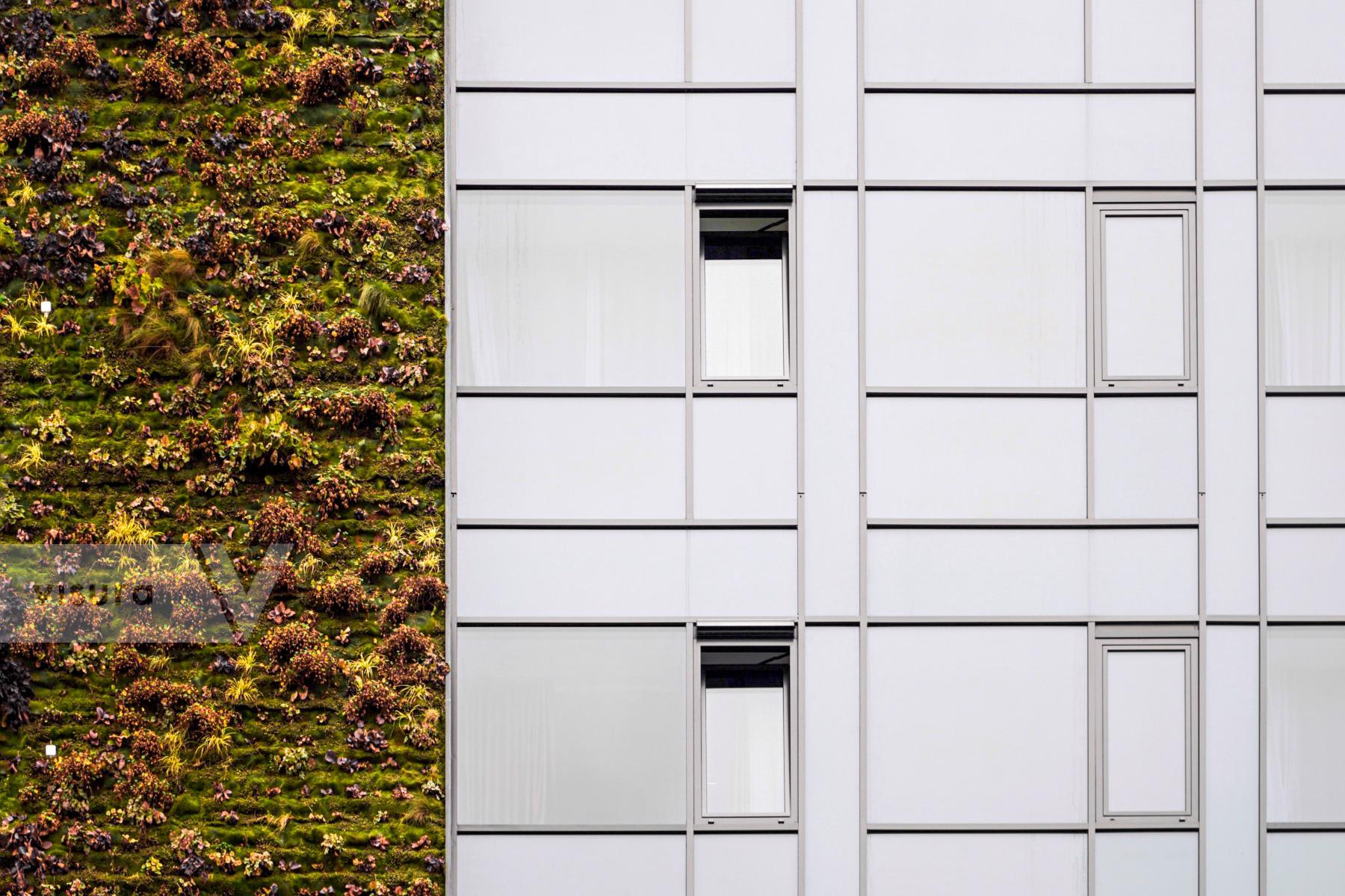
Koblenz, Germany# 4108
12/2023
Living Wall: Green Facade
In Koblenz, the fusion of architecture and nature comes to life in this commercial high-rise with a partially greened facade, juxtaposing lush plantings against sleek modern panels. This image features the innovative greening of a commercial high-rise building in Koblenz, where a living wall composed of 3045 plants creates a vibrant contrast with the adjacent white panels. Located at the intersection of Clemensstrasse and Görgenstrasse, the building's facade brings a touch of nature to the urban landscape, reflecting a commitment to environmental integration within commercial architecture.
Purchase your Fine Art Photo PrintBuy your License



































































